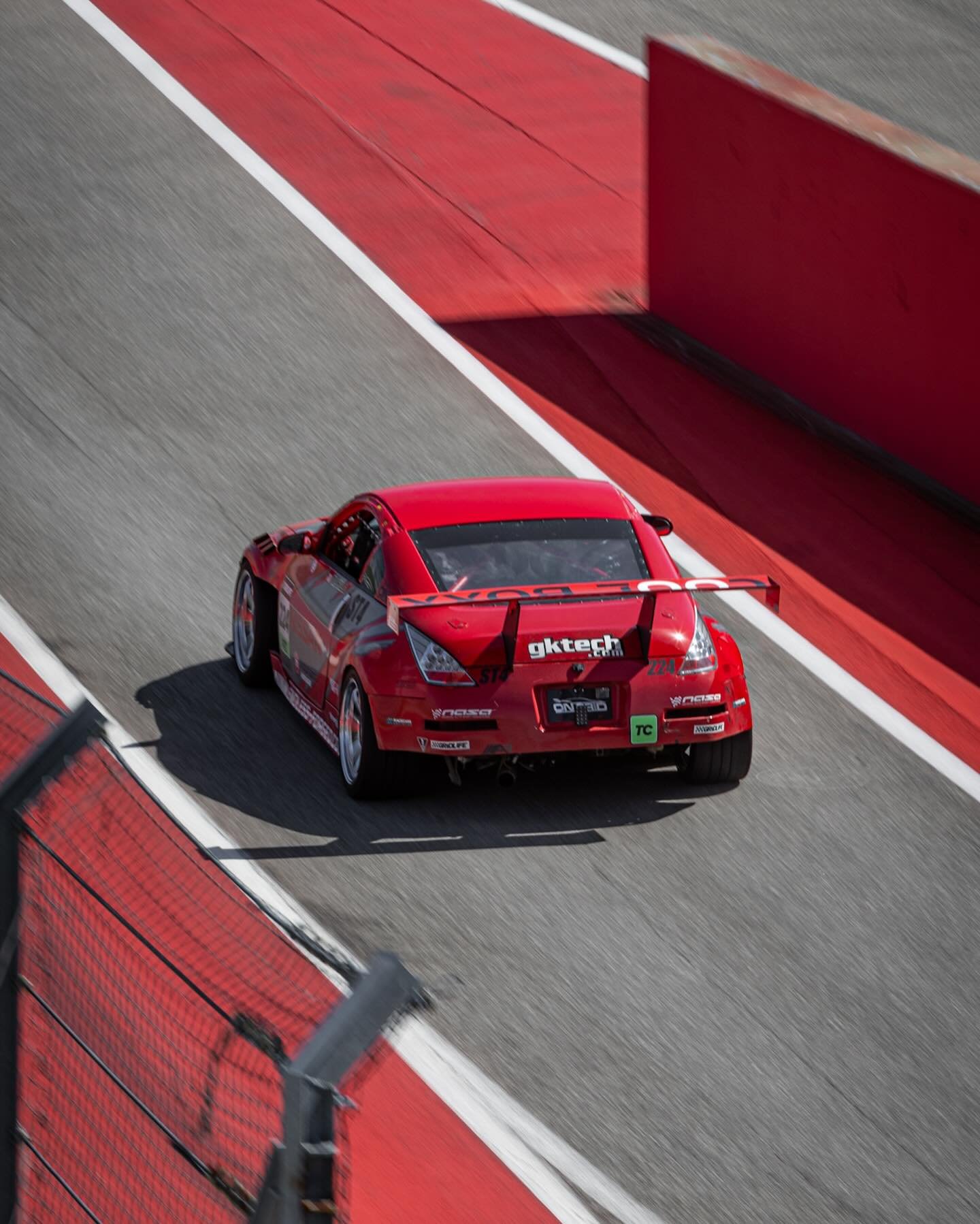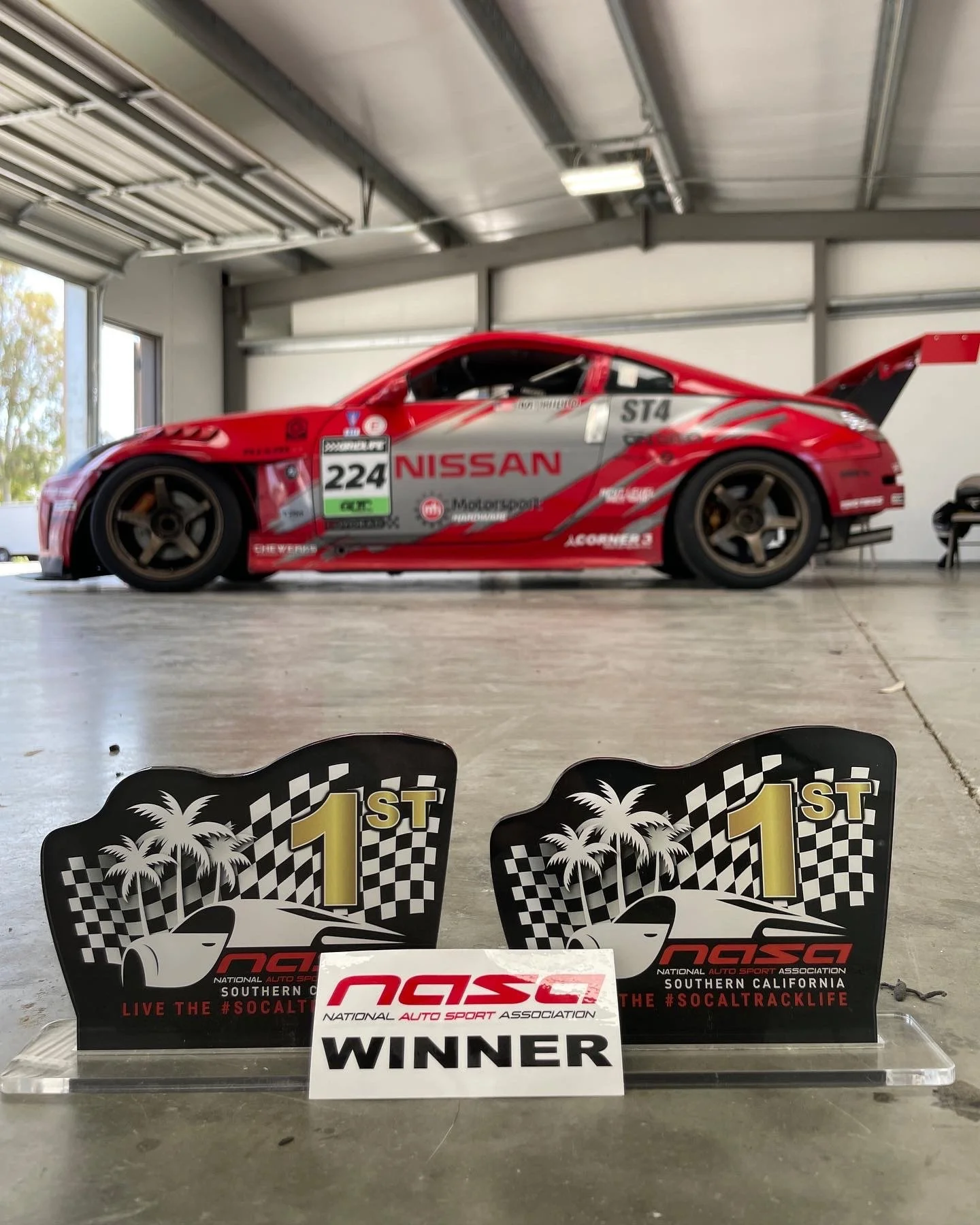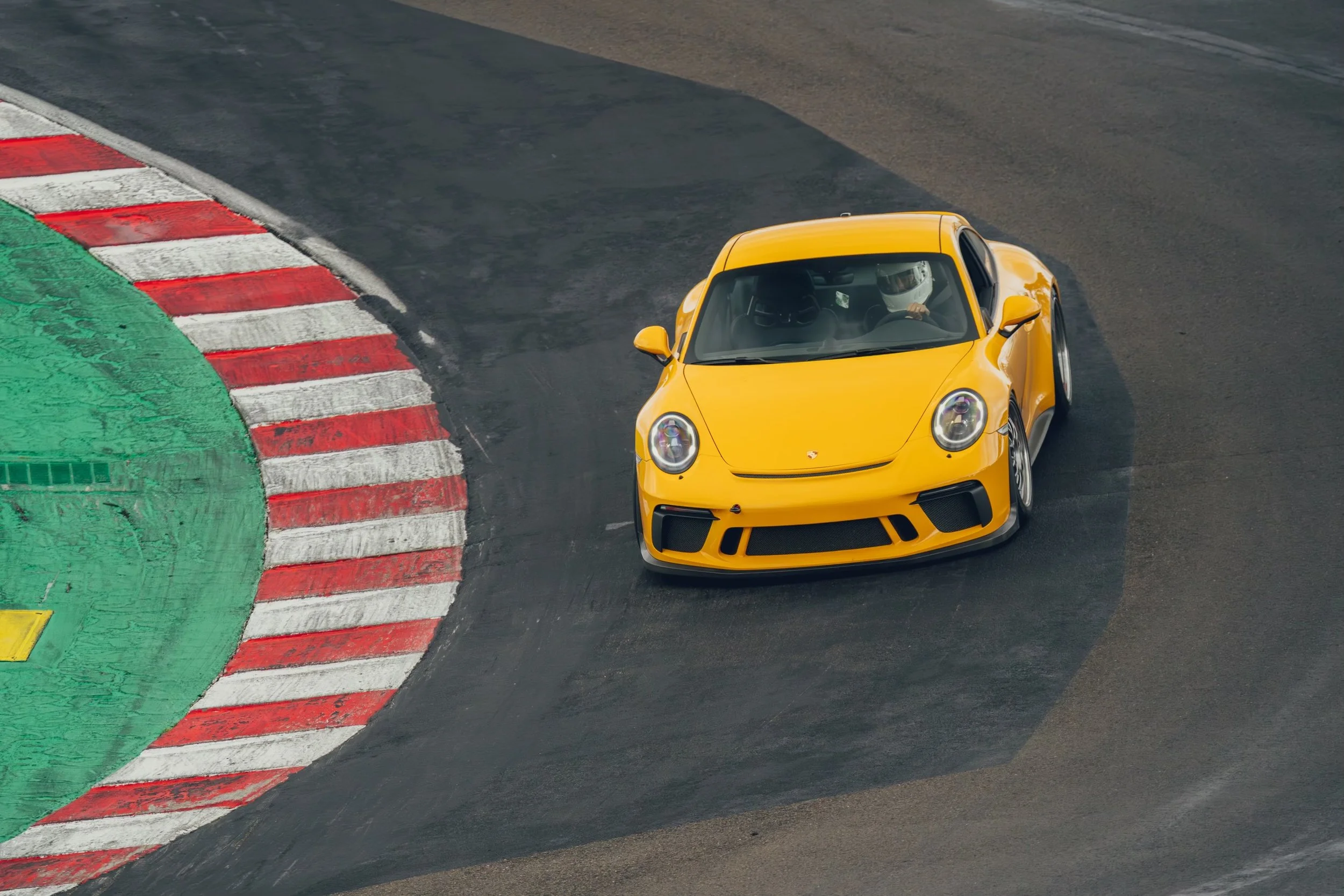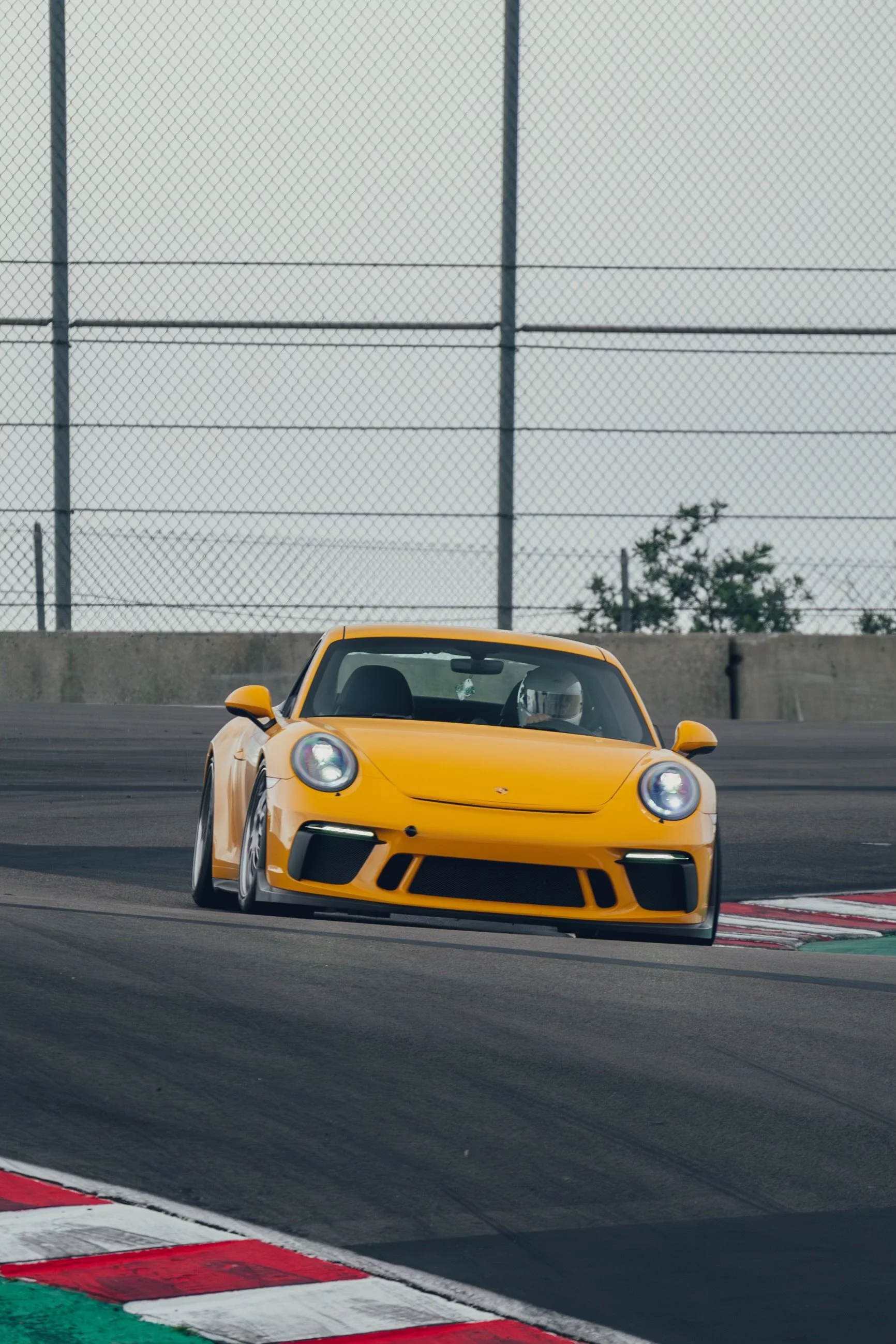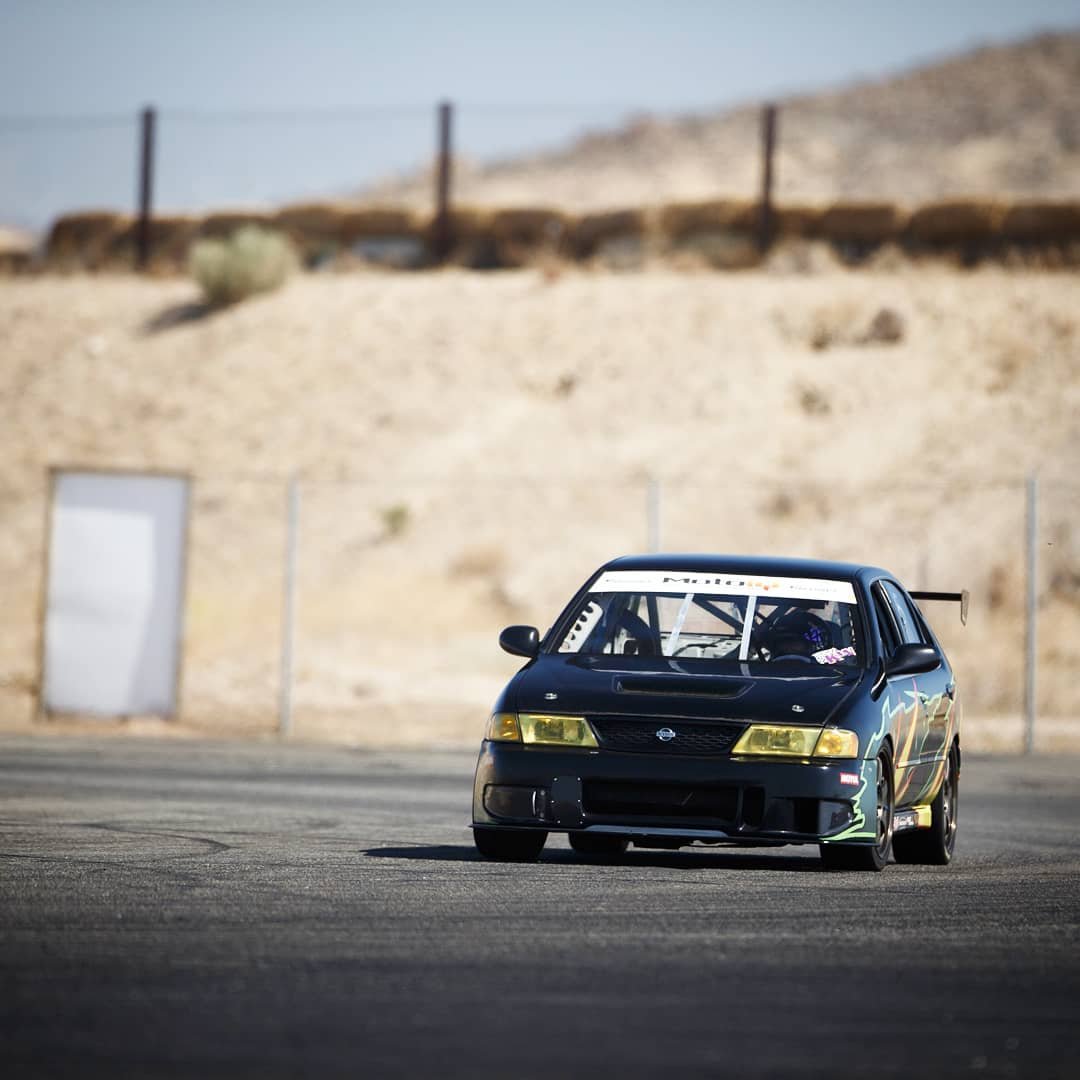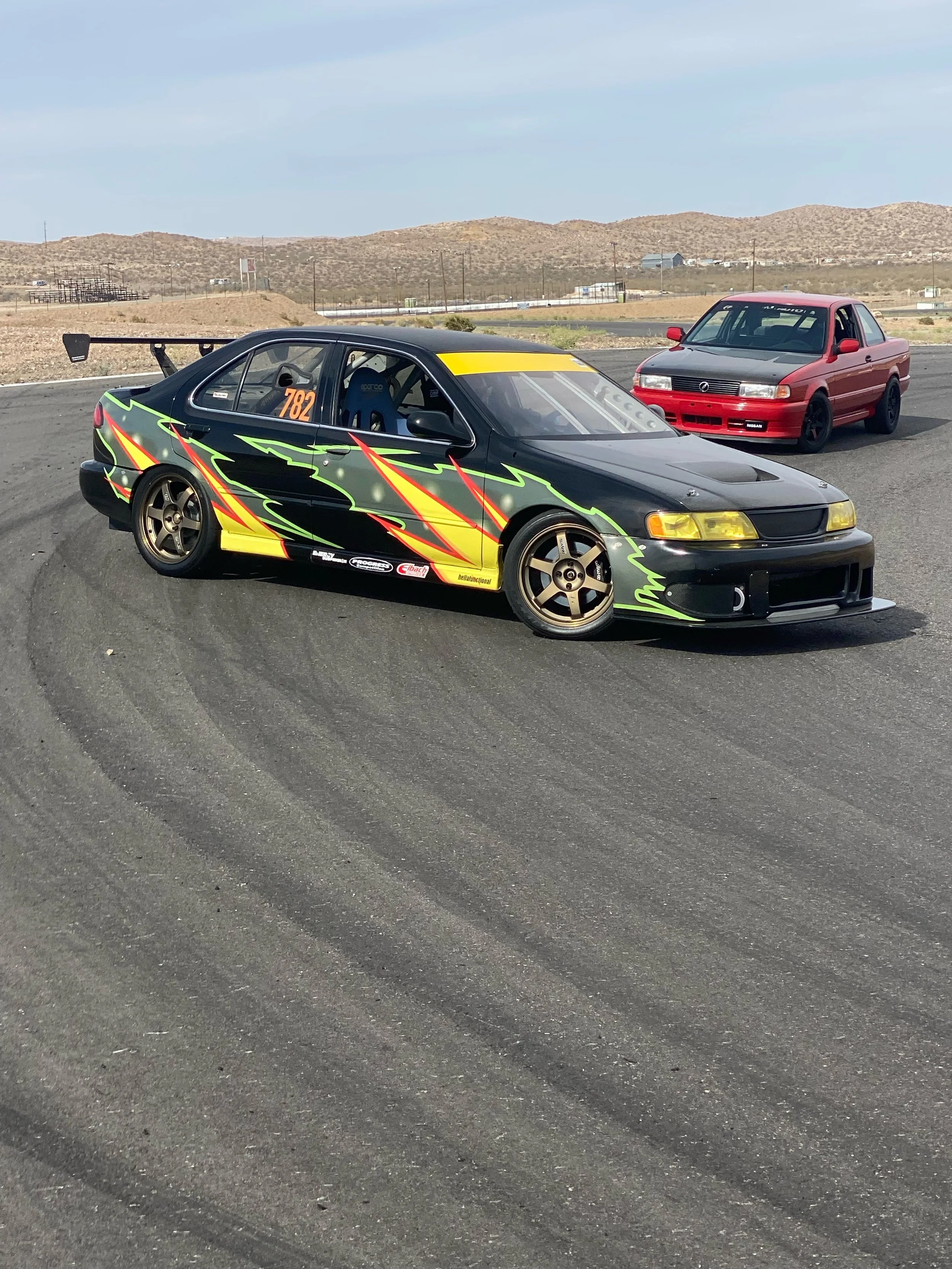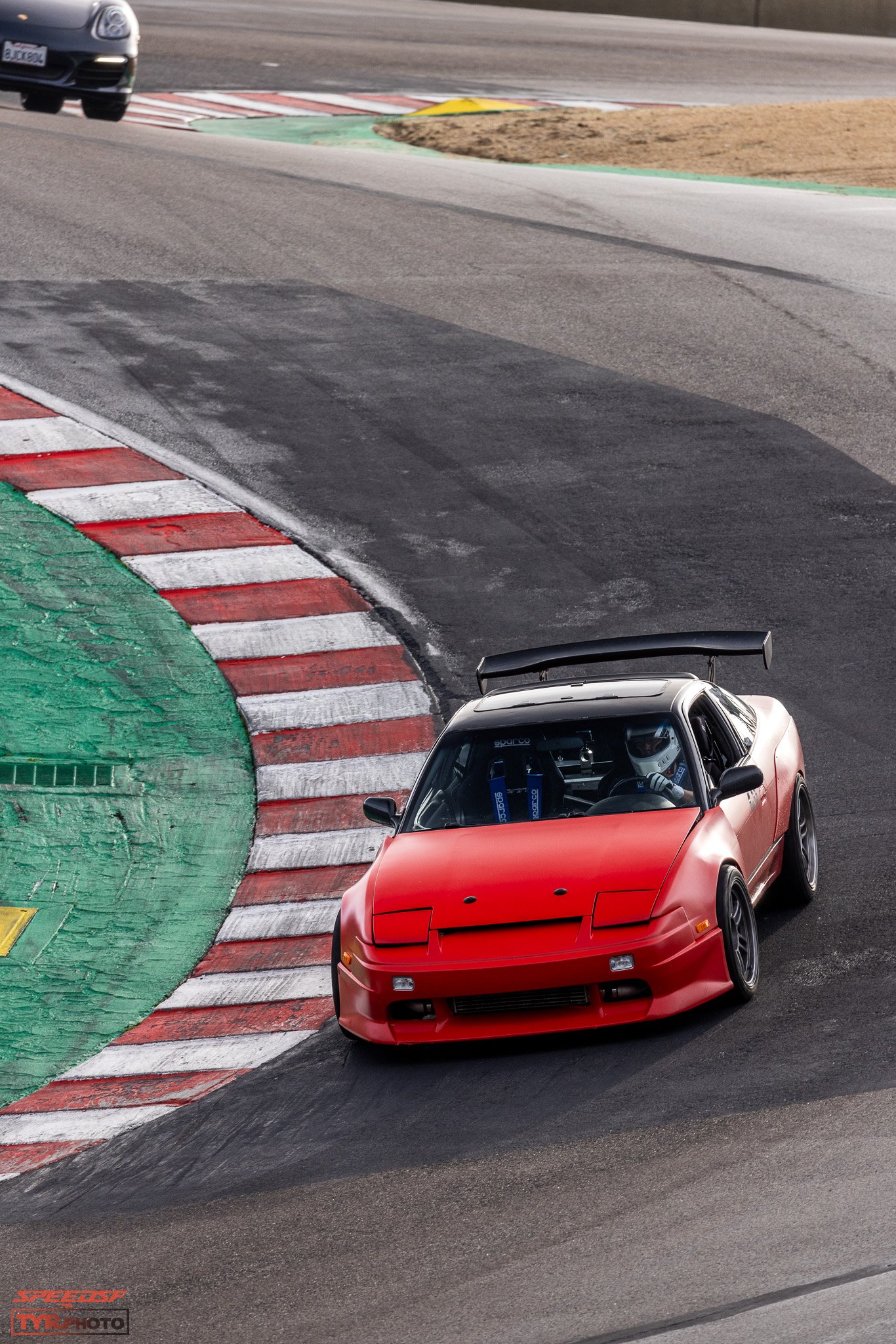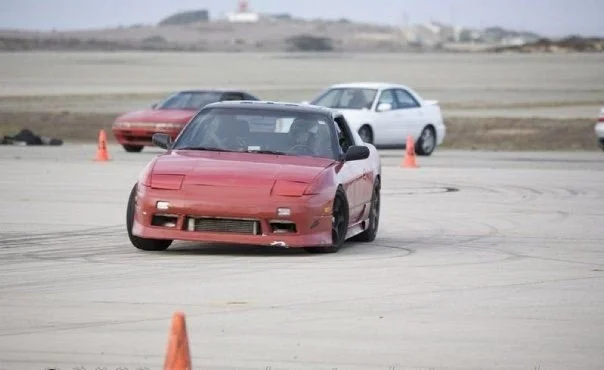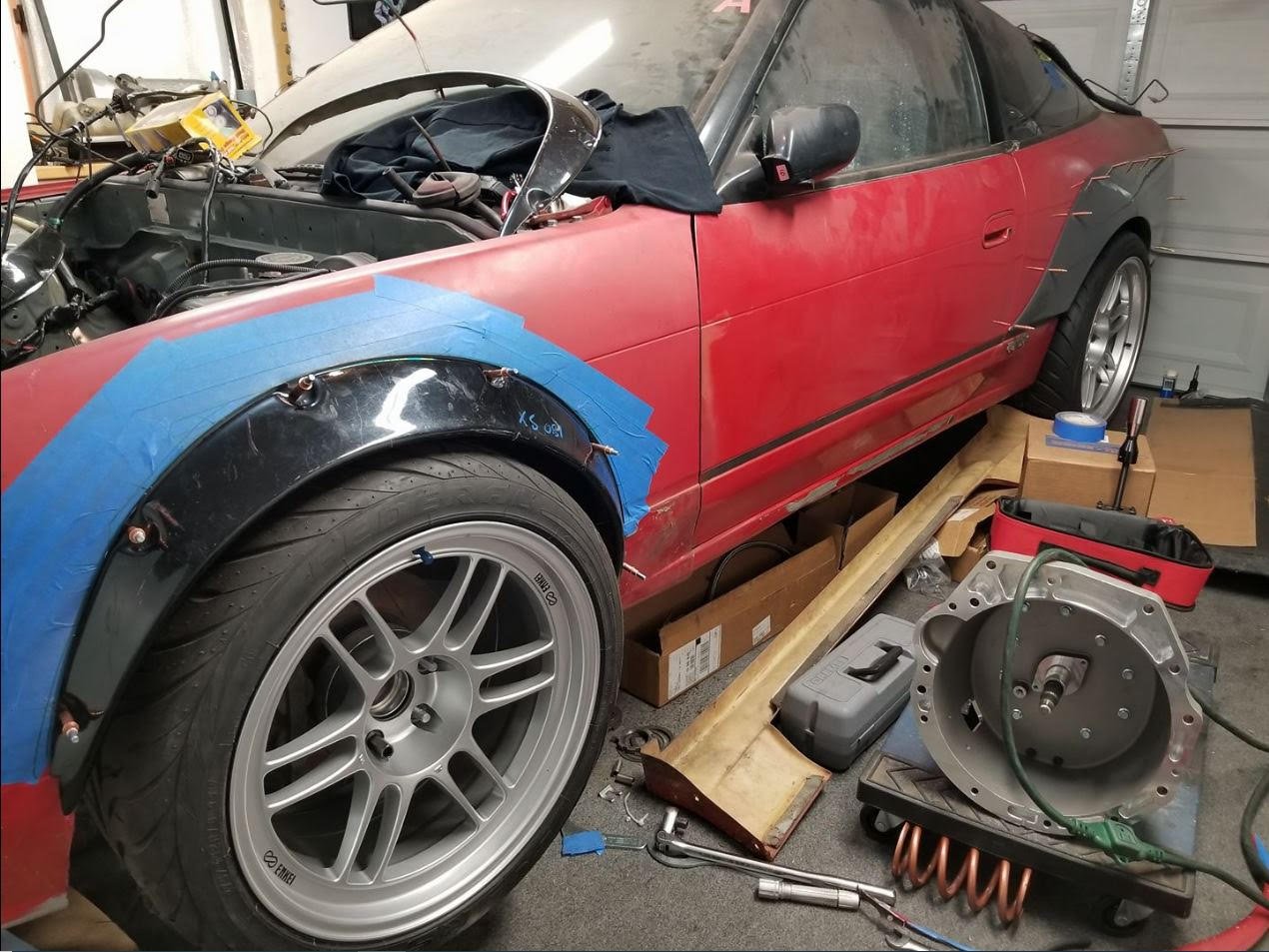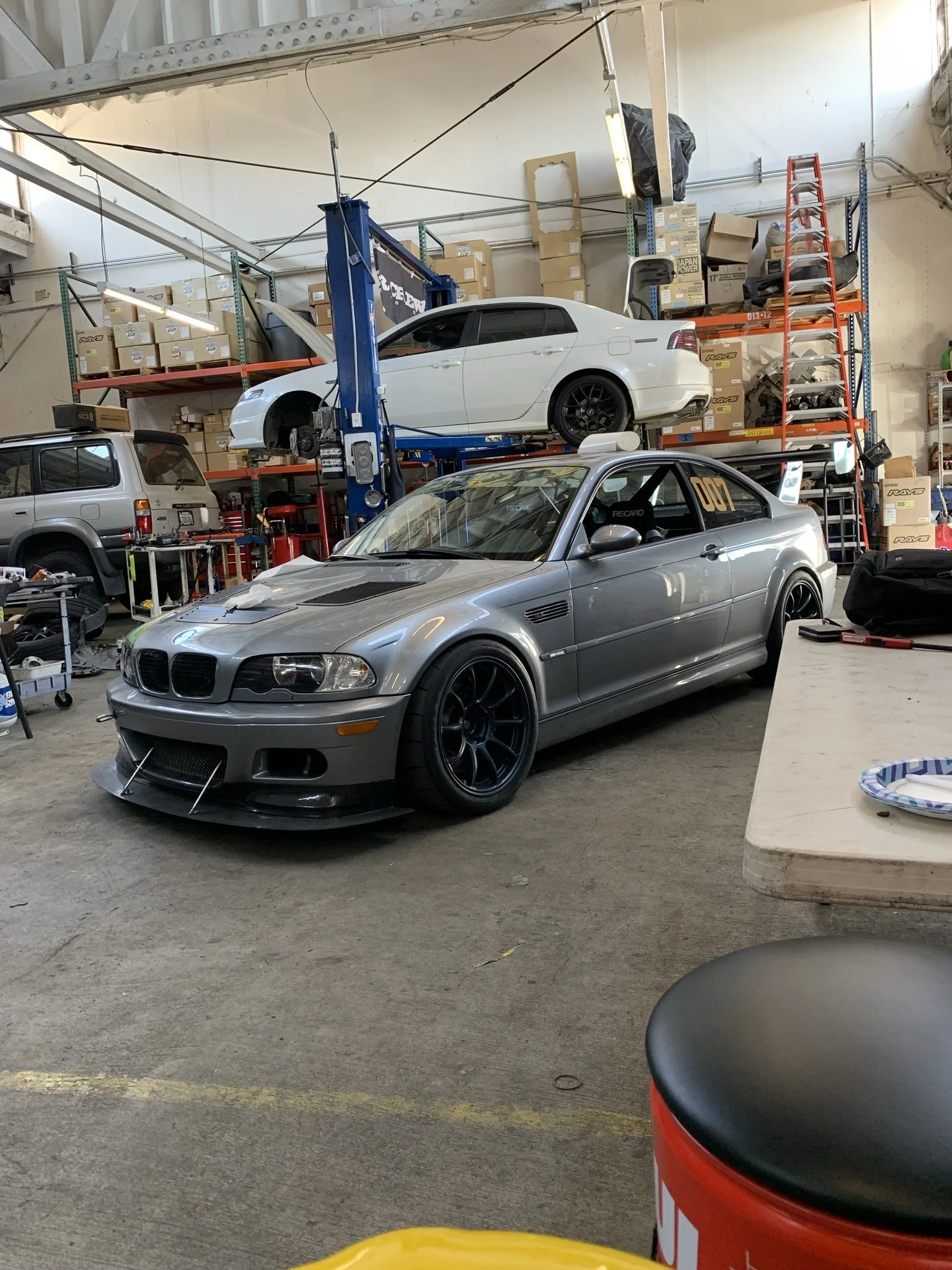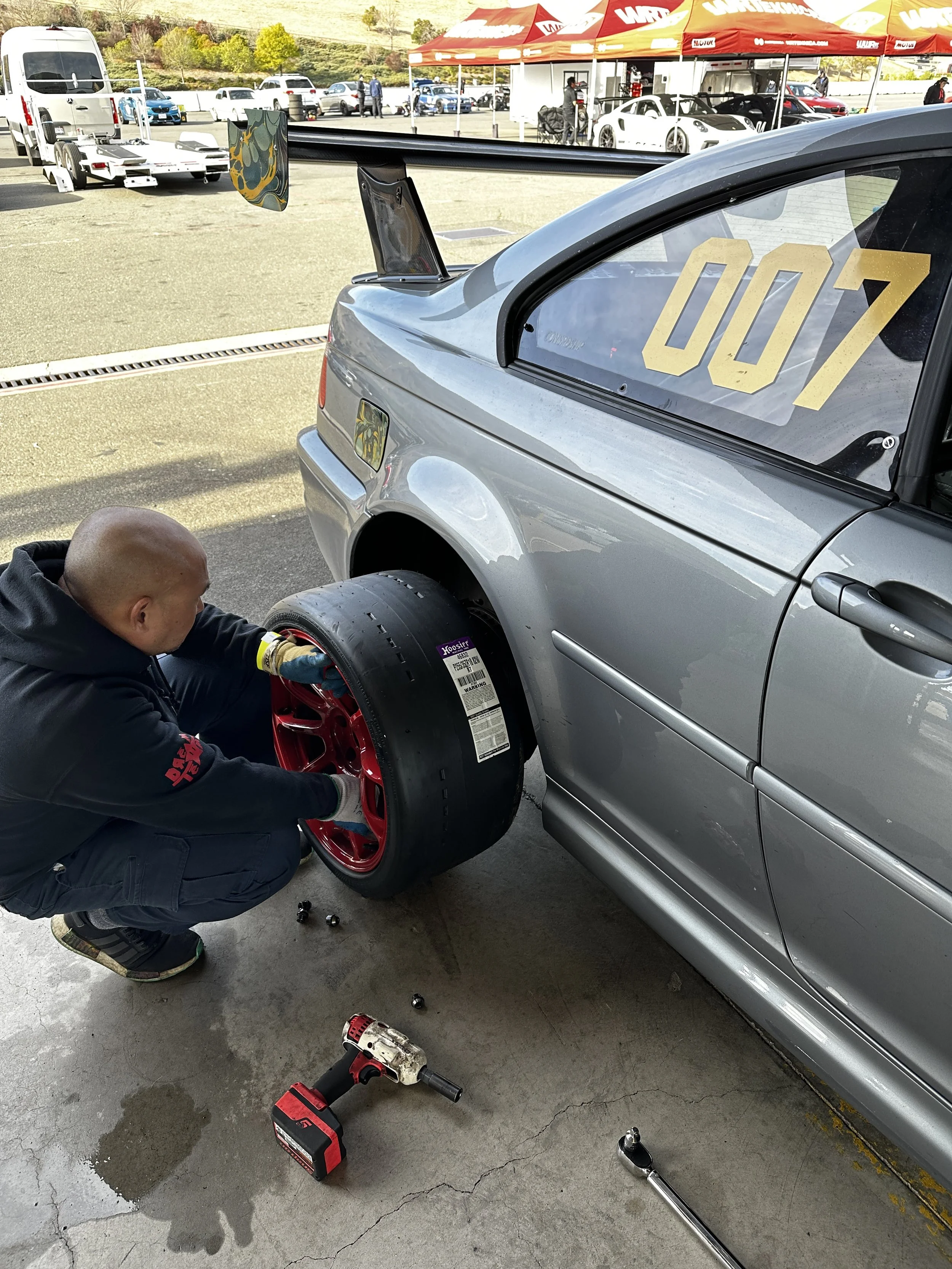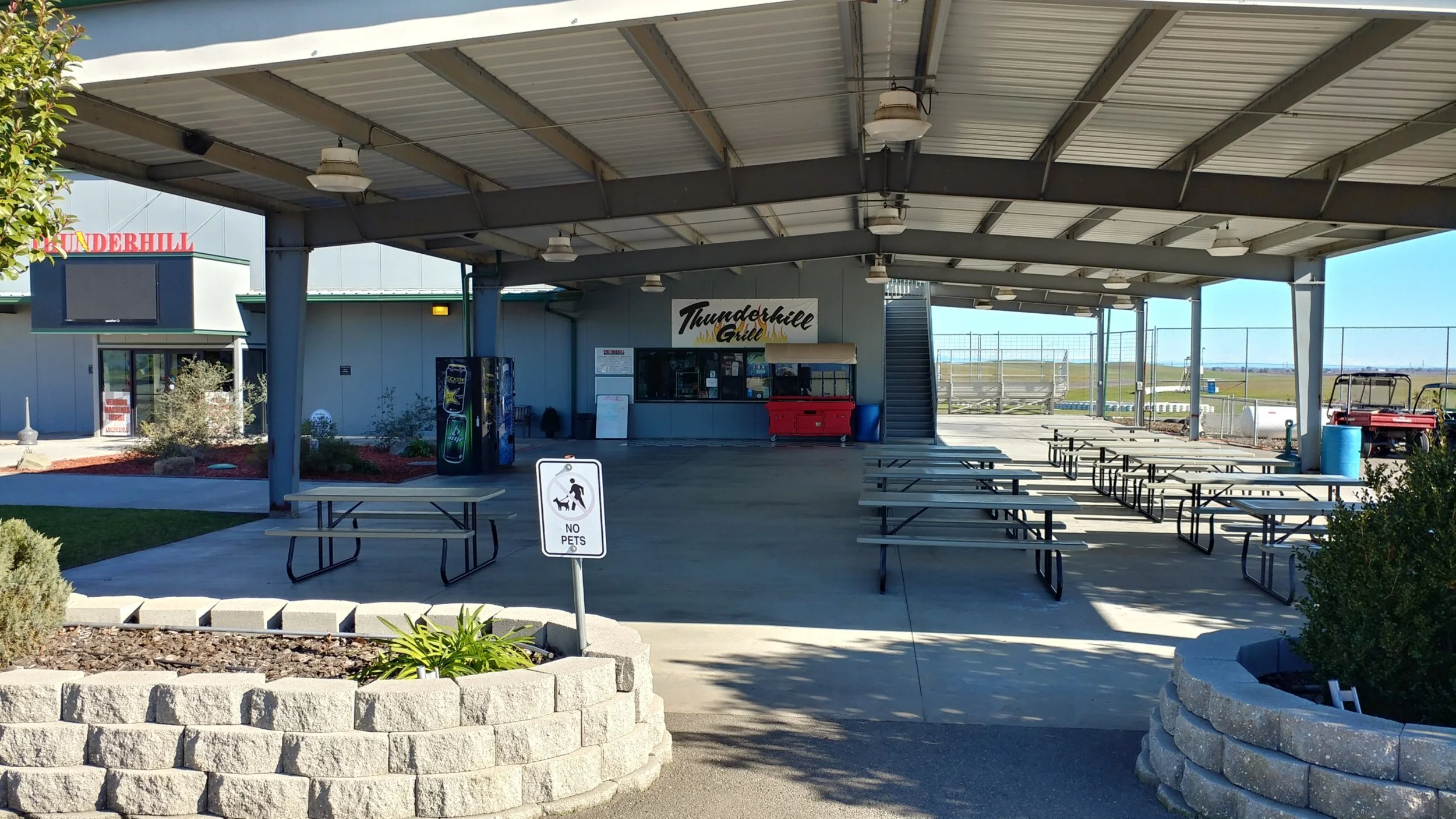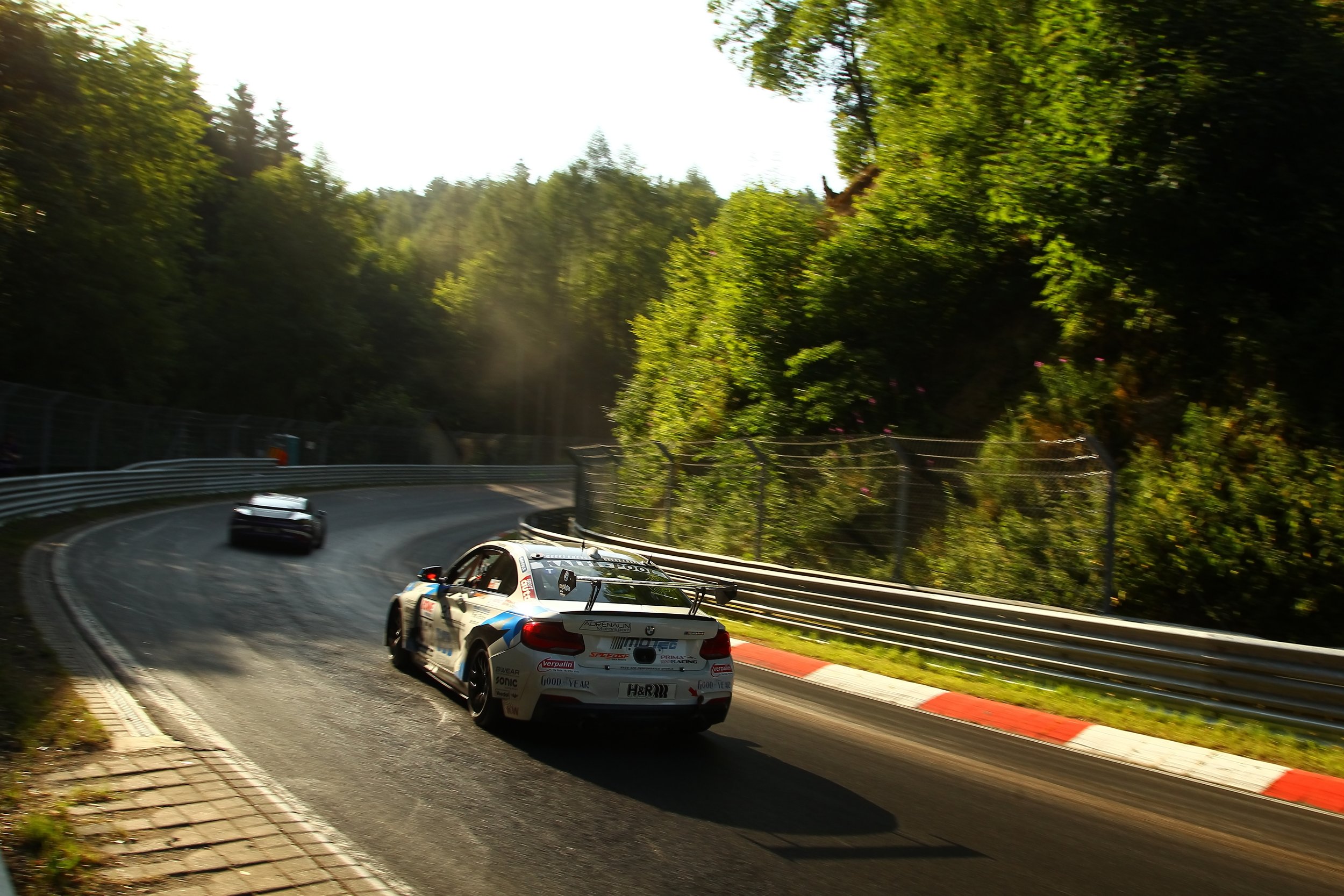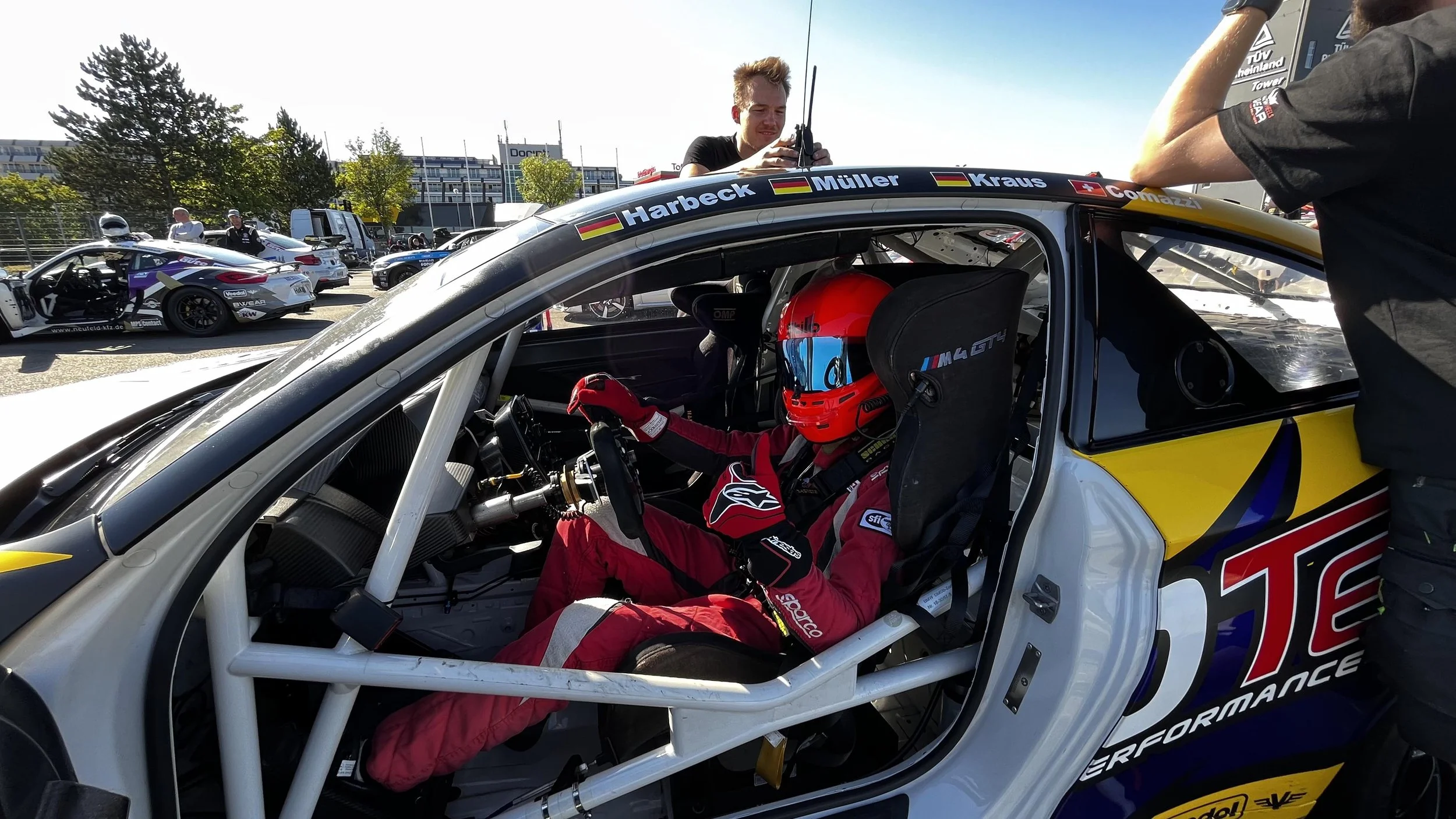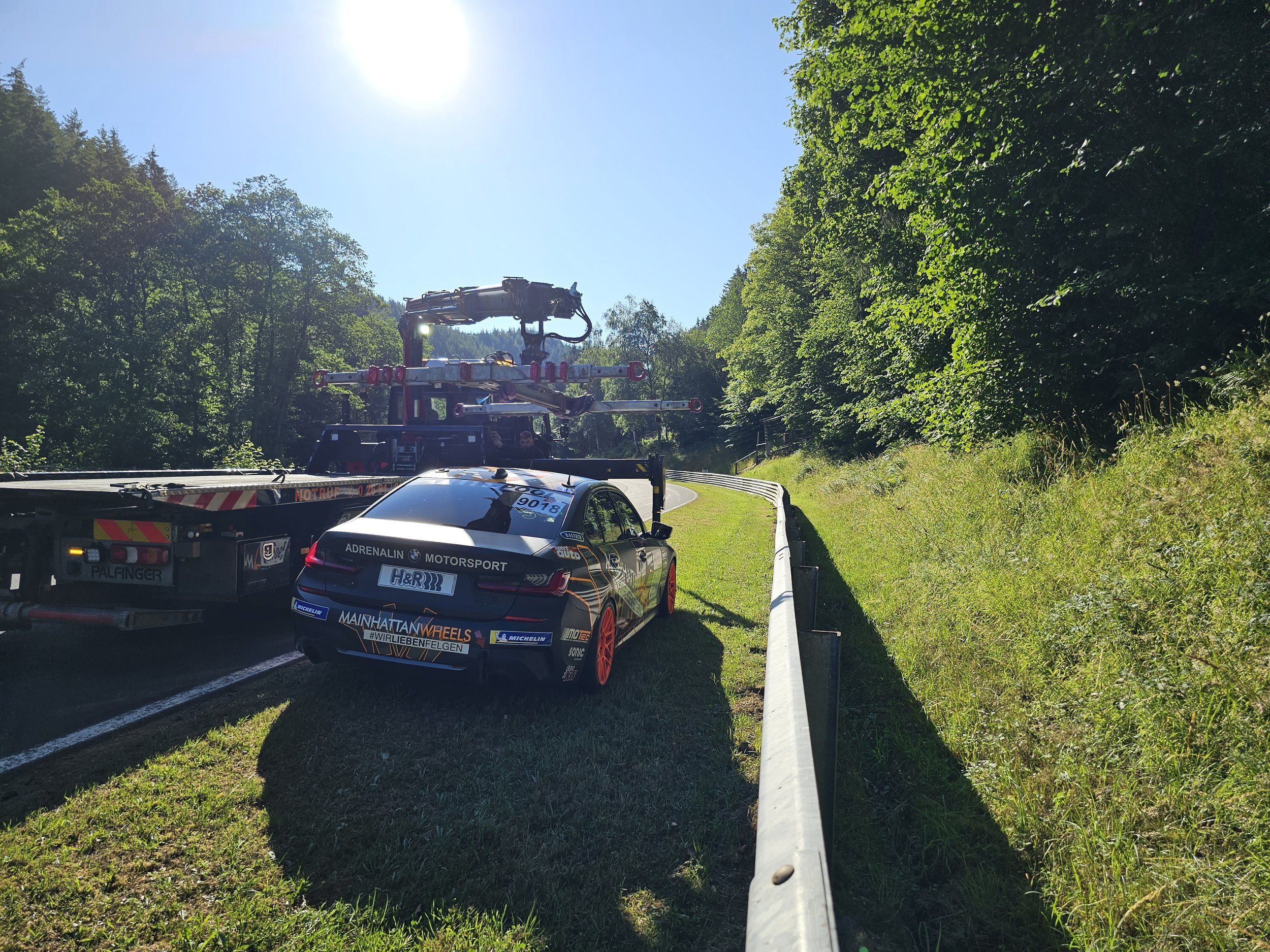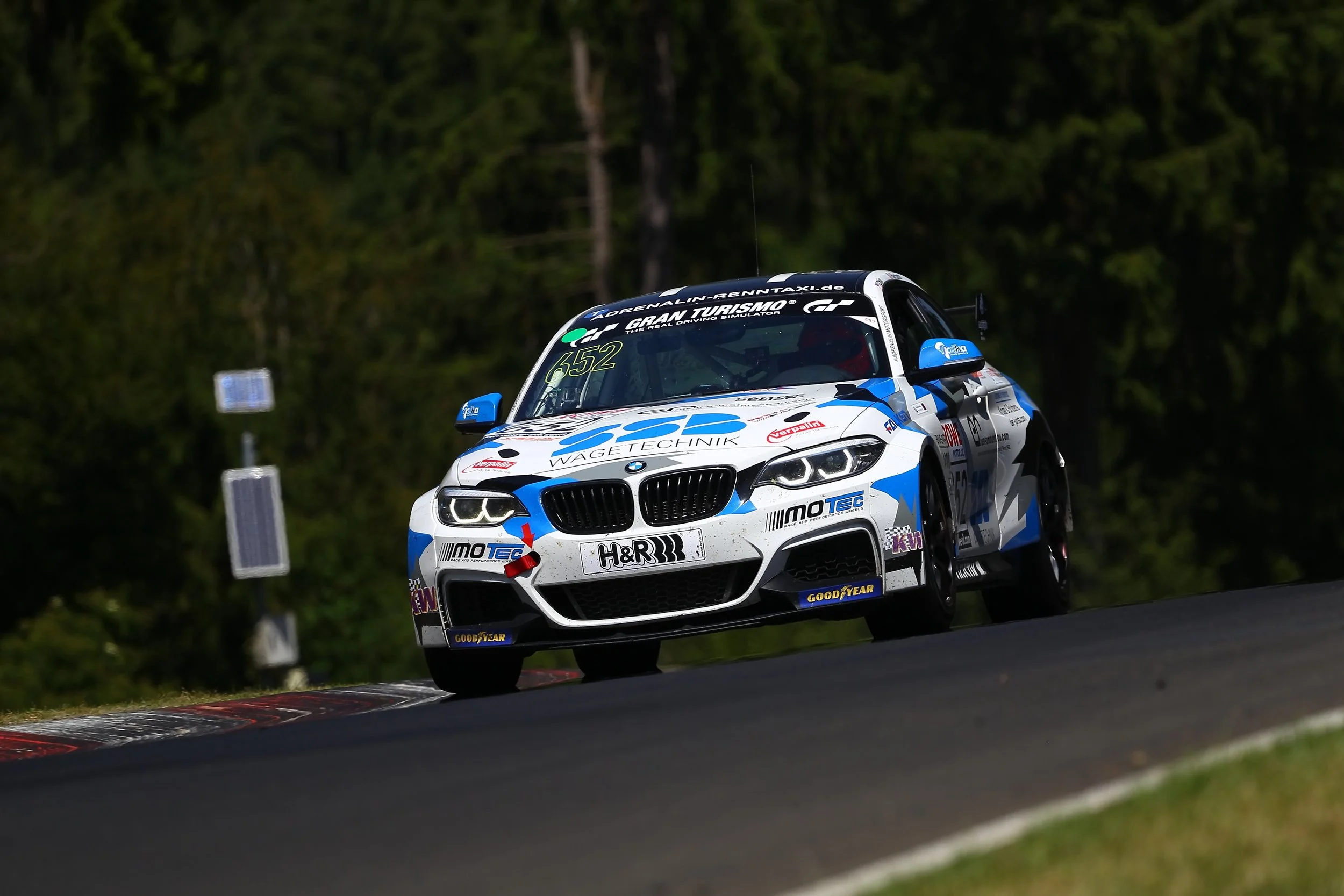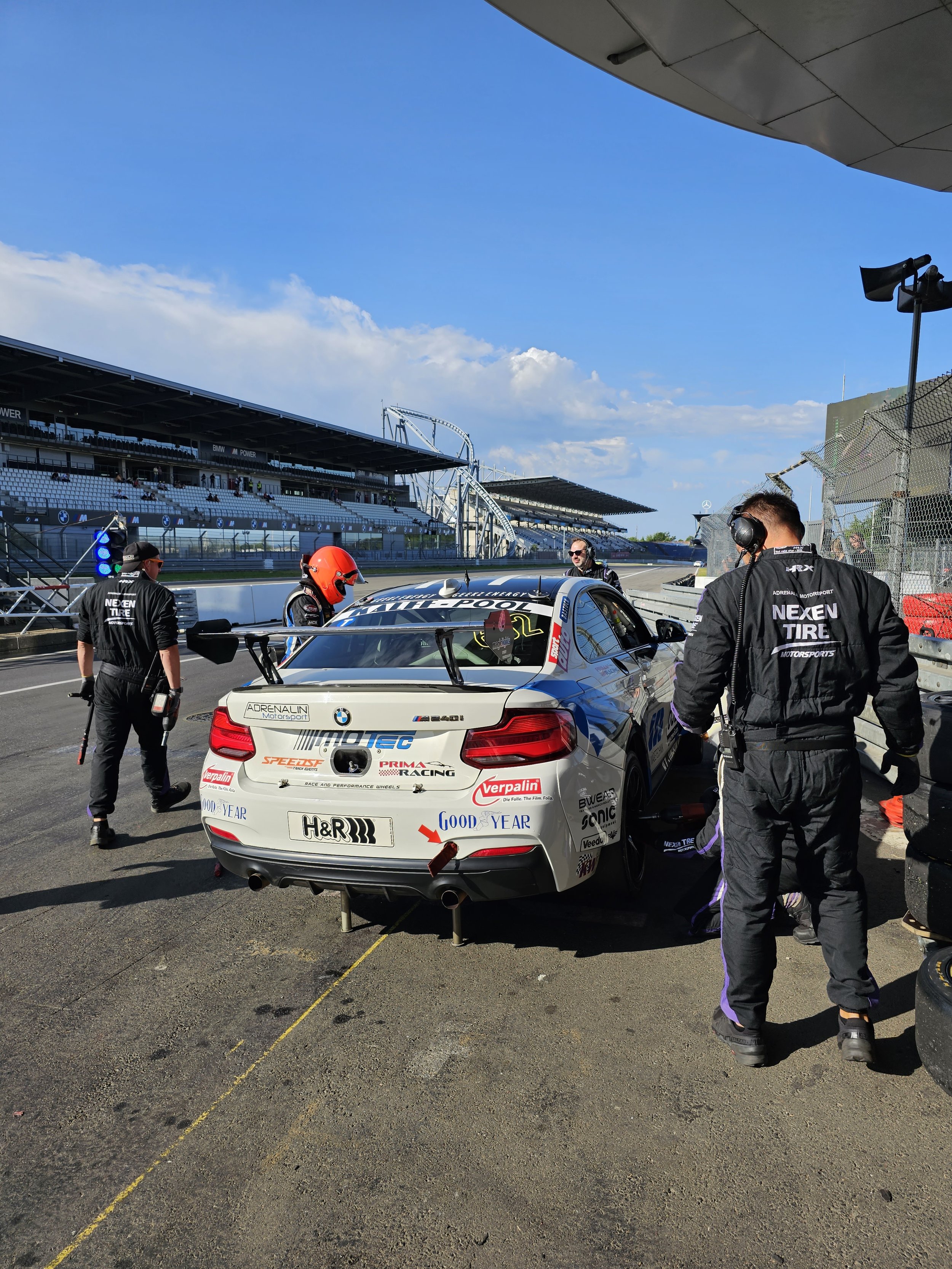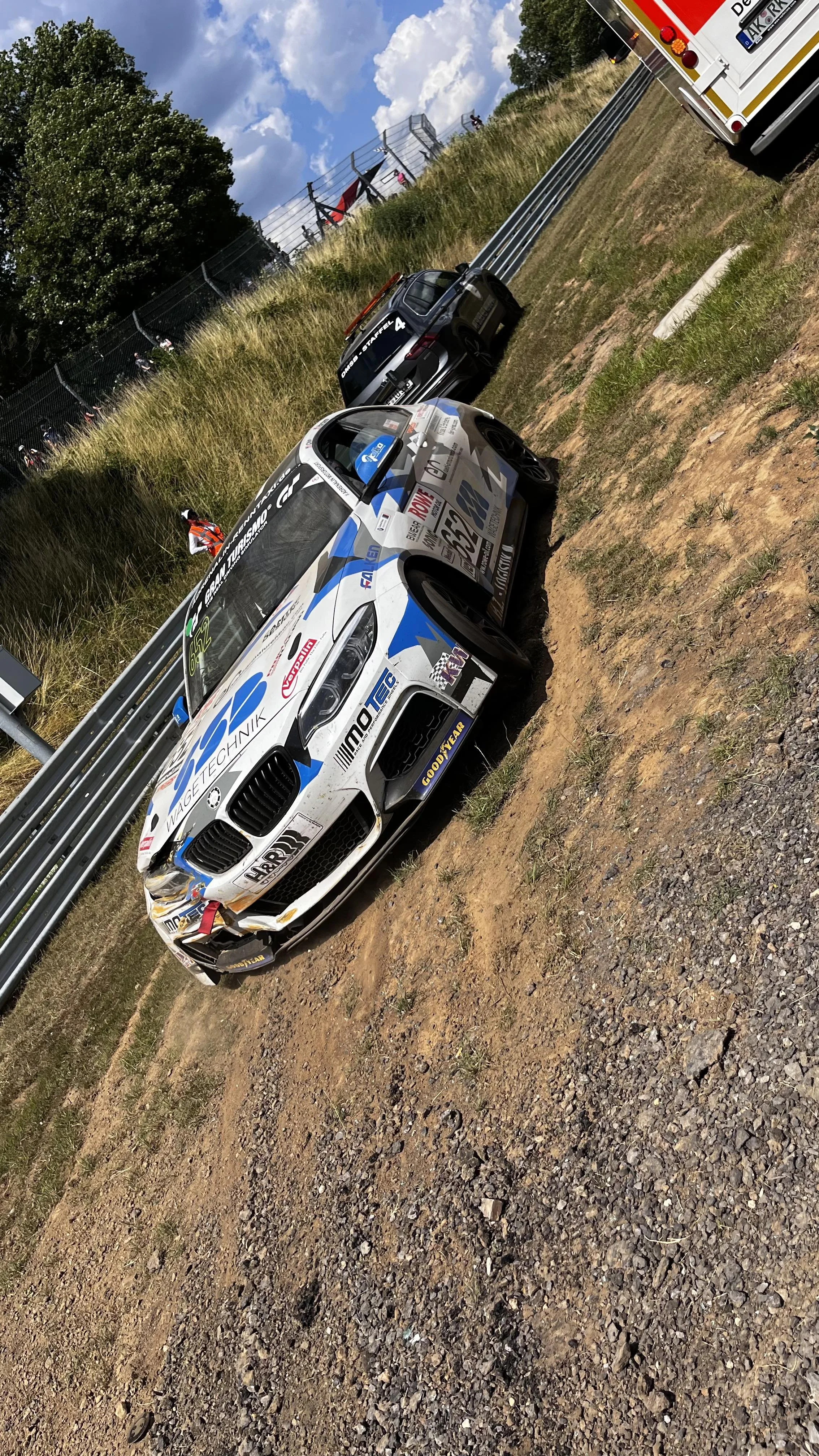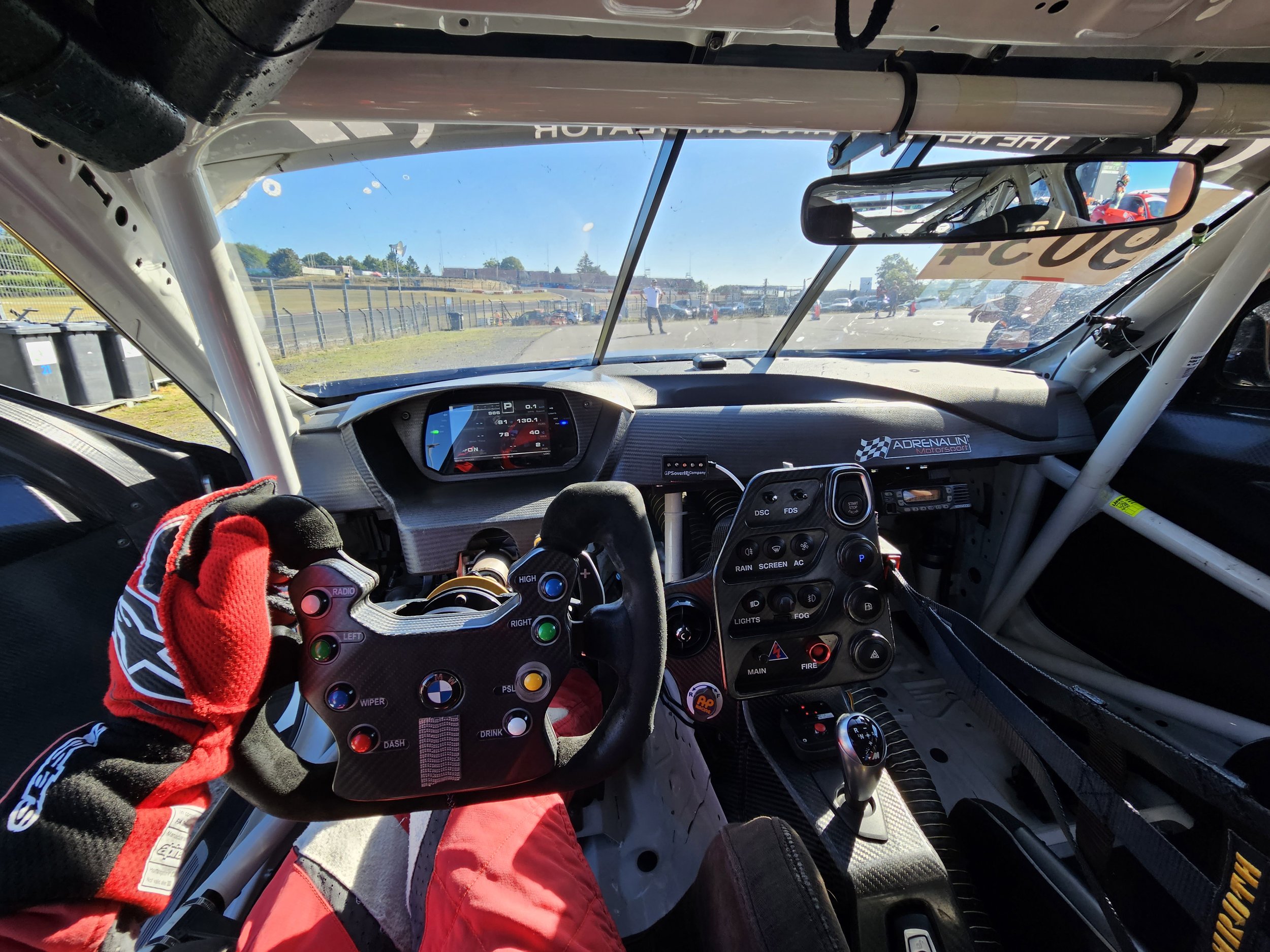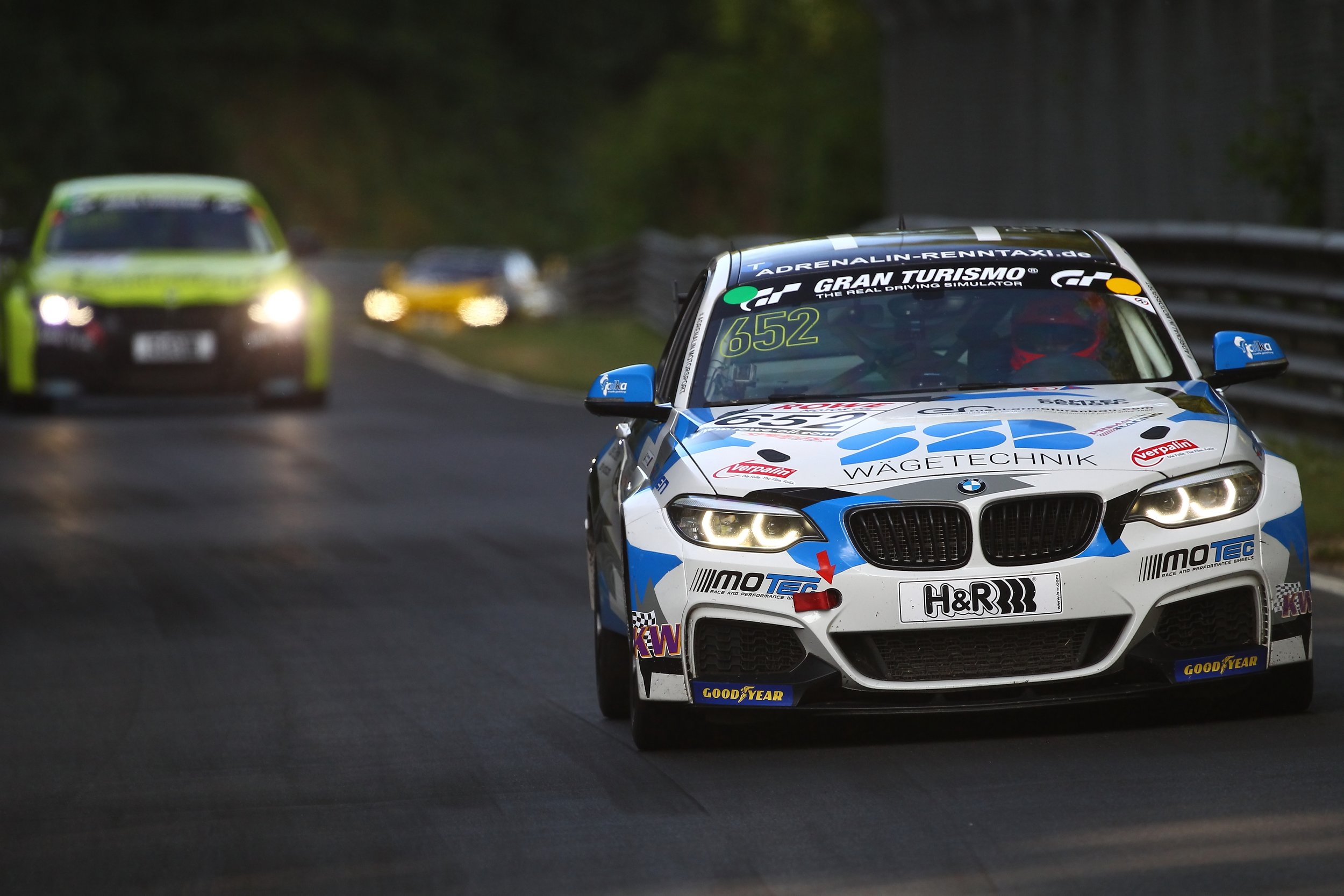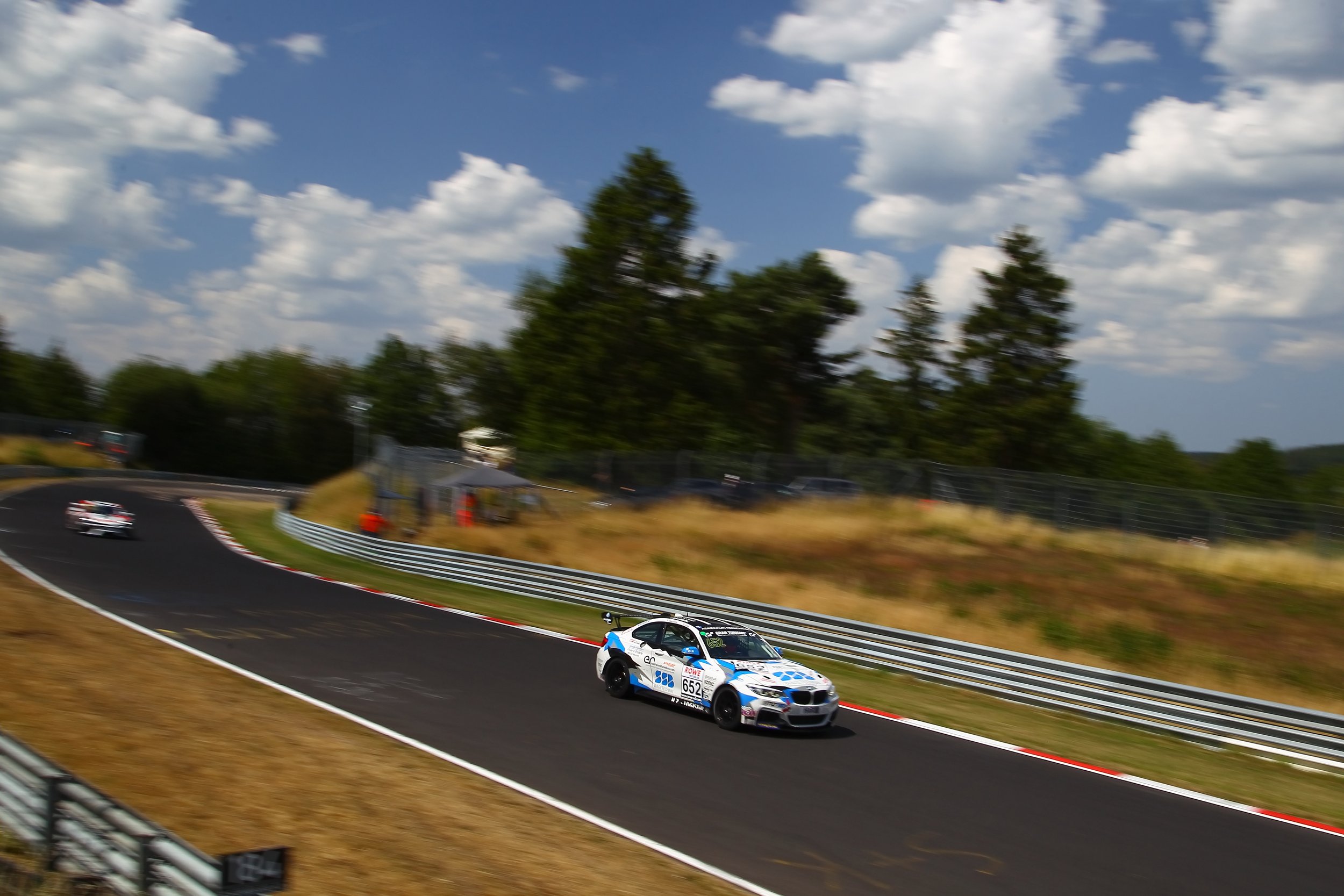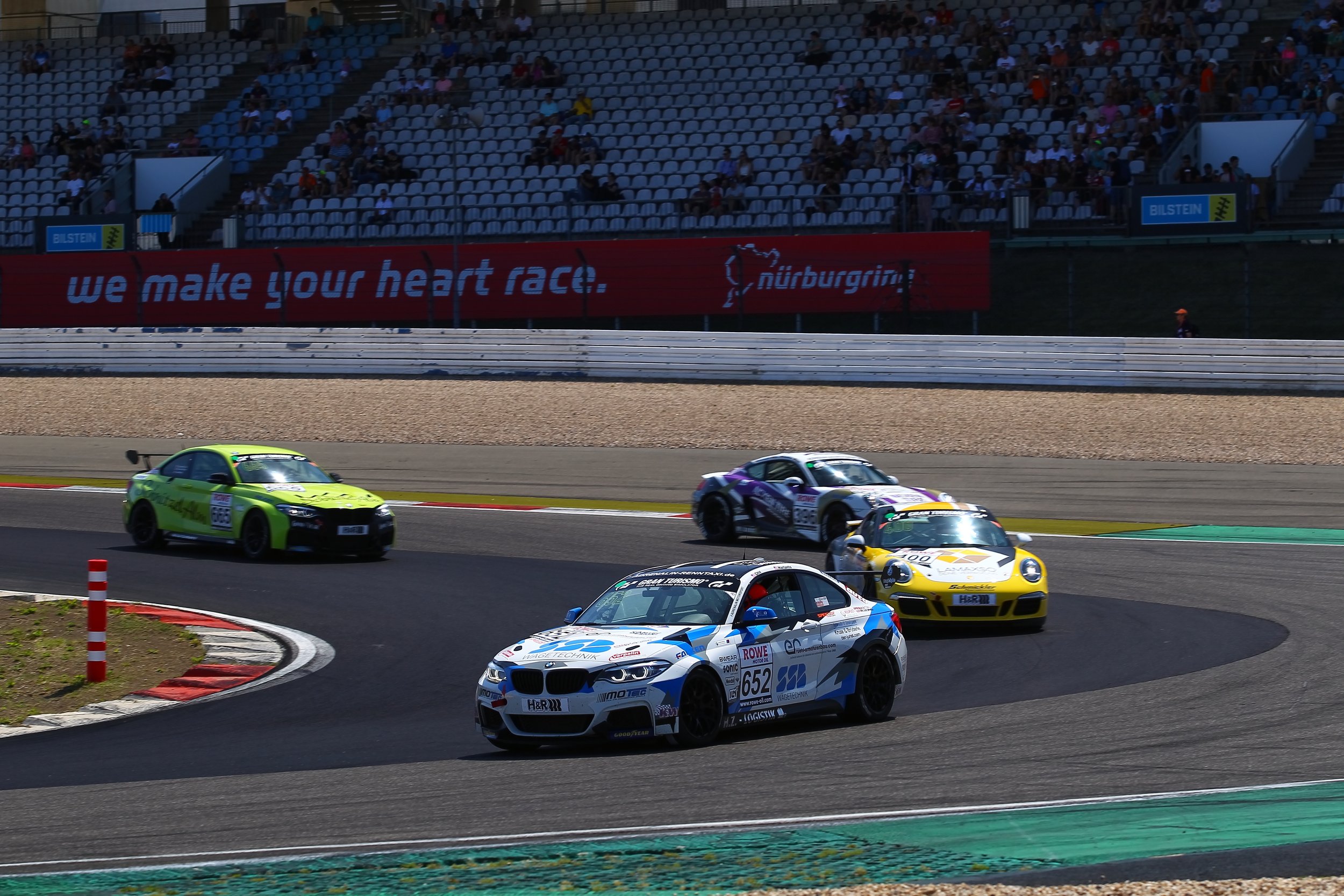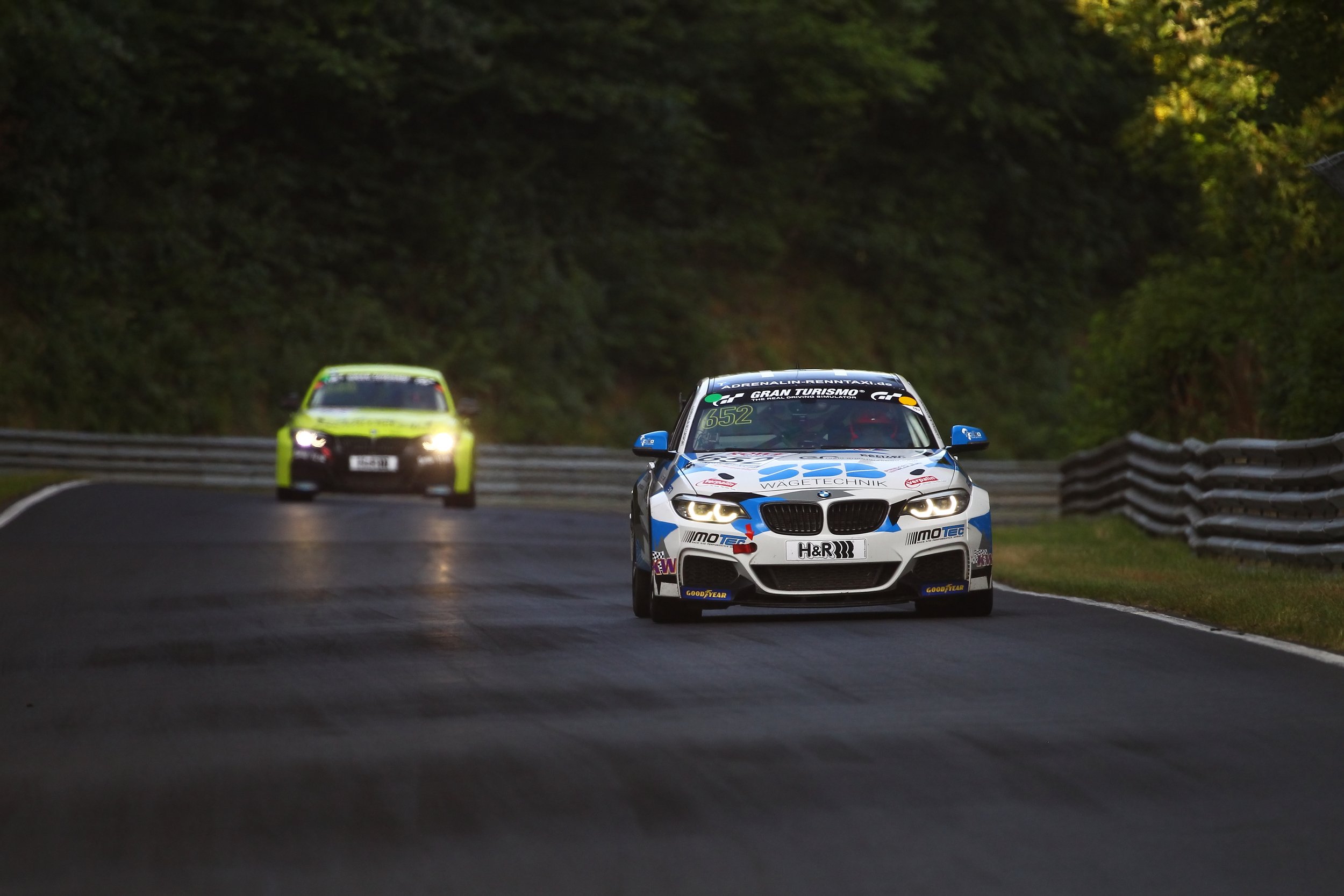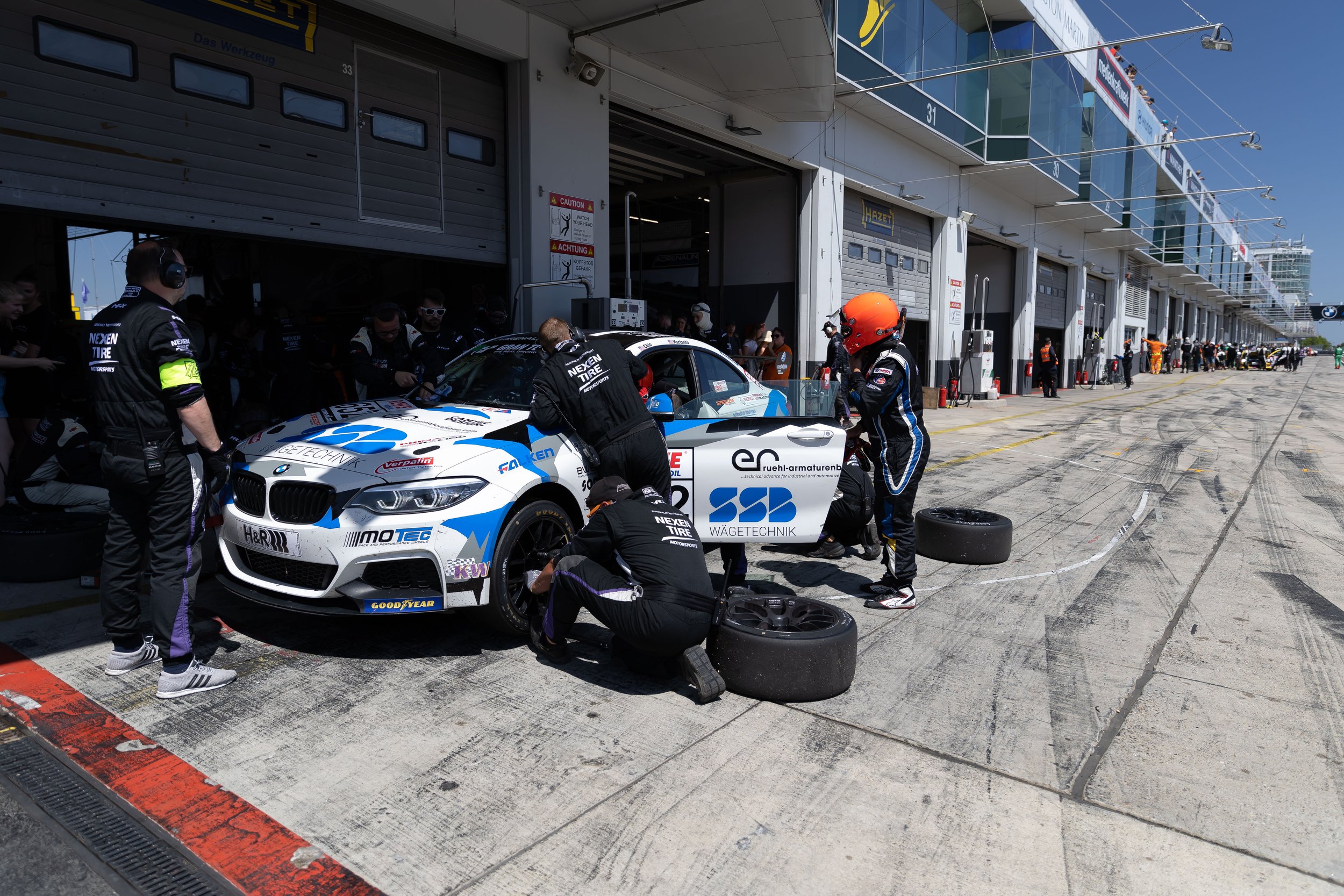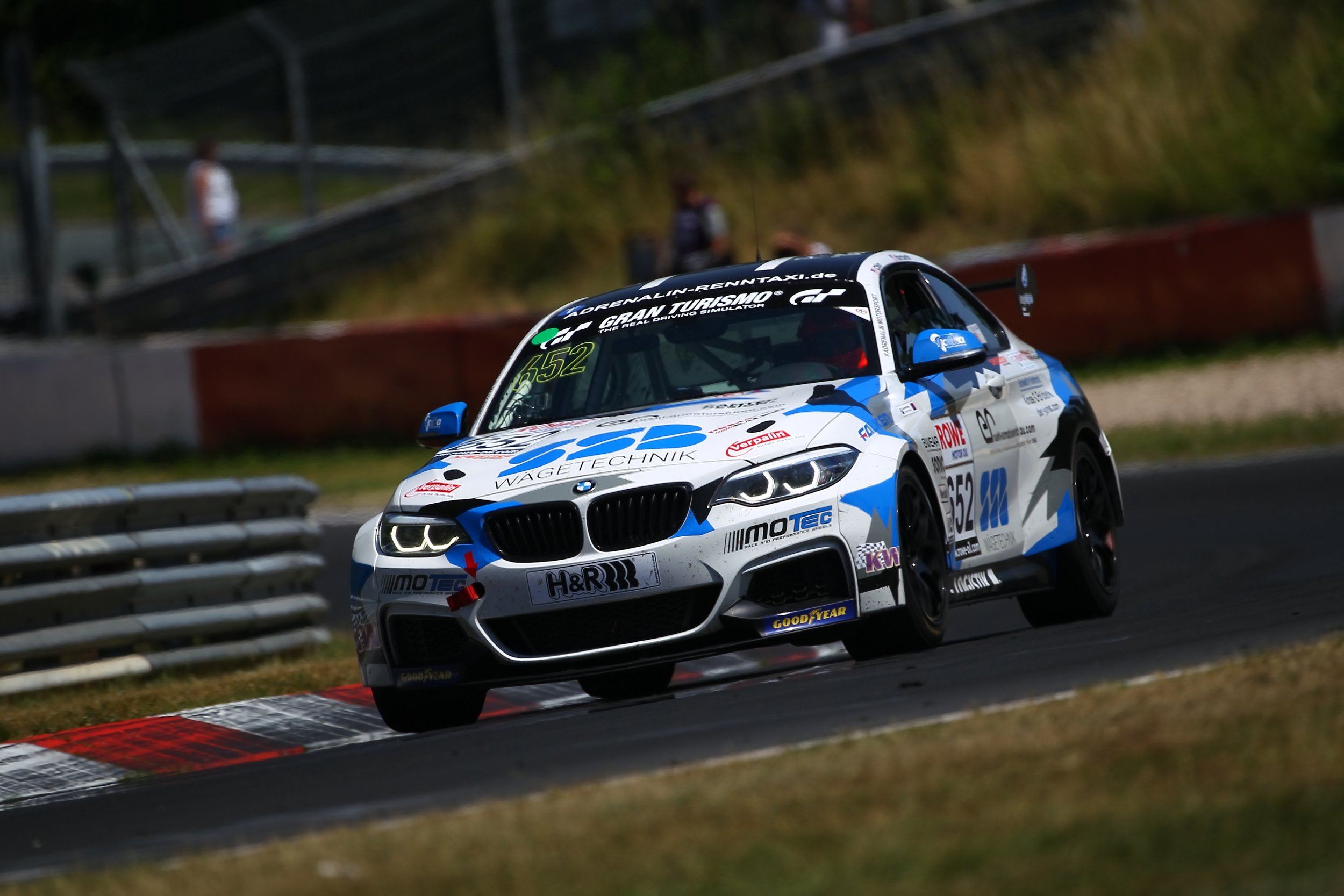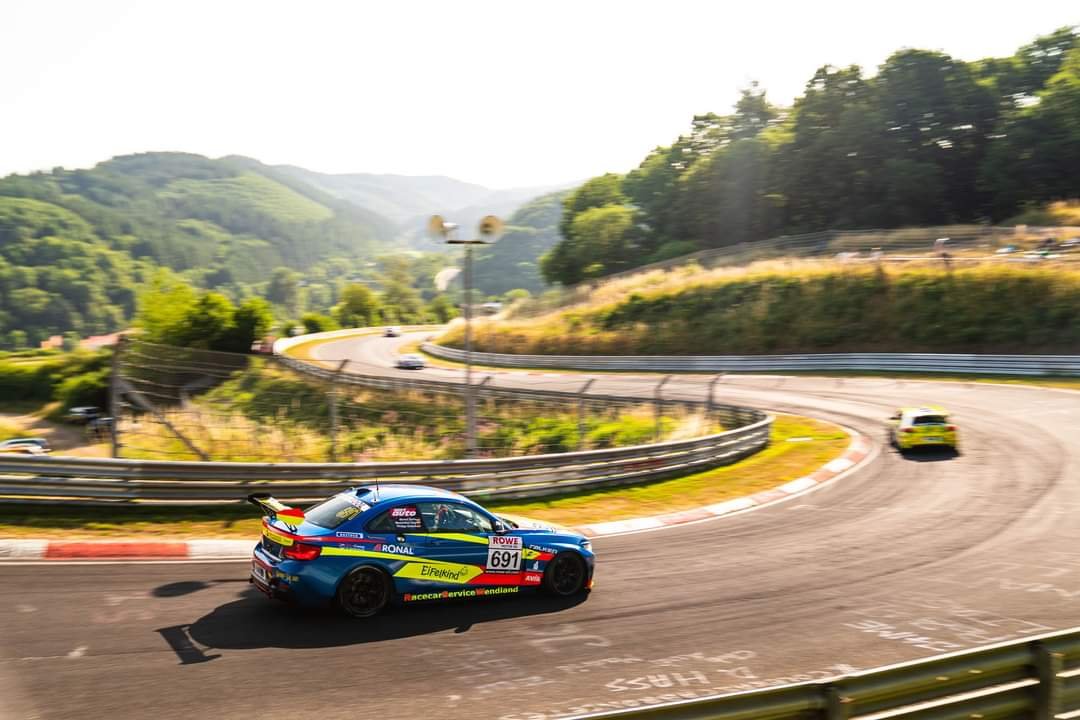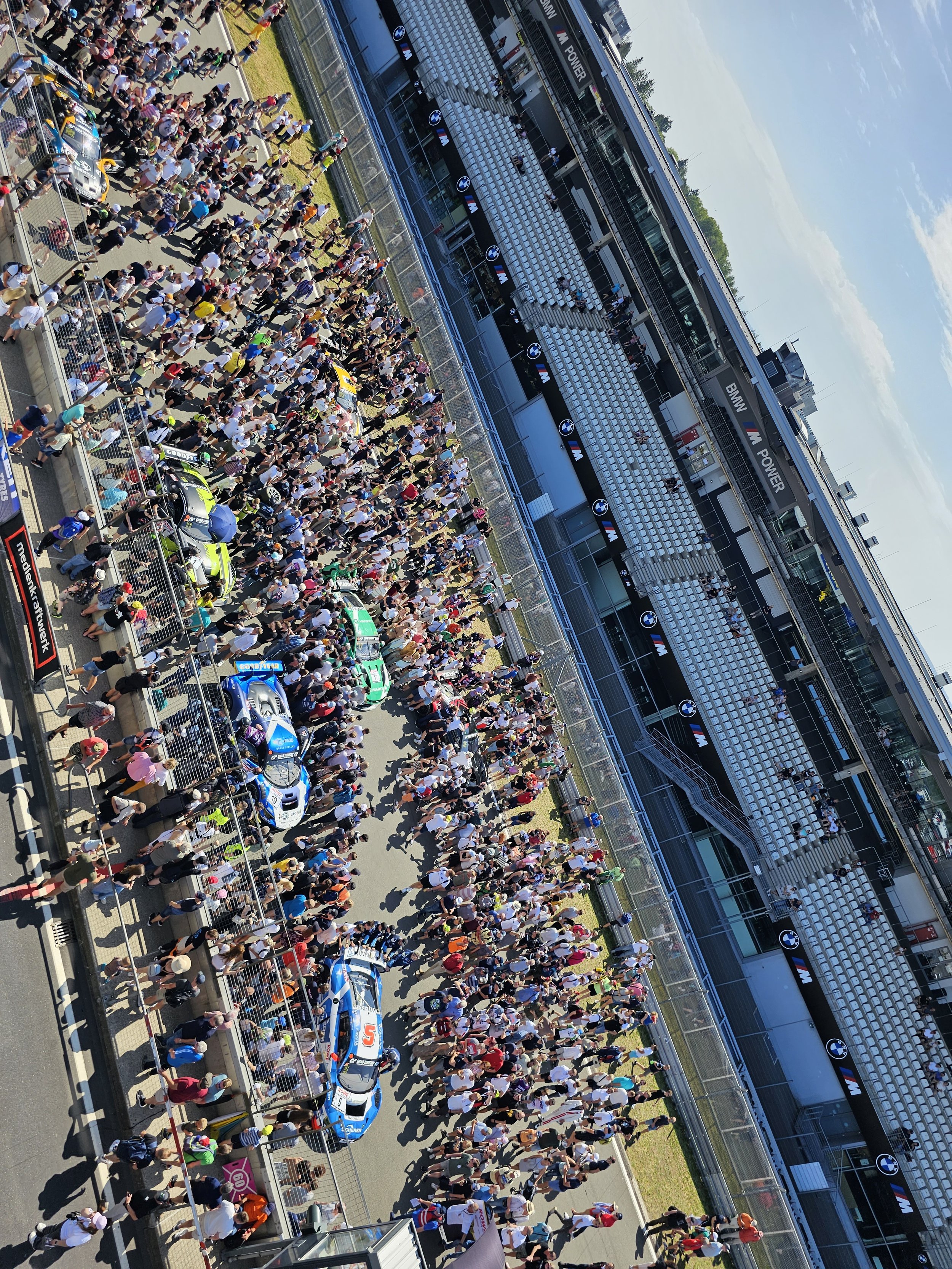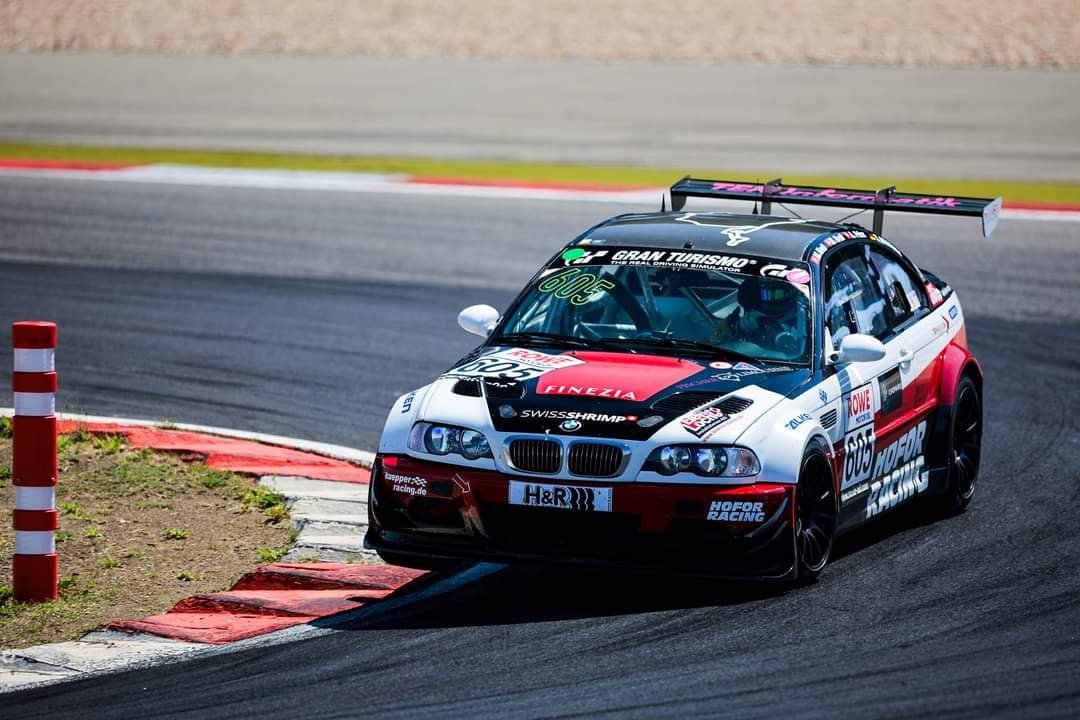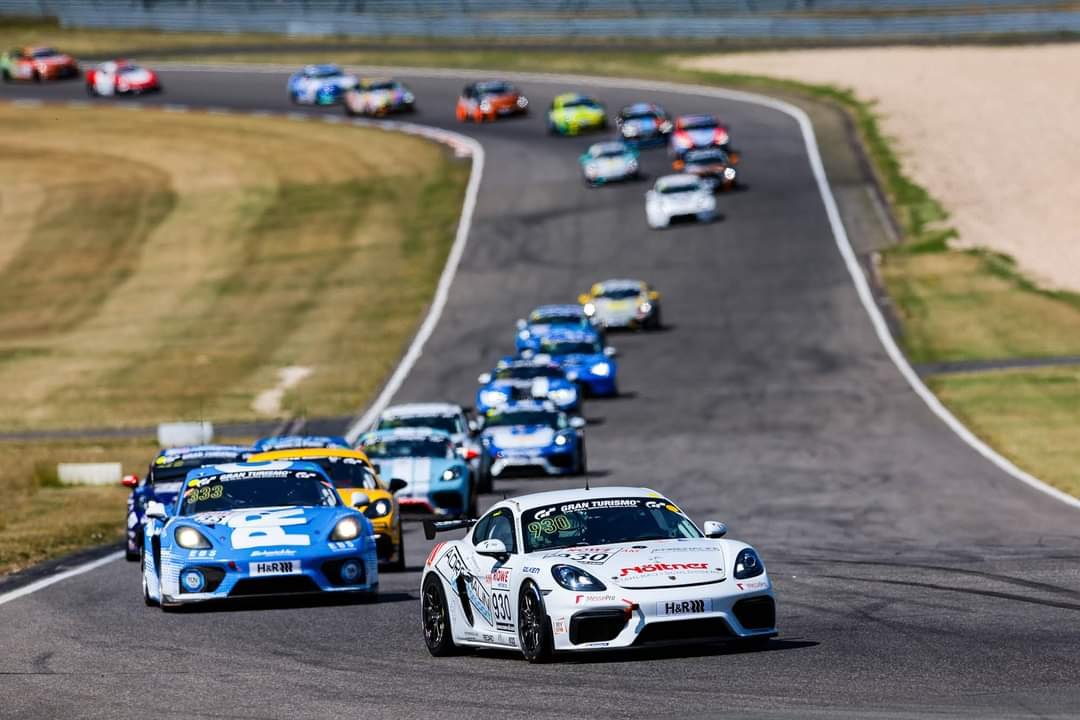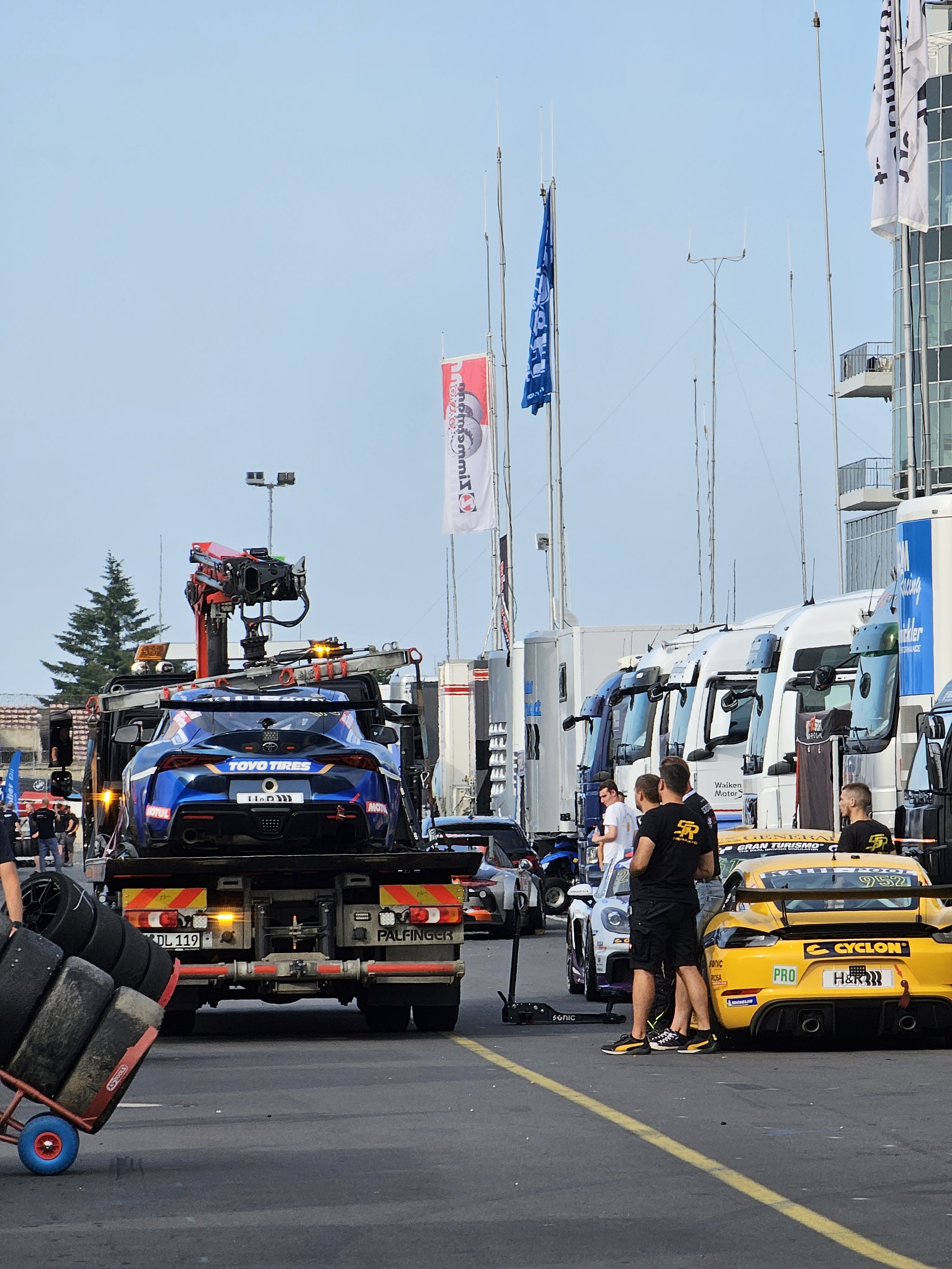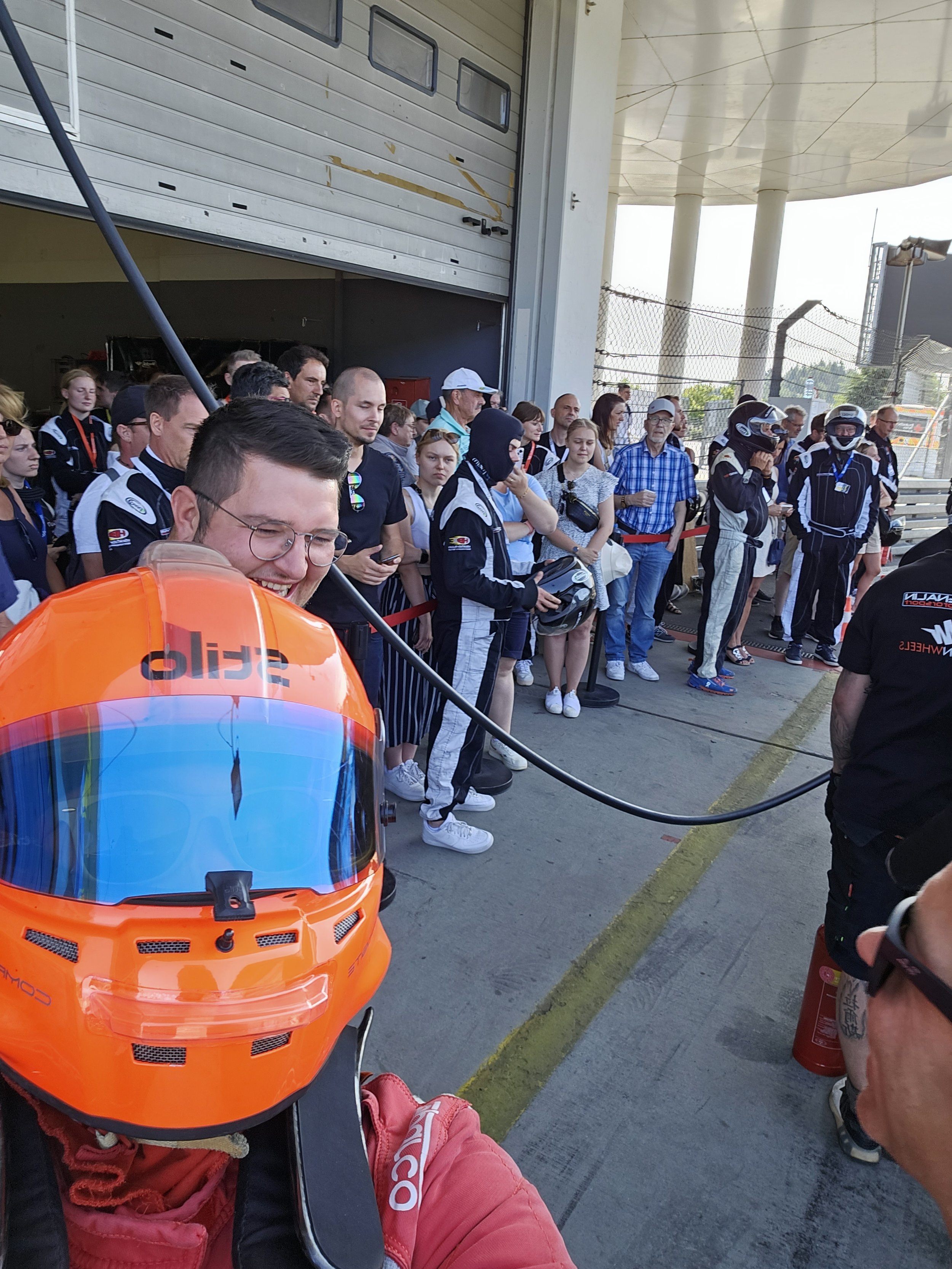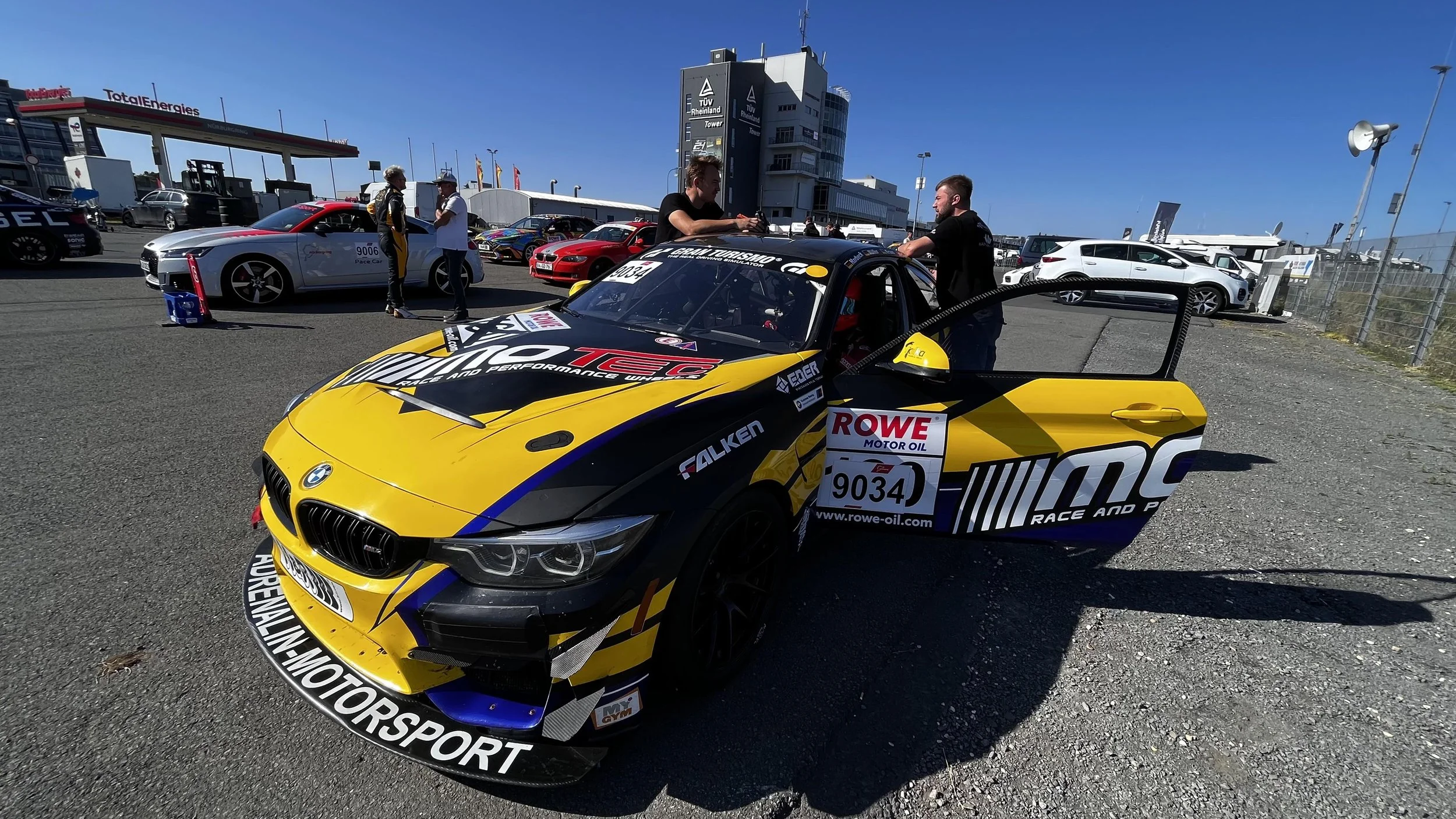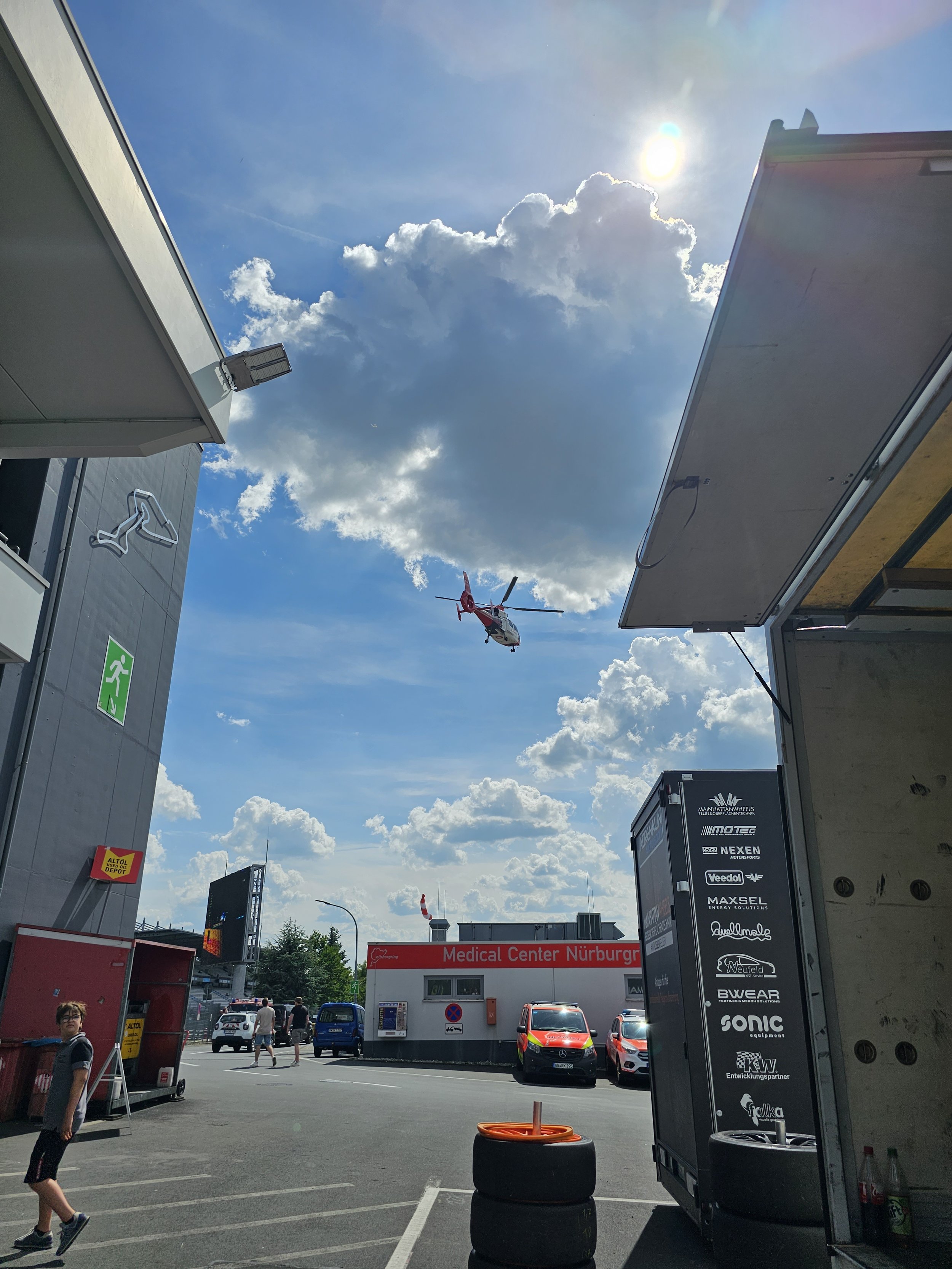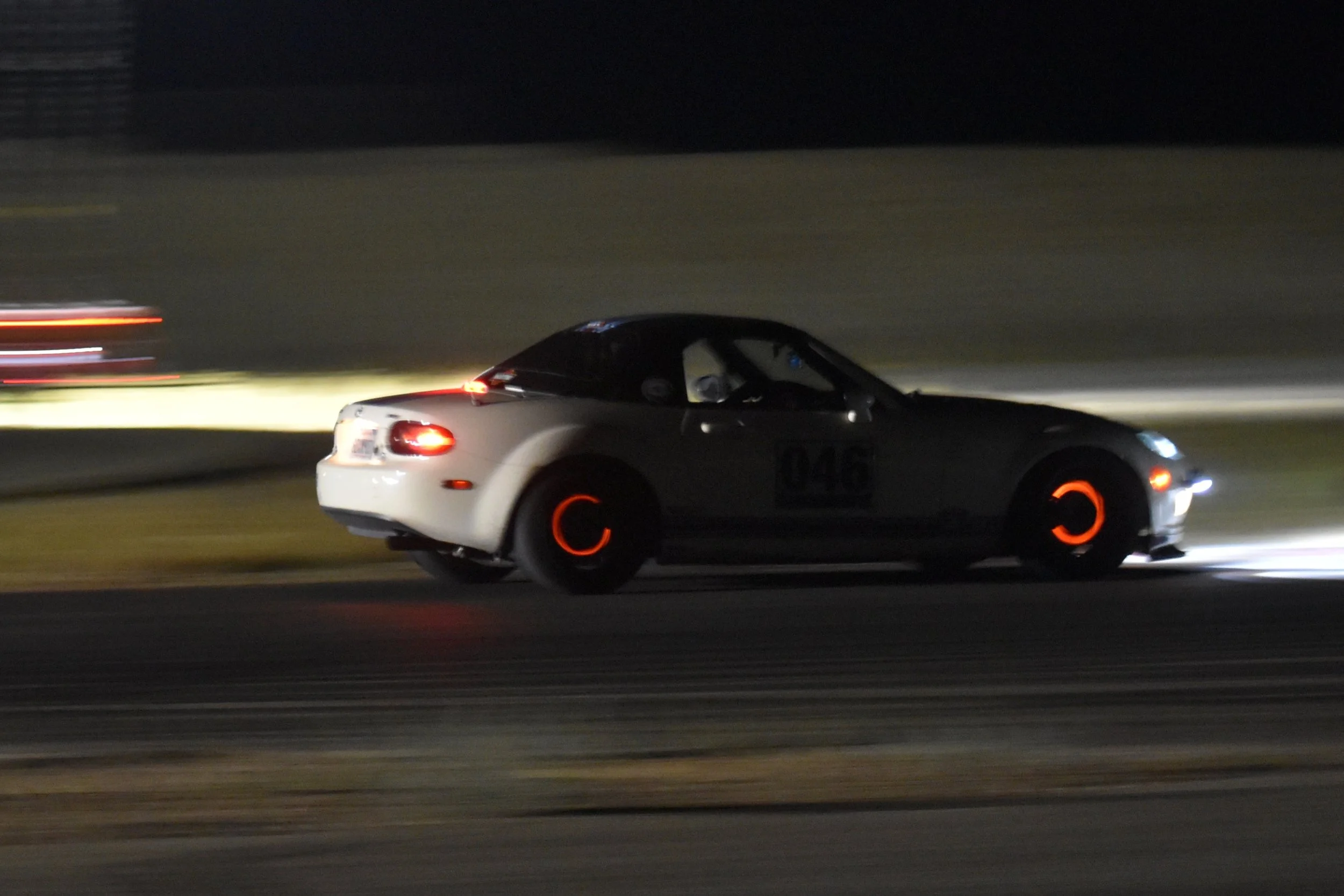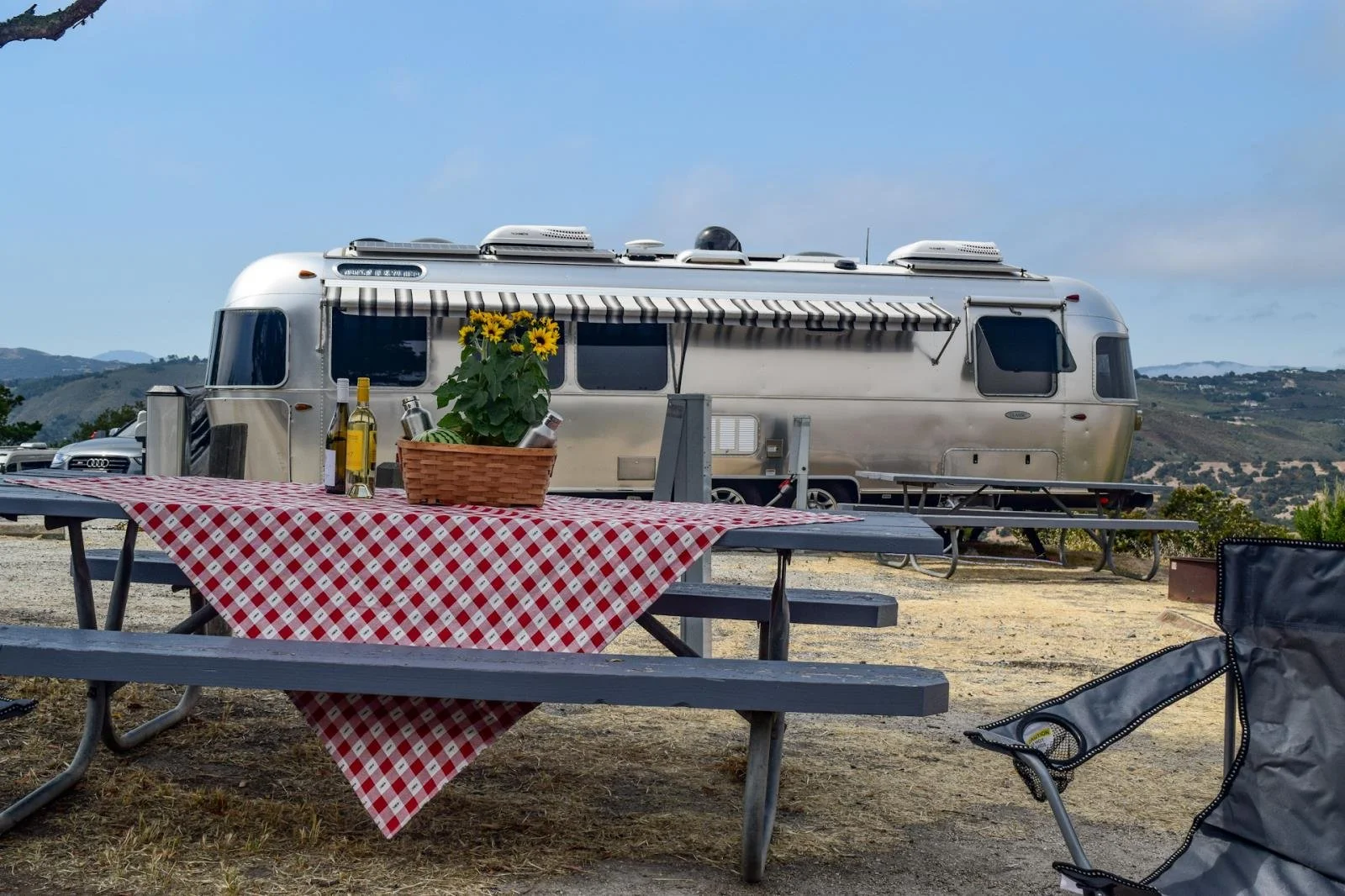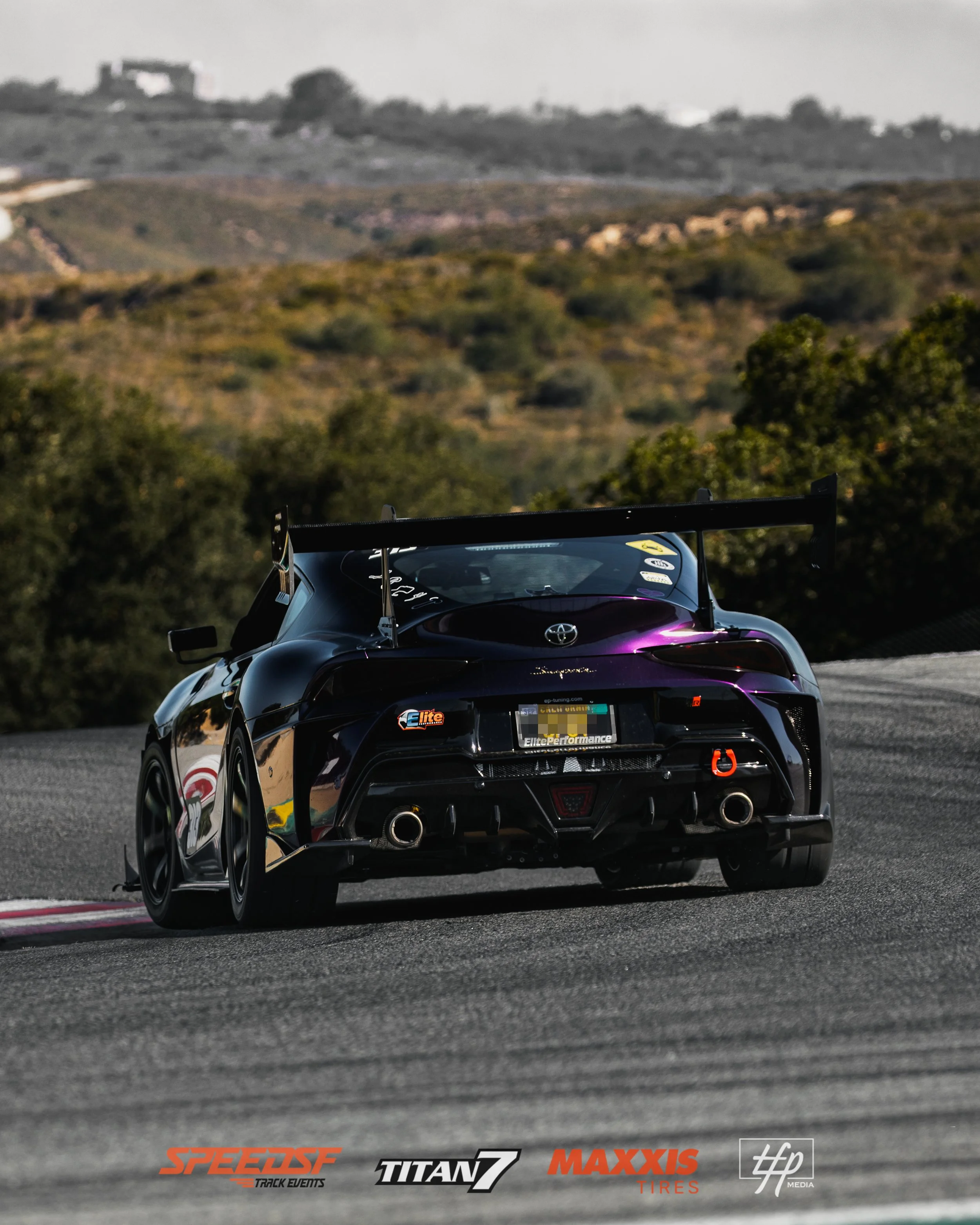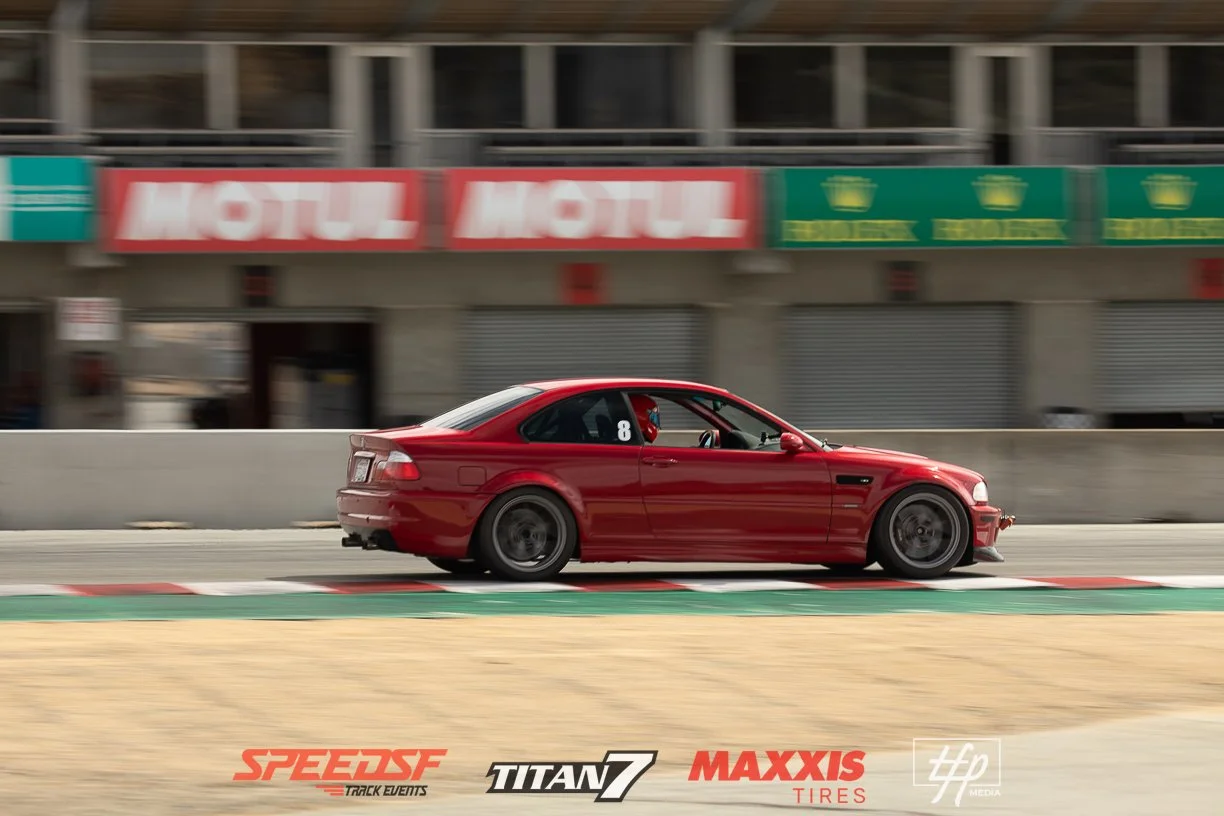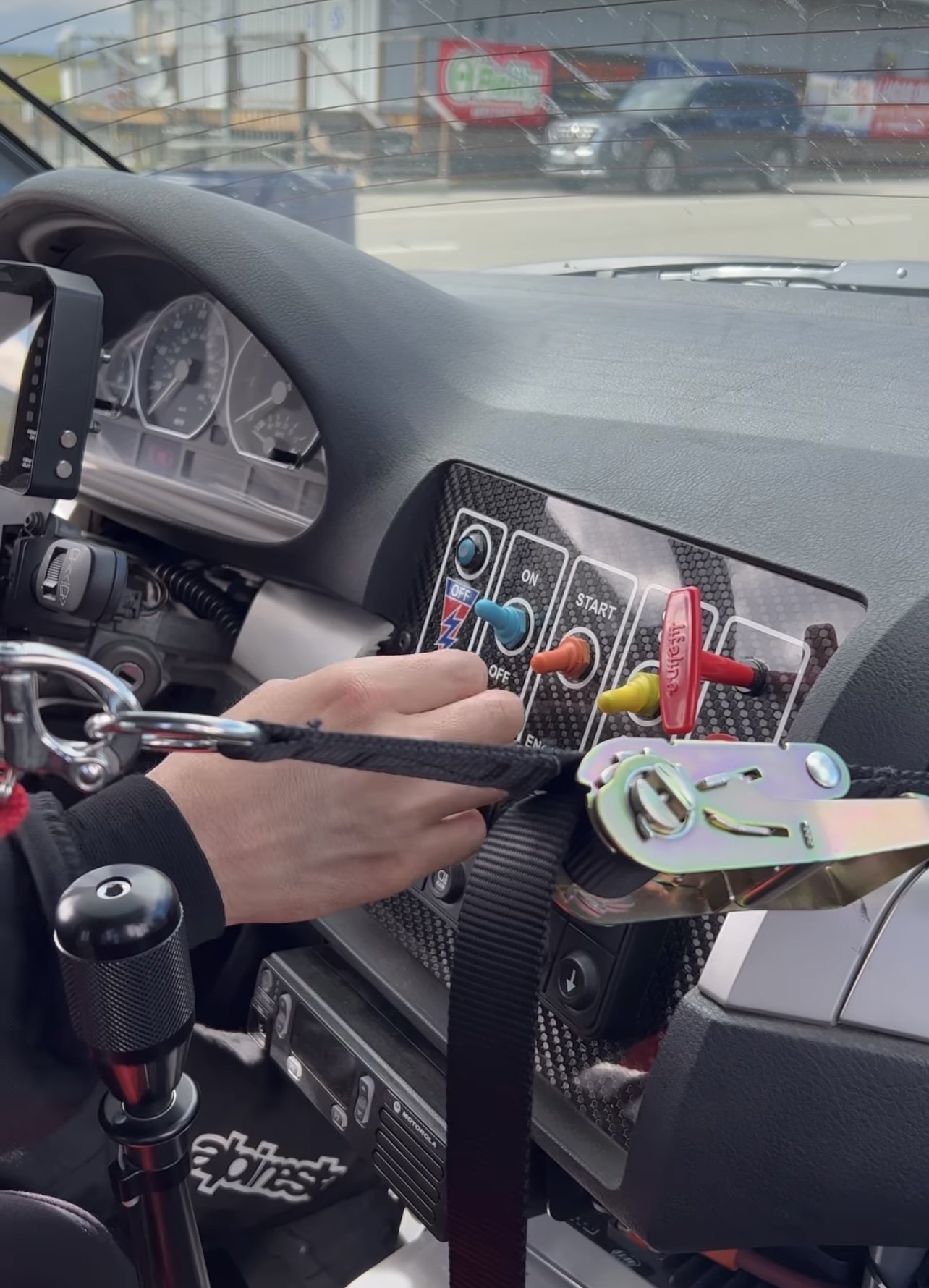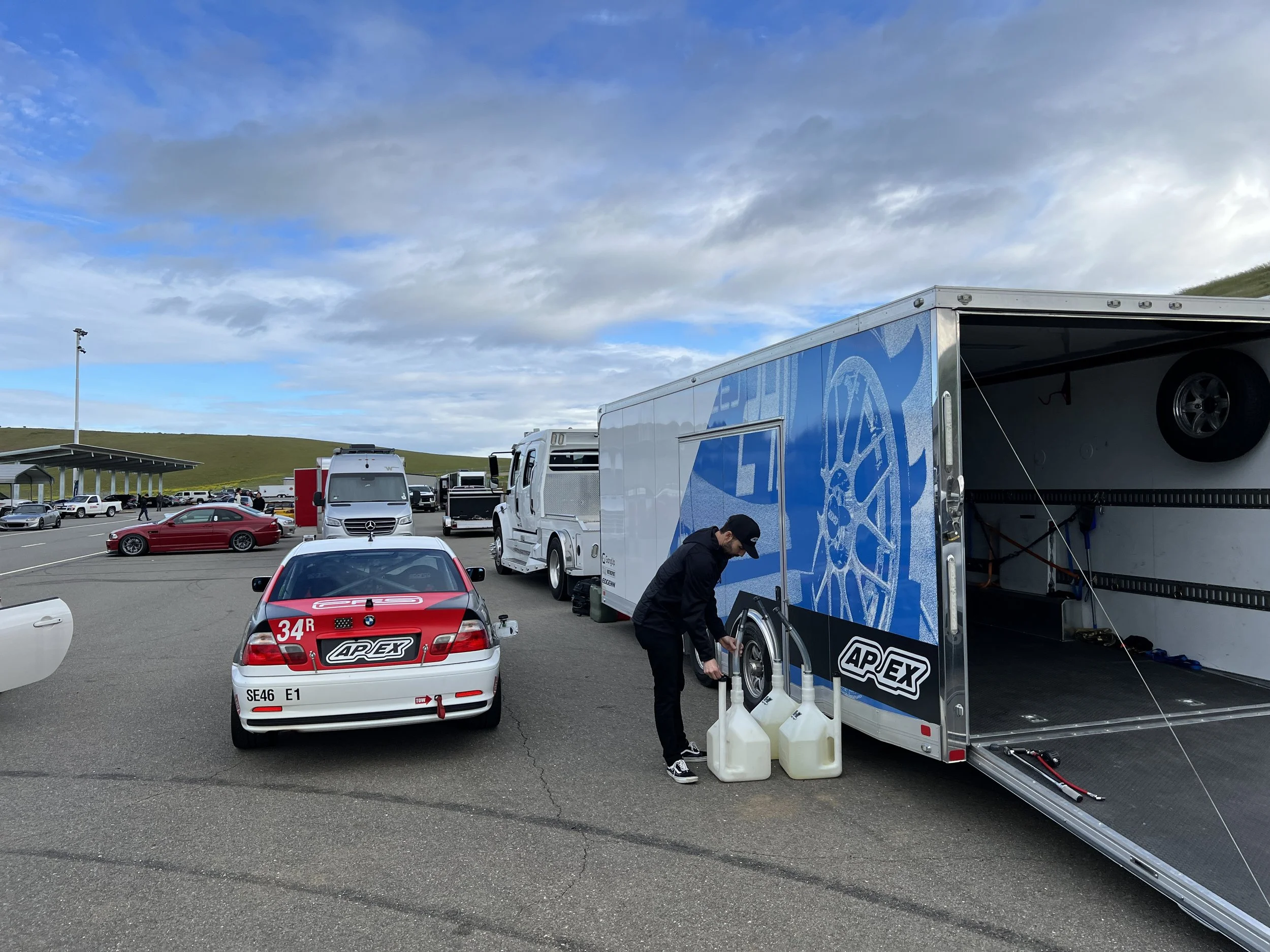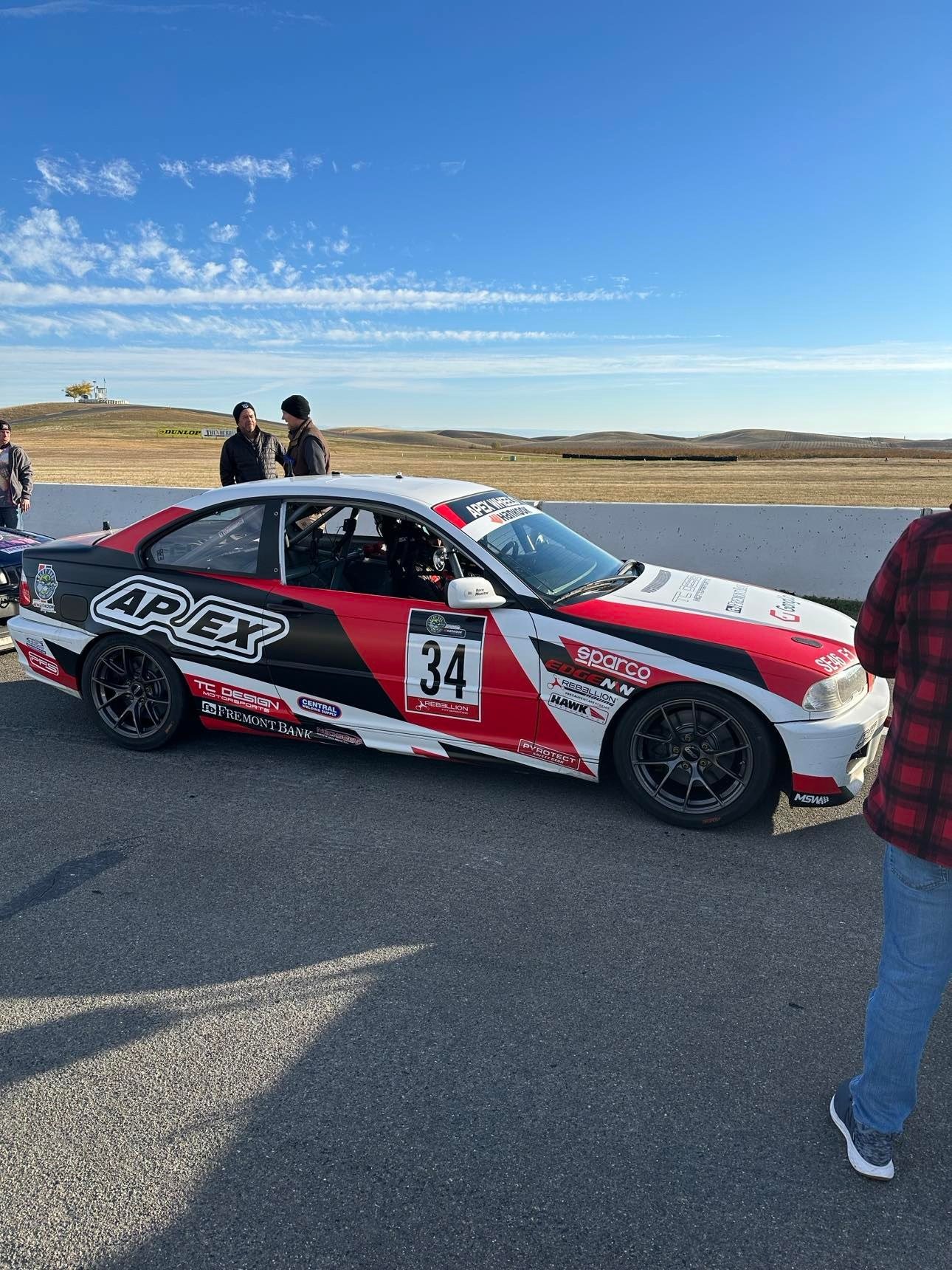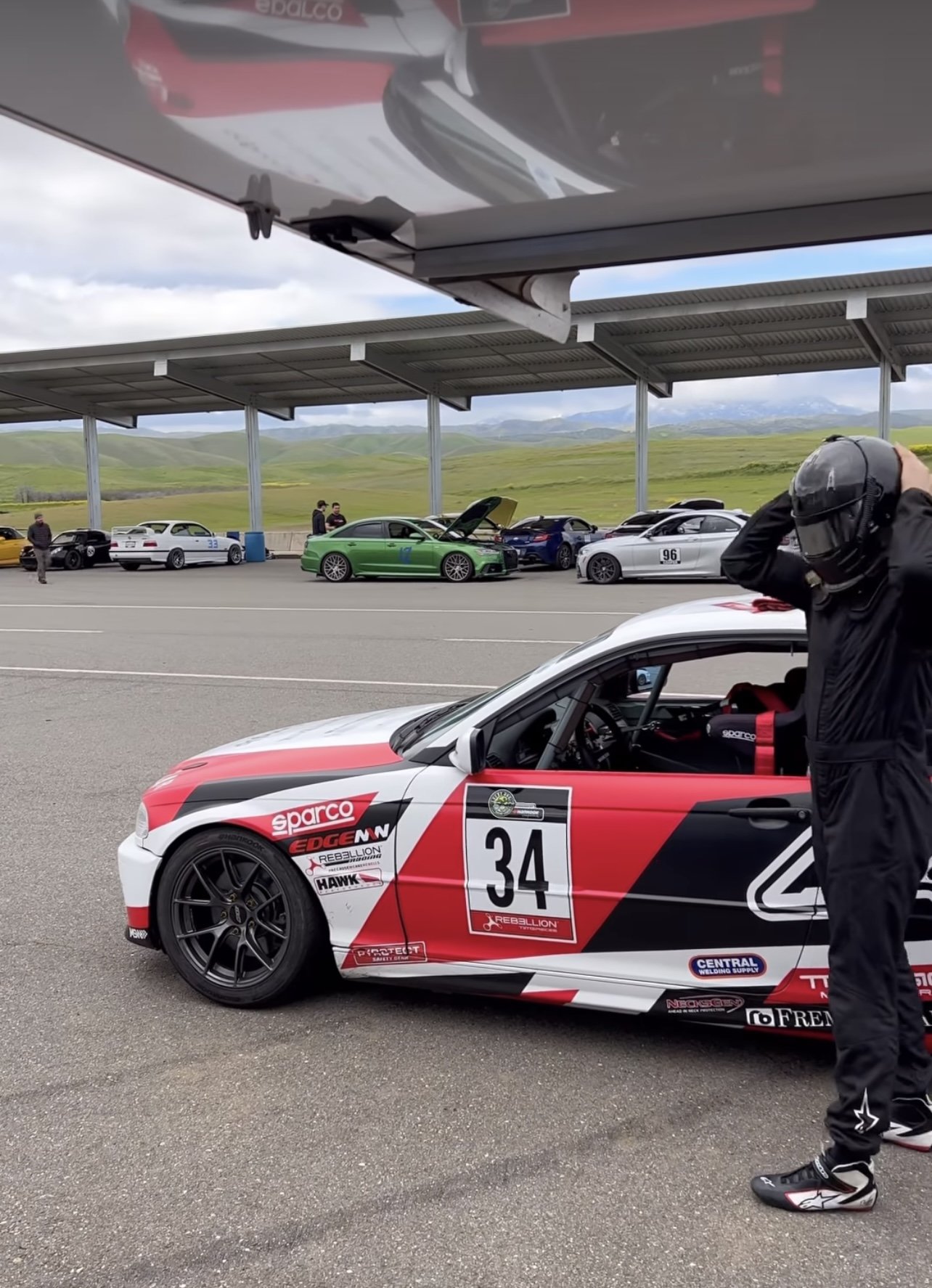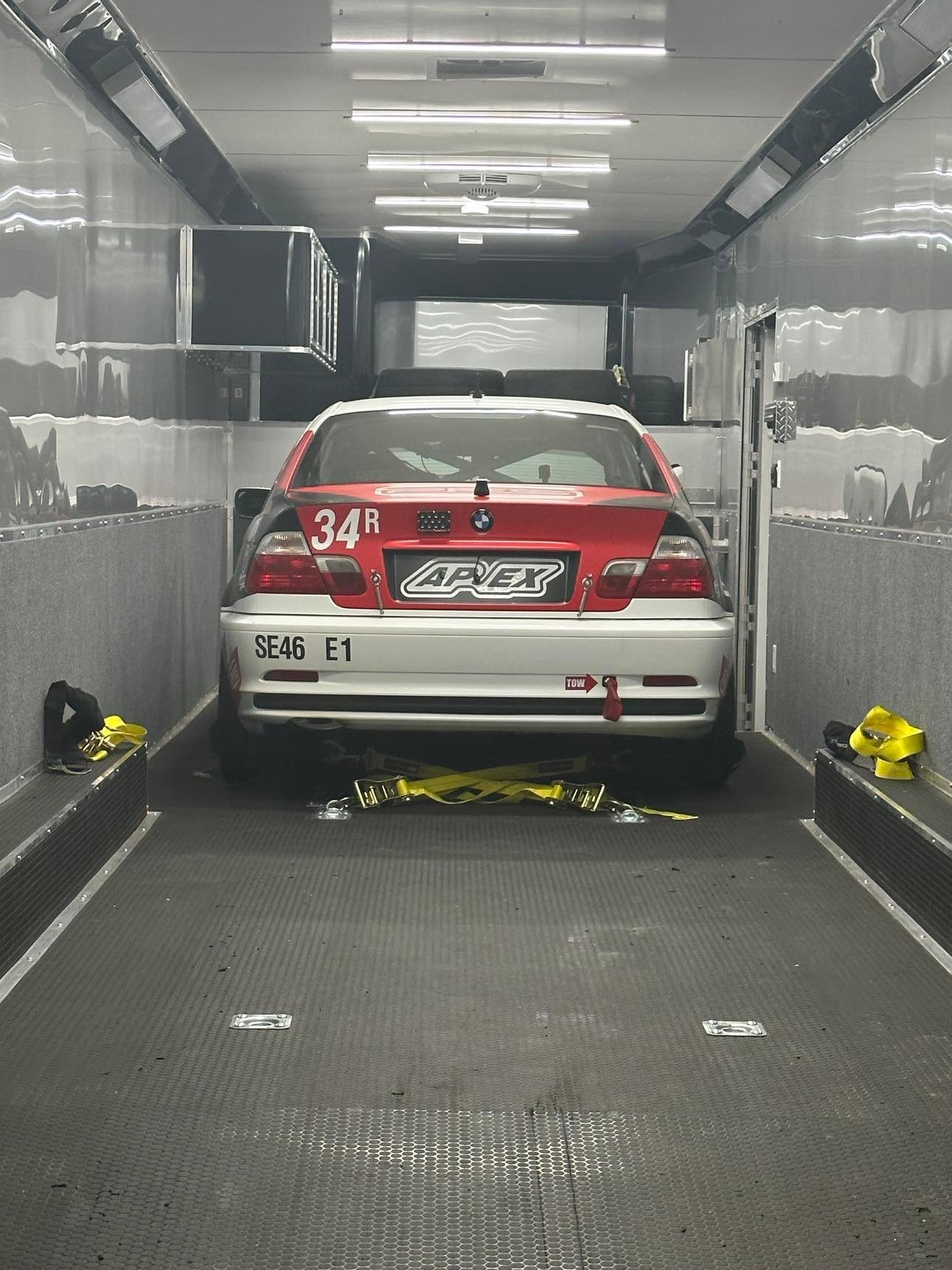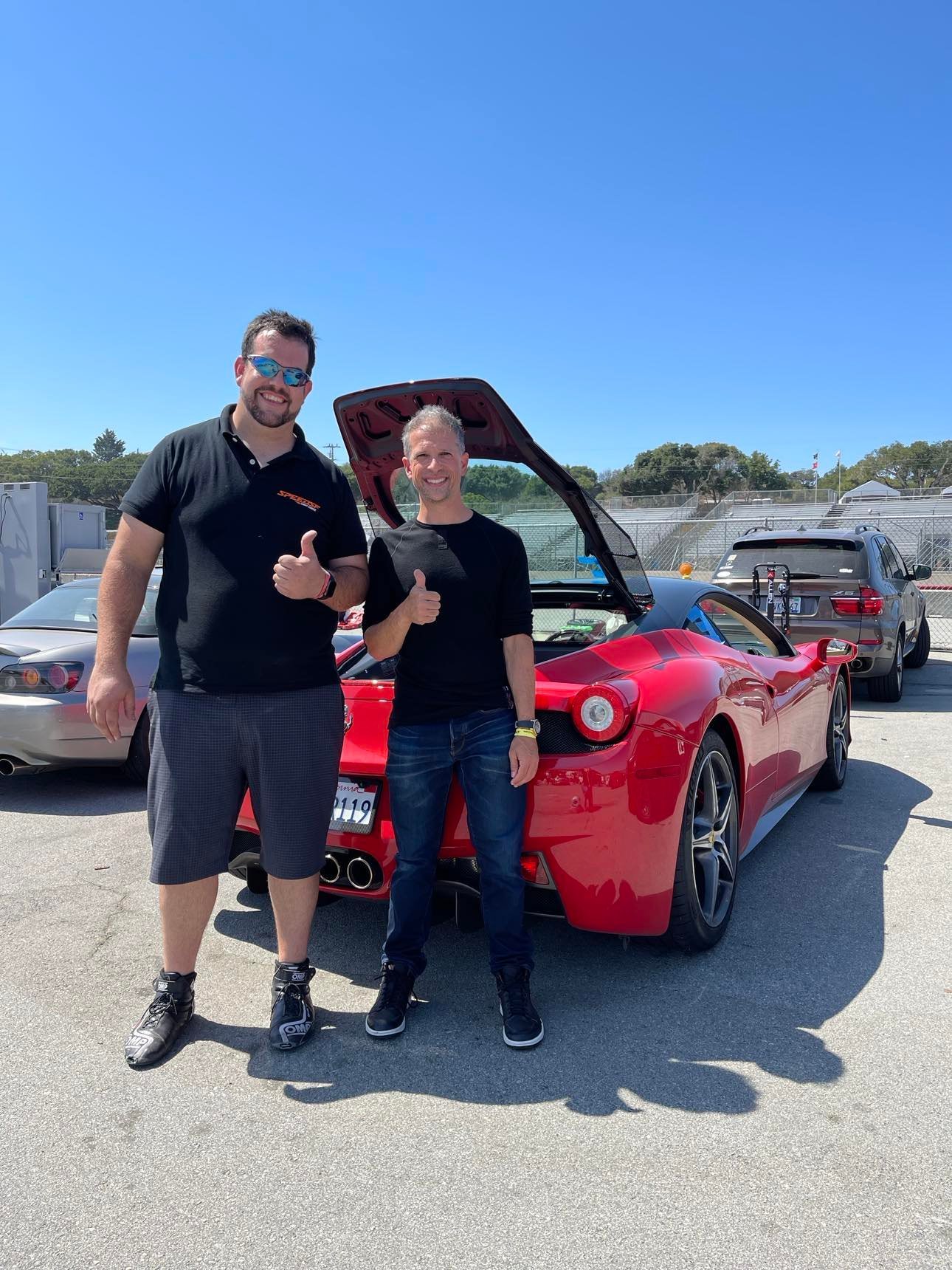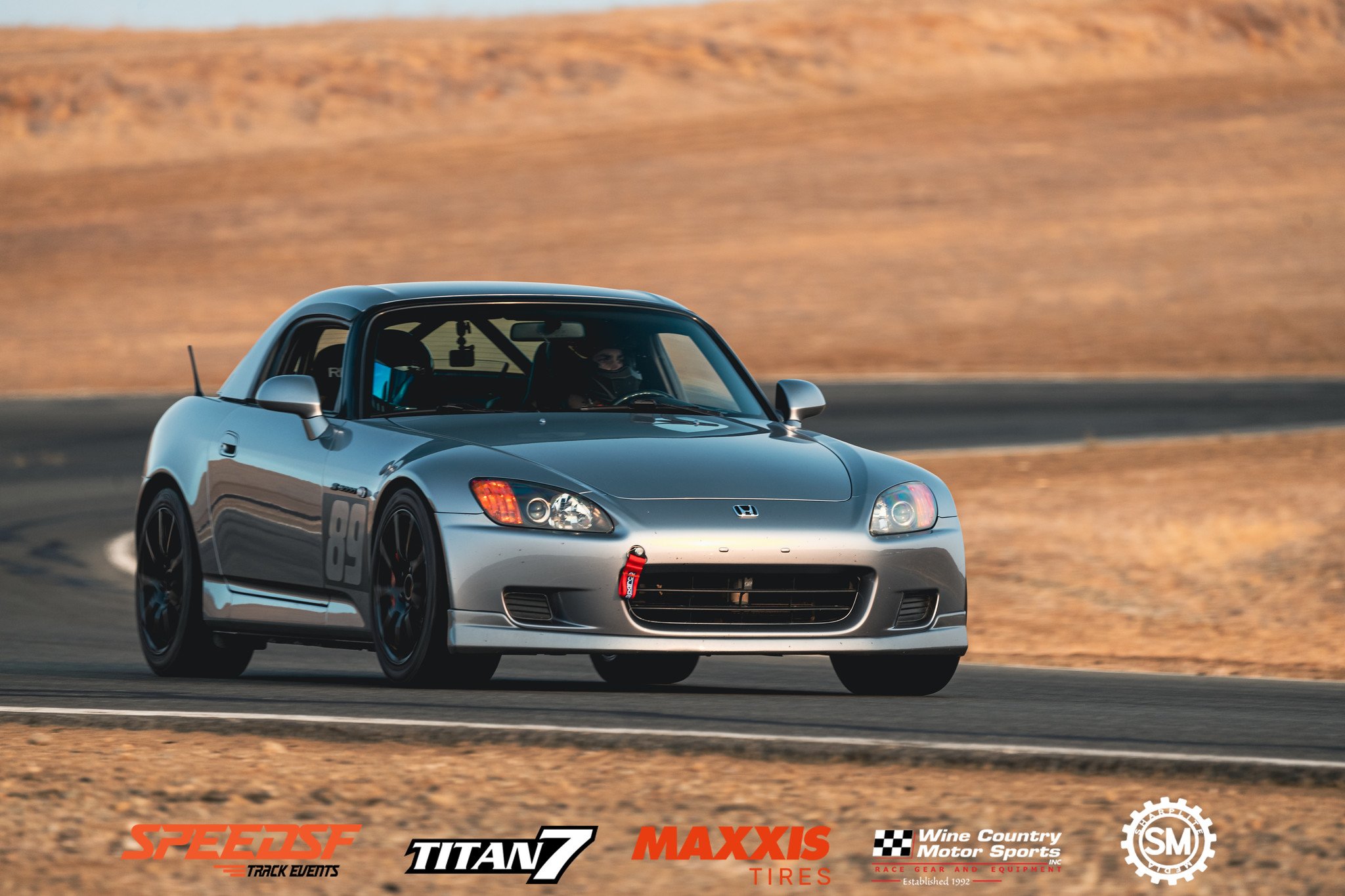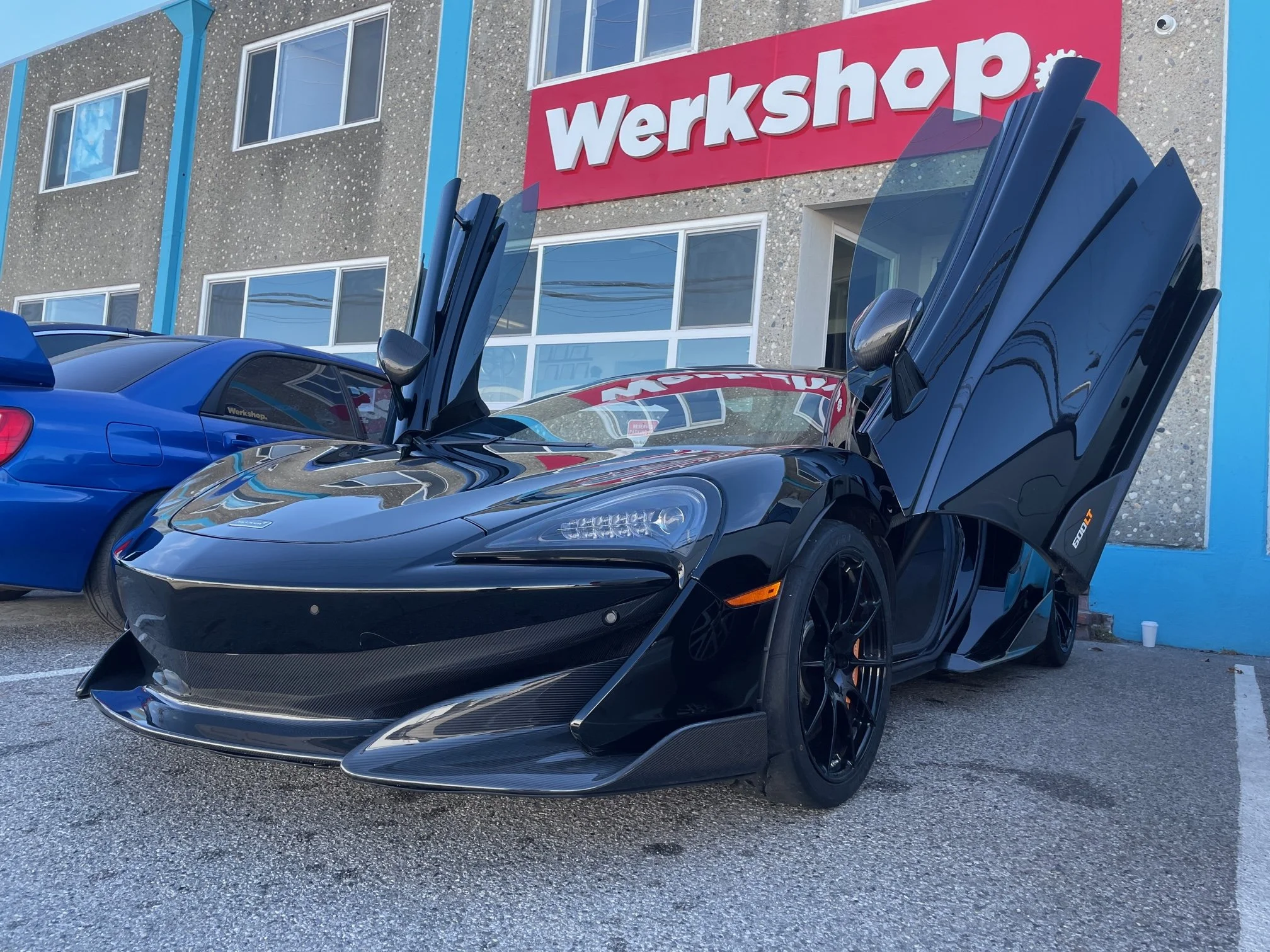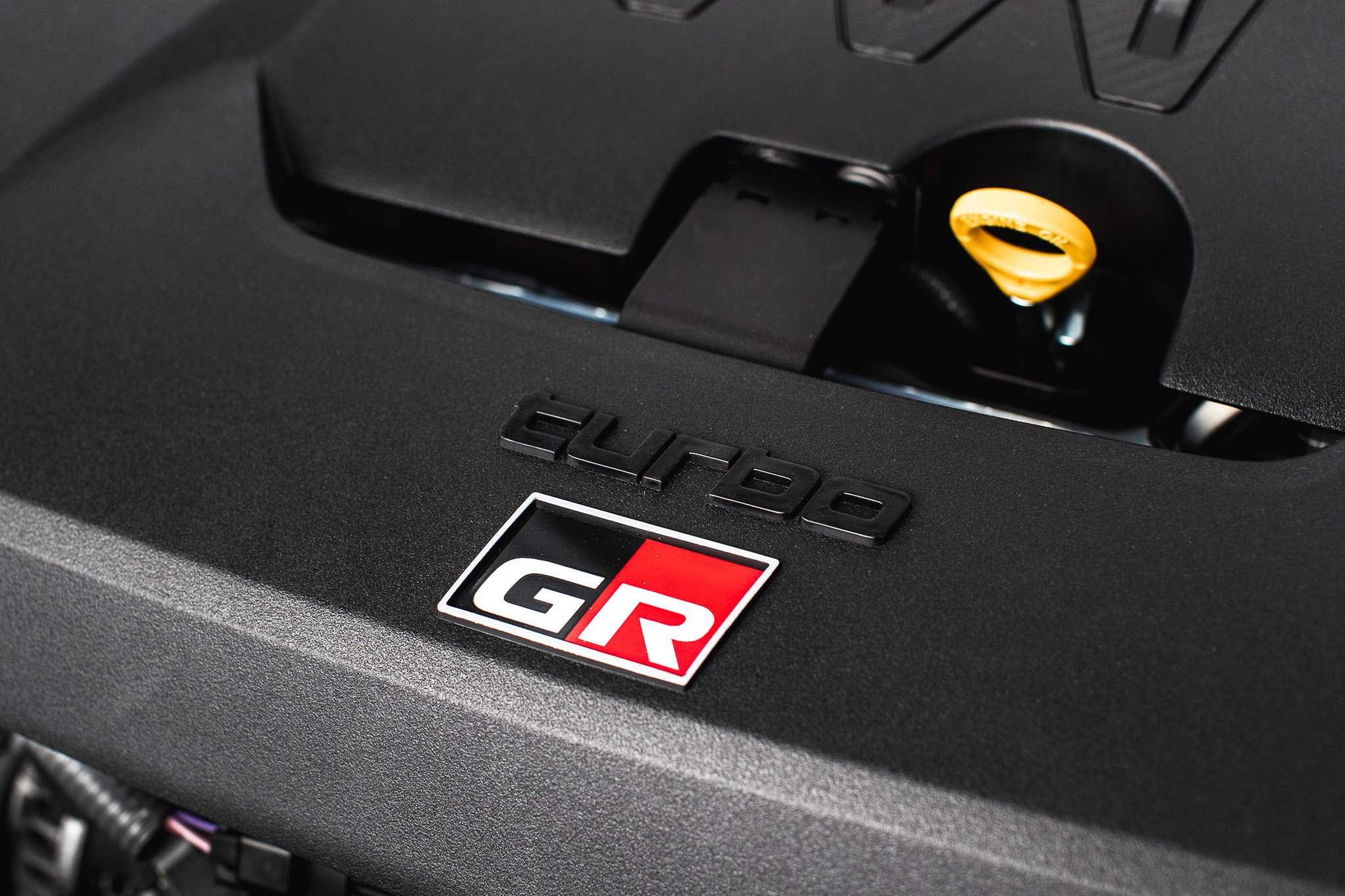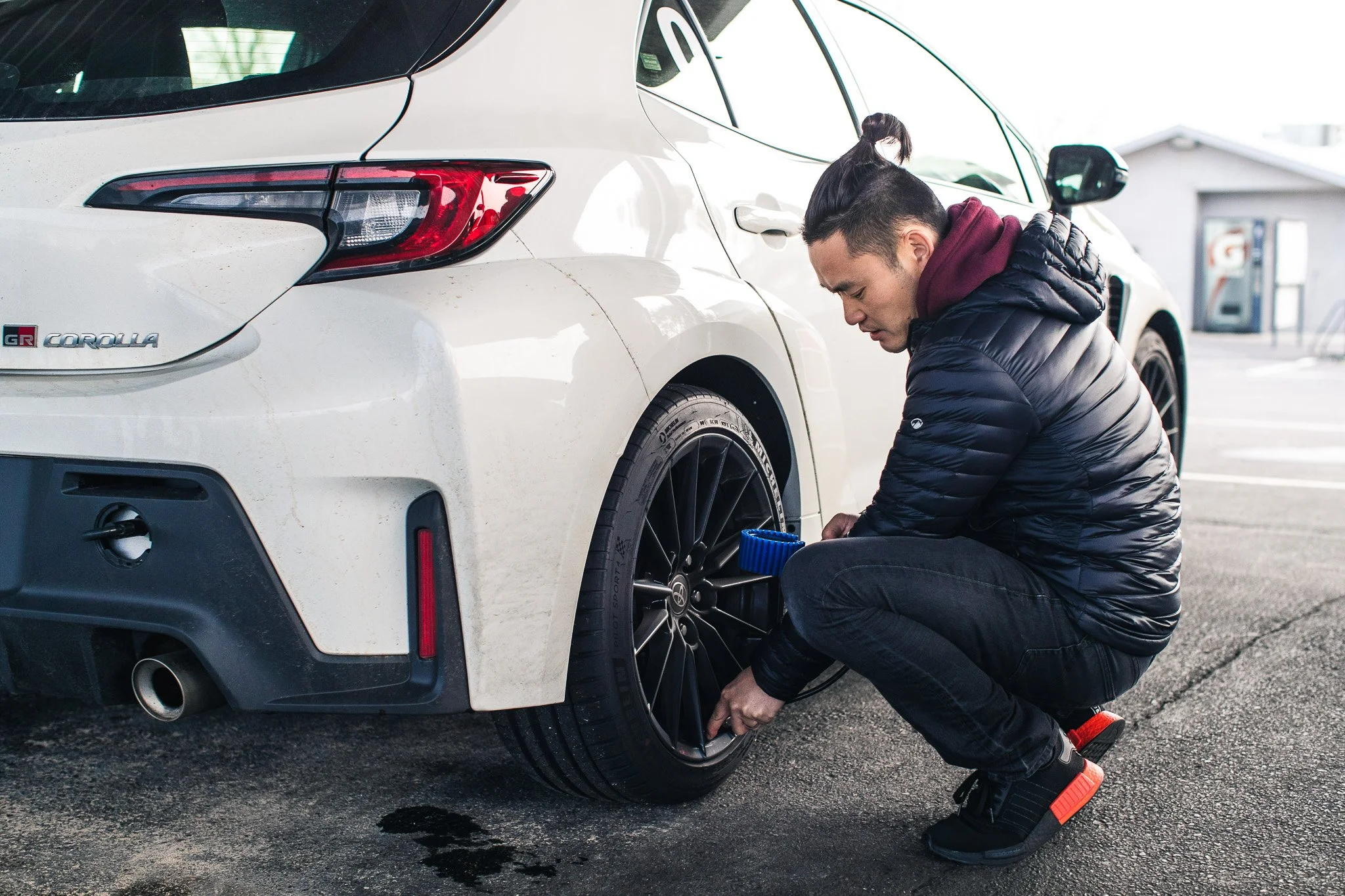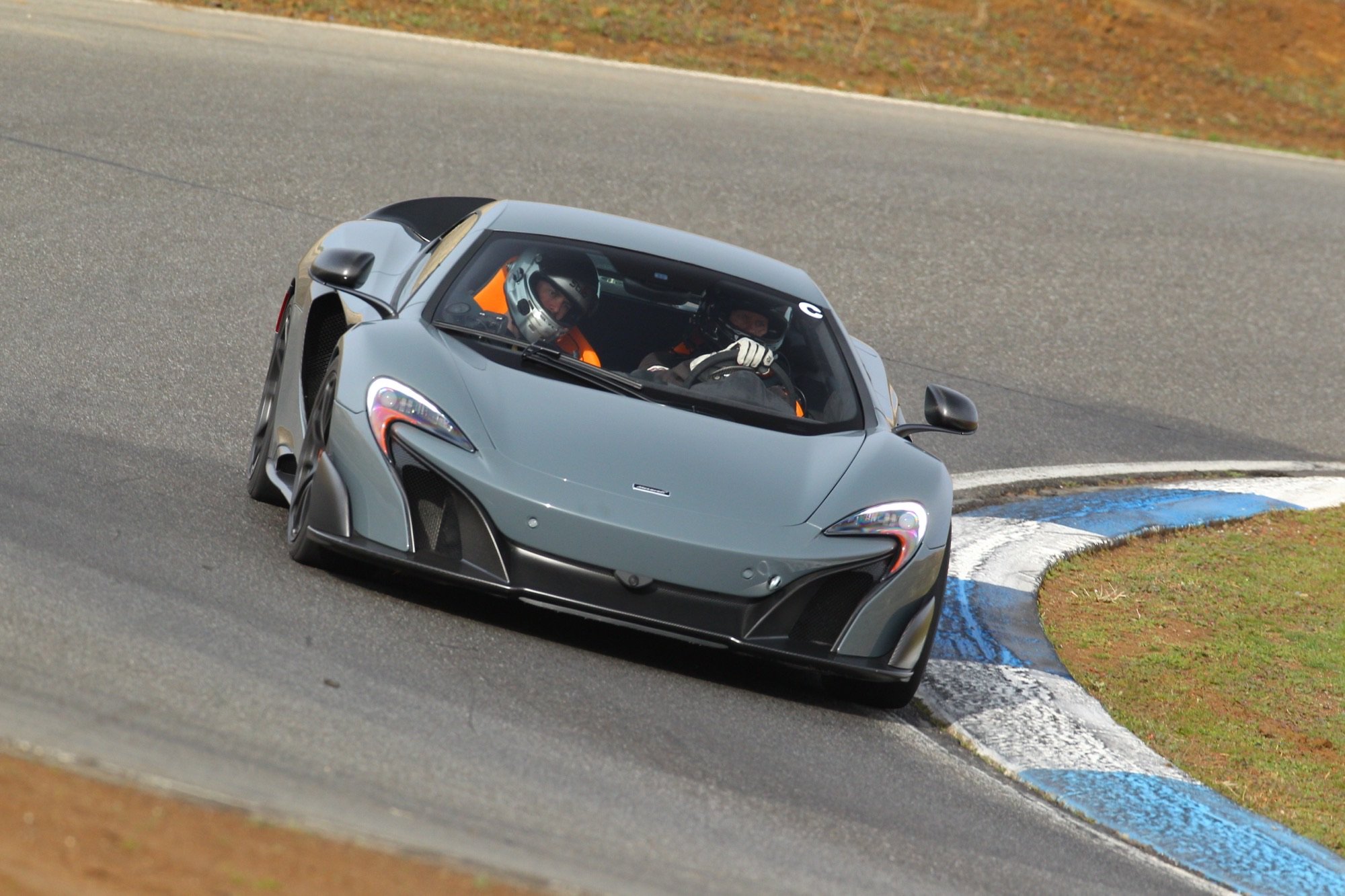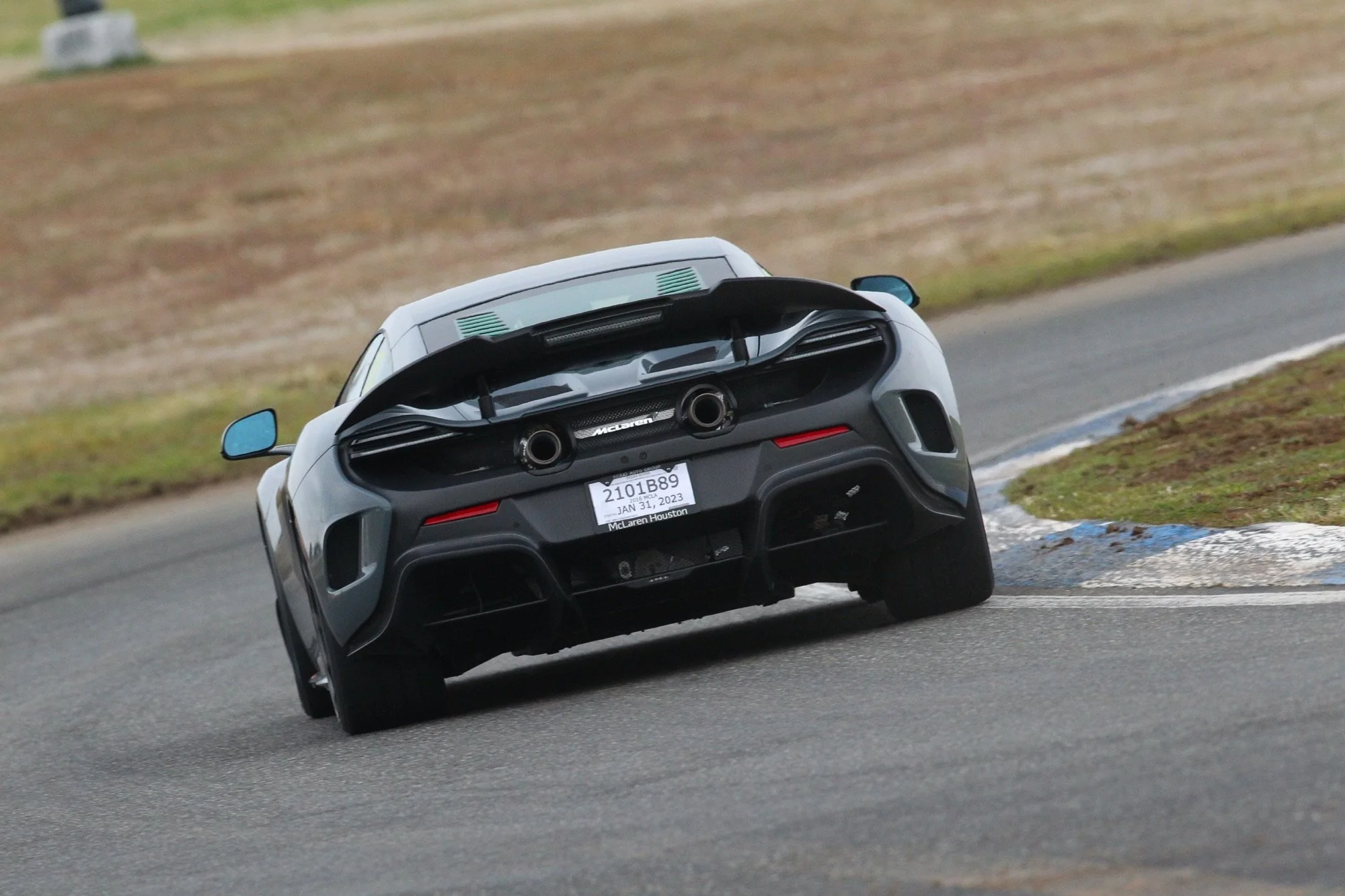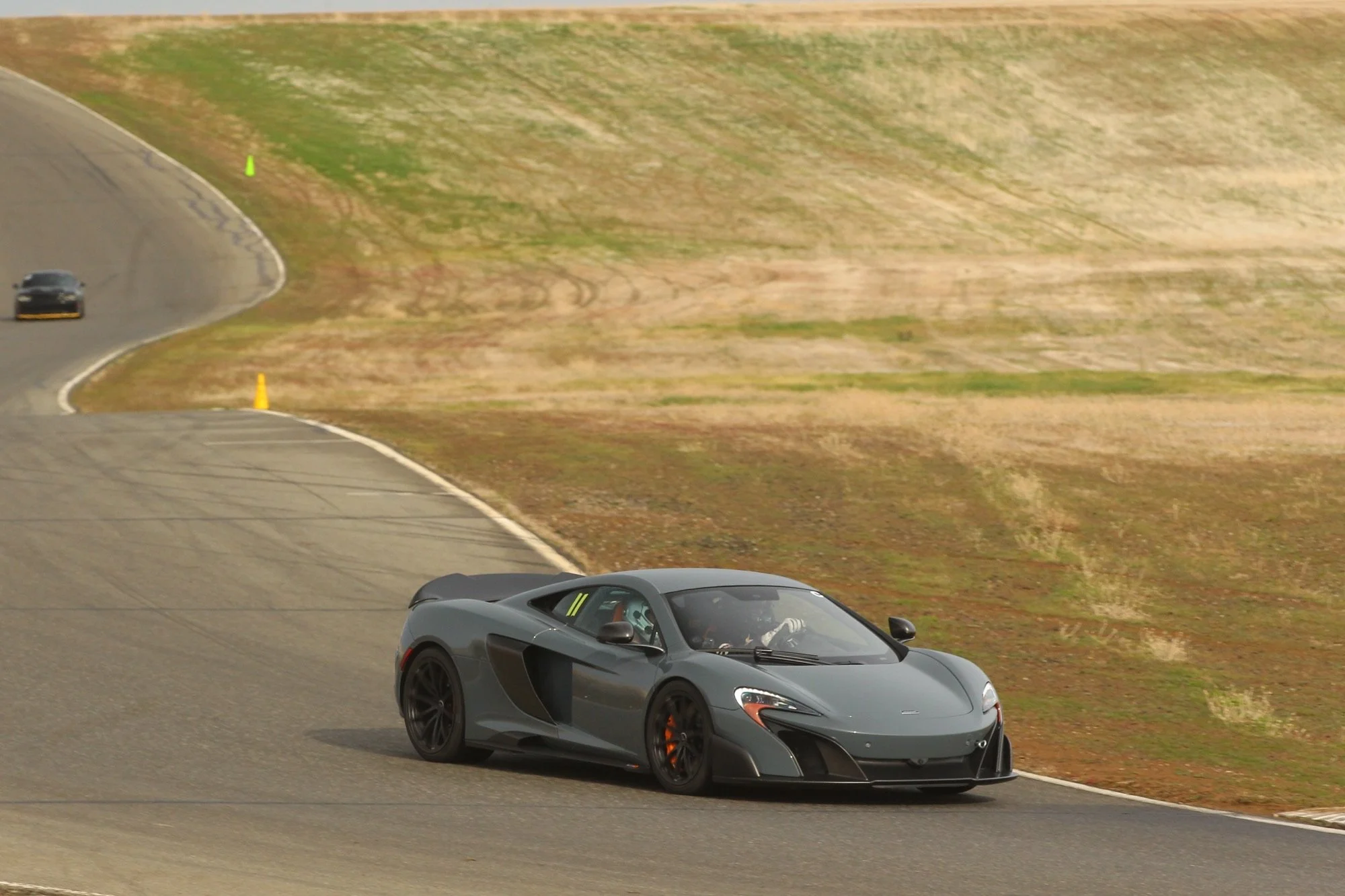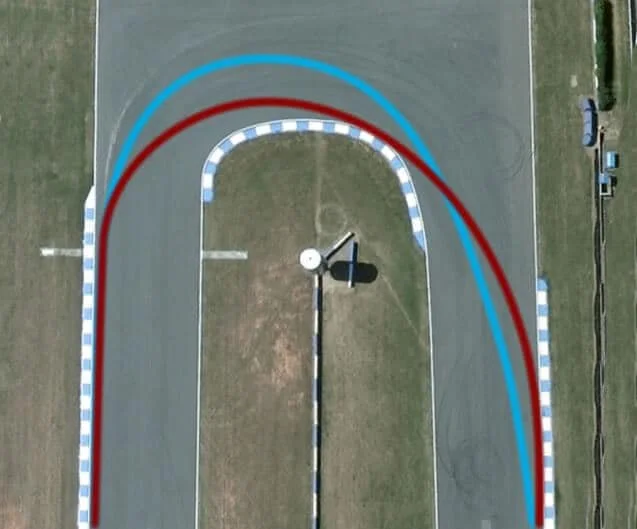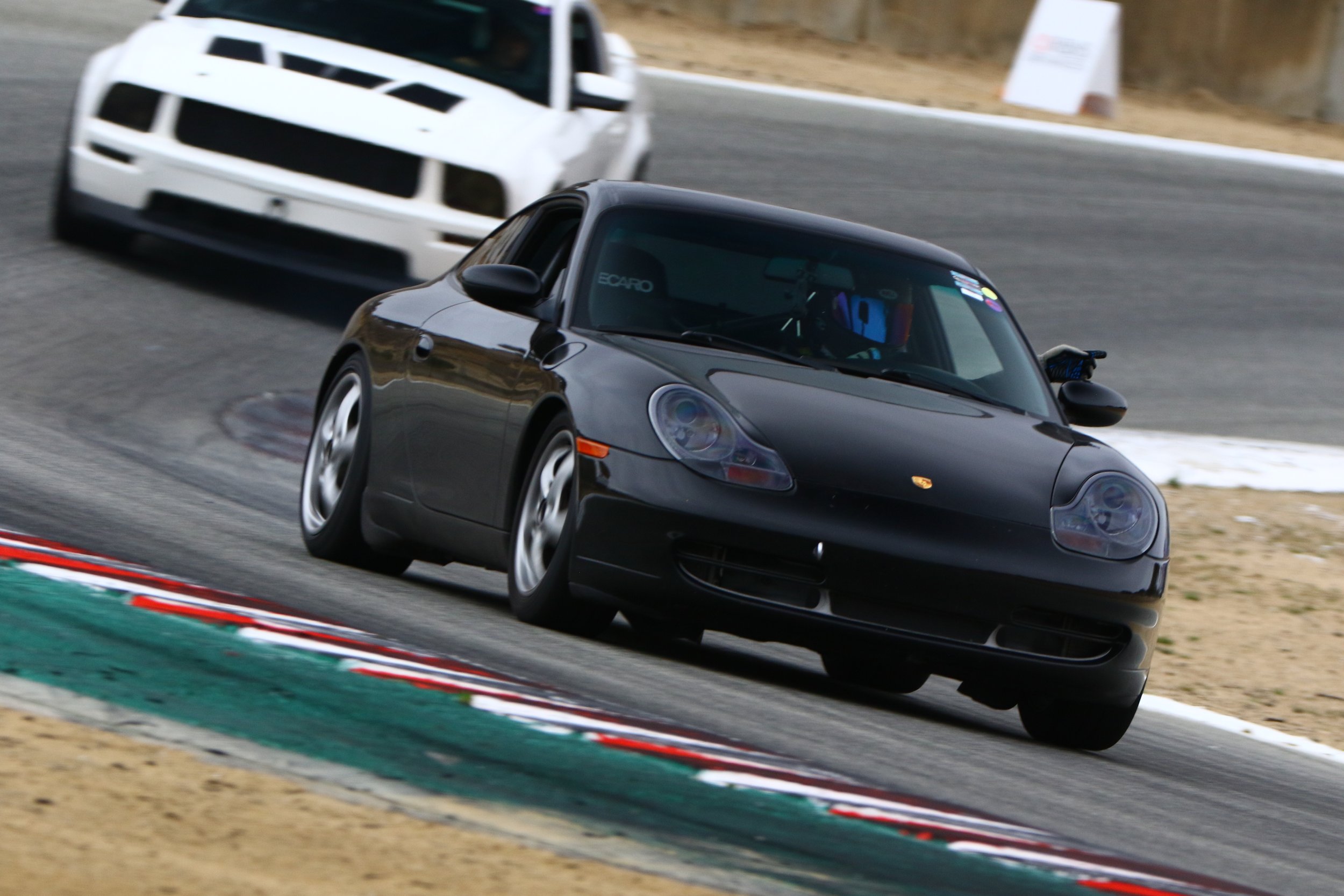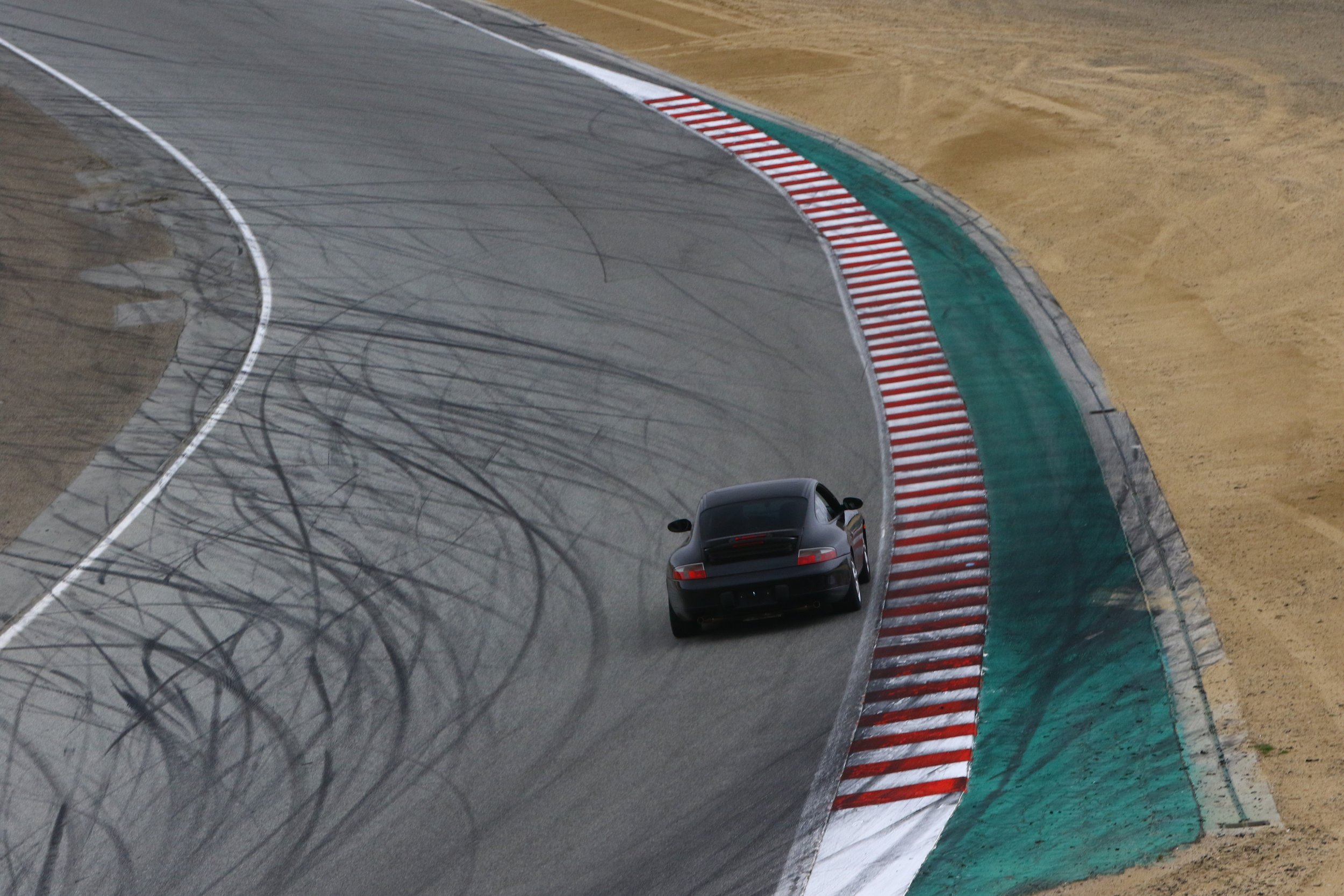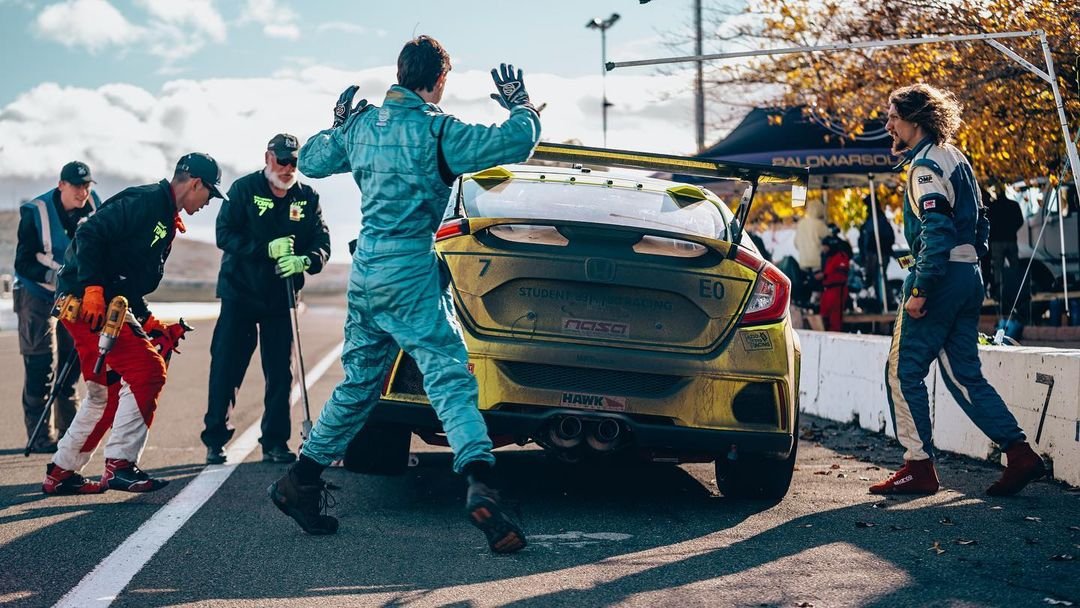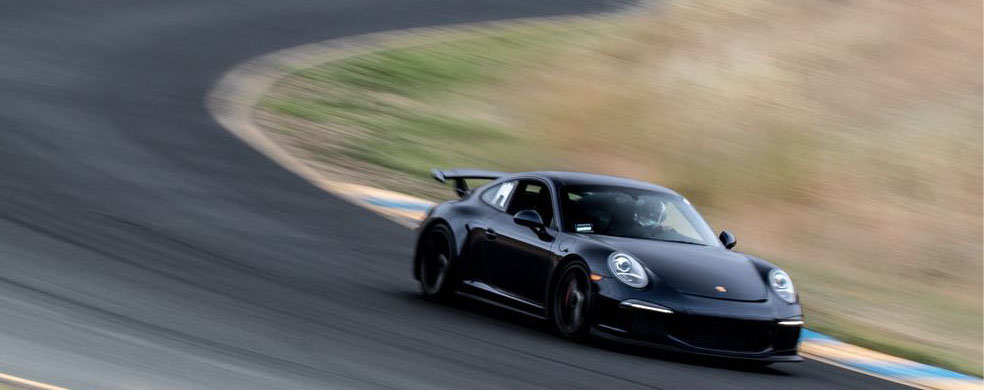
Michael’s 350Z: Take A Chance, Prove a Point
Looking for an affordable drift car, Michael “Stubz” Stillo grabbed a 350Z and started driving sideways. After some time, he recognized the car had potential as a track car -- as long as he could accept a few shortcomings.
Twelve years with an unloved chassis has given Michael “Stubz” Hillo a unique perspective on taking the underdog route. There are other established, well-paved paths with minimal maintenance and certain outcomes, but they don’t offer a maverick a chance to prove a point.
Stubz took it upon himself to take the unloved 350Z and make it into a NASA ST4 race-winner because, well, he hated the idea of conforming. However, before he started his mission, he was after an affordable way to begin drifting. Nowadays, the 350Z is one of the few Japanese sports coupes that offers the sort of value the budget drifters offered back in drifting’s heyday. Even then, it was pretty cheap.
It was more than just an option for the cost-conscious drifter, as Stubz realized. Beyond low overhead, a torquey motor, and a rear-drive layout, the Z has a lot going for it. It’s reasonably stiff, the aerodynamics aren’t terrible, and the aftermarket is decently sized. It might not be as well supported as the E46 M3, but it offers similar power-to-weight figures and the potential to run respectable lap times at a fraction of the price.
The zeal and the commitment to proving the platform came later — at first, it was cheap fun. Beating up on pricier cars was only part of the pleasure; the steering was full of feel and responsive, the motor responded well to modifications, and the rear end put the power down decently.
Some of that luster began to fade when he tried to turn the Z into something more than a midfield car. The budget modifications no longer seemed to be enough, and so he tried experimenting with the high-end brands which only offered limited support for the Z.
After testing Penske and Godspeed coilovers, he settled on MCS two-ways with 18K springs up front and 9K in the rear. The car still lacks some of the compliance he’d like in slower corners, but it works well enough in the fast sections, thanks in part to Epsilon+ aero, that the compromise is acceptable.
The most irritation has stemmed from the car’s flawed braking system. Persistent knockback issues and lousy OEM ABS pushed Stubz into spending hundreds of hours diagnosing and attempting to find a package that would work.
Plenty of thrown wrenches and a thousand curse words later, he found a set of Stoptech Trophy big brakes that did a reasonable job. Because they moved the brake calipers closer to three o’clock, they mitigated some of the knockback resulting from the steering knuckle flexing. The remaining bugbear was the ABS system, which needed to be retrofitted with the Bosch Mk60 kit from Race Harness Technologies.
Though the braking system works decently these days, Stubz isn’t completely satisfied. Trailbraking has improved, but the outright braking performance hasn’t gotten much better. However, some of that has to do with the weight of the vehicle, which has been hard to lose with conventional stripping methods. “You’ve gotta get pretty creative when it comes to putting the car on a diet. I didn’t want to, but I had to buy carbon. Hatch, hood, front bumper, and headlight blanks from Spinnaker Composites have helped, but the car is still heavy.” he explains.
It’s transformed into a reasonably swift car in recent years, even with the diminishing returns from spending big bucks on primo parts. The 3,200-pound Z has an average of 257 horsepower which is pretty well administered thanks to 275-section Toyo RRs and the aforementioned aero. A broad powerband helps make the car less track-sensitive than some, and, anyways, Stubz no longer agonizes over finding the perfect setup. After several years of head scratching, he sees the Z as a dependable, safe, and sturdy car which is easy to run and satisfying to drive. Going for the gold isn’t his aim any longer — he’s happy with what the 350Z’s speed. Any car that can lap Buttonwillow W13CW in 1:54 is more than just fun — it’s seriously fast.
Striving to perfect the car sapped some of his ambition, but it’s also given him a few notable wins, wisdom, and a pragmatic approach that provides him with peace of mind. His lack of zeal might not motivate newcomers to try and beat the odds, but if they read between the lines, they should realize that there’s nothing with the Z as an entry/mid-level car. It might not carry an ambitious driver to the top of the podium, but its golden era-pricing lowers the barrier to entry. It’ll help them get involved faster — and in Stubz’s view, that’s better than sitting on the sidelines and dreaming of victory.
Aidan’s GT3: Vision Realized
Driven to realize a very specific dream built on years of tuning high-revving Hondas, Aidan decided that this 991.2 GT3 would have the subtle cosmetic touches to wow crowds and the high-end racing modifications to set seriously impressive lap times.
Photo credit: @z_stills & @tengerphoto
As Aidan Vo moved through adolescence, his affinity for cars carved out a prominent place for him in the San Jose drag racing scene. After he built an all-motor DC2 Integra capable of twelve-second passes, the big magazines came calling. This was the early 2000s, when the tuning scene was enjoying its biggest boom.
Through some of his drag racing acquaintances, Aidan eventually made the leap into road racing. Following his foray at Thunderhill, he started outlining a list of changes the Integra needed to become a corner carver, and for a moment, it looked like Endless might foot the bill.
So Aidan began disassembling the Integra and shelving the parts which wouldn’t do much good around a road course. Halfway through the teardown, he had a change of heart. He parted the car out, sold the chassis to another racer, and decided to hitch himself to the all-wheel drive wagon that’d just reached American soil.
It was in a Subaru WRX STI that really learned how to turn fast laps. His confidence bolstered by the safe, accommodating four-wheel drive, he earned his spurs in relative comfort. Then he switched camps and built a cost-no-object Evo X, which earned several magazine spots. Not only had he become well known and capable around a road course, he’d been rewarded for expressing his inner vision.
As his income grew, he started searching for a new platform. Something with a little more panache — something German.
The big Audi RS4 might not have been at home on the track, but the fit and finish of a plusher, posher machine did spark his imagination. There was something distinctive about it; something which resonated with Aidan and his appreciation for high style. The jump into the Euro market got his imagination running, but, unfortunately, that would be the extent of his involvement with cars for some time.
After living through the height of the tuner craze and enjoying all that the burgeoning market could offer, Aidan stepped away from cars to focus on his career and his growing family. All throughout this quieter interim, he couldn’t successfully quiet one part of his mind. “I missed that buzz; I had to create and build again,” he reflected.
Ten years of car-free focus had done wonders for his finances. Not completely car-free, however; he spent many evenings over that decade drooling over builds his younger self could never afford. When Aidan decided to return to his old hobby, he brought with him the means to realize a plan he’d held for a decade.
“I’ve always been captivated by the Porsche 911 since the 993 generation,” he began. “It’s always had a clean, restrained, understated design — that’s a big part of my aesthetic.”
A few weeks later, he rolled his new 991.2 GT3 into his garage, parked it, and pictured the finished product in his mind with all his planned modifications. The challenge he’d set for himself was considerable, but he had a clear plan and a few connections to help him along.
The Singer DLS was the one machine which inspired the build. “I’m not a Porsche purist who doesn’t believe in tinkering on their car. I see a Porsche as a vehicle that I can use to promote my vision.”
Knowing that the name Manthey was synonymous with Porsche performance, he did what all GT3 owners with grand aspirations for their build would do: purchase Manthey’s complete suspension, brake, and aero package.
There are only a few GT3s equipped with these parts in the Bay Area, and for good reason — one kit costs as much as a newish economy car. Most struggle to justify spending nearly thirty grand on Manthey-tuned KW dampers, solid bushings, brake lines, pads, dry carbon wing, as well as a Cup car’s front splitter, but the resulting crispness and composure is worth it to those with discerning taste and deep pockets.
Perhaps the one downside was that, for all that money spent, the car didn’t look much different than it did prior to the modifications. With so many Porsches looking so similar, Aidan decided to give a nod to the Porsche styling of yore by replacing the factory GT3 wing with a Porsche Sport Design ducktail. He learned shortly after just how difficult it would be to swap out this piece, retain all functionality, all while using OEM Porsche parts — and only OEM Porsche parts.
A hundred calls to local dealerships resulted in the same sad message: “on indefinite backorder.” It took months of perusing before he found an appropriate ducktail from a local owner looking to return his Sports Design-equipped car to stock, but he finally found the part. With the ducktail in hand, he felt as if the build were gaining a momentum of all its own. “Finding that part gave me the confidence to continue doing things the way I want to do them. Everything happened so organically, it almost felt like destiny.”
It’s subtle, but it sets it apart from the rest of the winged GT3s driving around San Francisco.
Of course, the body and the engine underneath would require several tweaks to accept the new boot-lid. Aidan had to source a 911R intake, 911R engine cover, the hinges, every nut and bolts and the oil return lines to allow this new body panel fit snugly. Unfortunately, What would seem to be a simple swap took months and countless emails.
The tradeoff was obvious. “The ducktail definitely makes less downforce than the original wing, which I learned when trying to go flat over Turn 1 at Laguna Seca, but it helps with rear visibility.”
With used 911-money spent on the suspension, it would only make sense to do the same with the powertrain. With Dundon Performance on the phone, Aidan specced out an engine package that would uncork the power of the 991.2 GT3, more mid-range torque and a top-end that reminded him of some of his fastest Hondas.
Dundon provided him with an intake, throttle body, plenum, and headers. JCR provided their titanium race pipes and titanium exhaust tips. The combination of these parts together allows the car to scream like an RSR at redline while keeping a deep, sonorous growl at lower revs.
With the way the GT3 was evolving into something like a racing car, Aidan decided to try and give his car the front track and aerodynamic grip of its race-only sibling, the GT3 Cup. He rung up his contact at Manthey and ordered the primered fenders, flares, splitter, bumper, and crash bar from a bonafide 991.2 Cup car. His painter Jesus matched the new parts perfectly and even achieved OEM paint thickness.
And now Aidan has something that is undeniably his own. Even if it were for sale, his buddies would never attempt to buy it. “‘It’s so obviously his, I wouldn’t ever feel like I owned the car,’ one of my friends told me.”
But is it a show car or a track toy? Aidan doesn’t believe there needs to be any distinction between the two. He’s made steps towards having both distinguished looks and serious performance, and all that he’ll need to do to suit his mood is change a few bolts and reorient the engine fans.
“As pretty as the trunk is, it definitely lacks downforce compared to the Manthey carbon wing. I’ve planned ahead to regain the downforce we all crave at the track. I have a Cup decklid and wing ready for track days. That arduous ducktail swap was done specifically to allow swift decklid swaps when it comes time to take the GT3 back to the track. All you have to do is reorient the fans to fit the subframe brace. After that, you’re off to the track.”
At this point, he feels he’s nearly realized his vision. Aidan cannot see himself selling the car, but that doesn’t mean he’s going to make it a collection piece. Instead, he’ll put it through its paces, enjoy it as both a driving tool and a rolling piece of art, and hope that his commitment and the car’s obvious quality will inspire the next generation of speed freaks with an eye for design.
Walter’s Sentra: Lifetime Obsession
Twenty years after crewing for various teams in the Spec SE-R series, Walter began racing himself and made a very special Sentra his own.
A lifelong Nissan fan and a crew member for an old NASA team running an SE-R, Walter seemed destined to pick up this particular Sentra. His family had brought him up on Zs and Maximas, so when Walter turned 16, he bought his first car, a 1991 Sentra.
That sowed the seed for the next several years. Inspired by Need for Speed, he started tuning his Sentra and soon became a knowledgeable voice in the community as well as an in-demand mechanic. His reputation opened the door to crewing positions for several big teams running in NASA’s SE-R Cup series back in the early 2000s — some of which even ran in the 25 Hours of Thunderhill.
In 2003, Walter stepped away from cars to focus on family. That break lasted for fifteen years. After that long interim, he picked up an E46 M3 and started driving himself. As good as the BMW was on the track, the love for the old Sentra, now mixed with his recent racing experiences, led him to consider building a special Sentra for racing. However, he couldn’t spare the time he once could, and so he hoped something half or wholly-built would pop up in the classifieds.
When an old friend reached out to Walter with news of a special car for sale, he felt like his stars had aligned. Not only was this particular Sentra built by MotoIQ’s Mike Kojima, but it had been the brother of a car Walter was familiar with — one which had been raced in SE-R Cup back in the day.
That particular car from his crewing days was named “Dog I.” This was “Dog II,” the sister car. The two had been given their monikers from their Petco sponsorship; they had pawprints plastered all over them during their racing days. The latter wasn’t used much in Spec SE-R, but it had seen some action in the Pacific Tuner Championship ten years ago. Since then, it’d been stored and taken out for the annual track outing. The price was right, the build quality was obvious, and the decision was easy. Walter drove his truck and trailer down to LA that weekend and began a new relationship that joined his past with his future.
Like its sibling, Dog II is built upon a body-in-white build with all the right parts. The motor, a 2.1-liter SR20VE with 11:1 compression, produces 200 horsepower and 170 lb-ft of torque on a 50-50 blend of 91 and 100 octane fuel. It’s a peaky motor, but with only 2,600 pounds to push along, it makes do.
An oversized Koyo rad is part of the beefy cooling system that helped Kojima run the car comfortably in desert heat.
Handling comes courtesy of a square set of 235/40R17 NT01s wrapping Volk TE37 wheels and an intricate cage connecting all four shock towers. Ground Control coilovers, plenty of front camber, and a bump steer kit help the car follow every minor steering input. The final touch, a little bit of rear axle bending to toe the rears out slightly, contributes to the Sentra’s immediate turn-in — the kind that is vital in a front-drive sedan. “Super oversteery” were the words Walter chose to describe its balance.
The car was just about perfect. Aside from updating the safety equipment, Walter felt it needed nothing. That was until he drove it on track for the first time and struggled with the peakiness of the motor. Despite the SR20VE’s variable valve lift, it isn’t quite as tractable as he wanted. So when picking out a new Nismo LSD, he specified a 4.75 final drive to keep the engine in its sweet spot more of the time. And like that, he was done with modifying it.
The problem with a car like this, even a relatively simple car that’s nearly completed, is that it requires a trained race shop to maintain it. He leaves it to Tarek at All Automotive in Mountain View. “They have the suspension geometry expertise and motorsports experience needed to direct the continuing development of the vehicle as well as continue the maintenance needed after every season,” Walter adds.
Now that the Sentra’s up to date and running reliably, he hopes to put in as many track days as he can. It hardly uses its brakes; the Wilwood four-pistons and 11.75” rotors are understressed. For how fast it is, it’s remarkably easy on consumables. It’s still on the same set of tires the car came with, too.
He played a supporting role for many years, but once the ball was rolling and he was able to sit himself in the seat, things have gotten steadily better. His racing education helped him make the right decision when it came to buying a purpose-built car — one which has given him the opportunity to put in his 10,000 laps without having to regularly wrench on the car. The fact that he’s finally getting to hone his driving skills on track in such relaxed fashion is sweet, but it’s not quite as sweet as being able to simultaneously revisit his tuning heyday and witness his racing future expand.
Ken's 240SX: Twenty Years in the Making
Twenty years after picking it up, Ken brought a revitalized version of his old track car back to Laguna. It’d sat for a decade as Ken raised a family, but late those nights after the kids went to bed, he studied whatever he could and amassed a collection of track parts. When he finally got a chance to give it another lease on life, he didn’t cut any corners.
A student of motorcycles, Ken Yu spent his formative years tracking two-wheeled vehicles at Thunderhill, Laguna, and Sonoma. Eventually, he grew tired of taking spills and started looking for a four-wheeled way to get his fix. Specifically, he wanted something easily modified and cost-effective. Back in 2001, 240SXs could be found for nearly nothing — especially ones with blown motors.
A Zilvia.net posting led him to this 1989 hatch, which had been sitting for some time and needed a little love. Well, a lot of love. Aside from the blown motor, there were some serious issues contributing to the low cost of the car. “Someone left a burger in the back. There were maggots everywhere!” Still, $1,500 was a steal.
He started with a basic set of suspension upgrades. Whiteline sway bars, Megan Racing track coilovers, SPL lower arms and tension rods.
Out came the interior and in went the vinegar solutions. Then came a stock SR20, Z32 brakes, Tokico shocks, 5Zigen wheels, and Federal tires for plenty of fun in those halcyon post-college years. And this first round of modifications didn’t break the bank; many youngsters could swing these back then — no pun intended. When a full S13 front clip only cost $2,500, it was not too hard to put a quick 240SX together.
Rather than take the typical drifting route, he decided to make his 240SX corner. At 2,600 pounds with ~200 to the tires, the 240SX could graze 100 at the end of Thunderhill East’s front straight. It was nimble enough to get around many autocross courses, too.
By transplanting the motor without replacing the coolant hoses, Ken blew a pinhole leak in a coolant line at Thunderhill in the middle of July. Three of the ringlands broke, sending shrapnel into the head. He managed to limp the car all the way home to Hayward with regular coolant top-ups, but the SR was toast. He rolled it into the back of his garage with hopes to quickly replace the motor, but he didn’t bet on the next chapter of life taking him down a very different path than he’d pictured.
Ken got married, had two kids, a dog, and bought a house, so the track toy no longer took precedence. However, he kept the dream alive over the next five years by amassing a small stockpile of go-fast parts and tools.
Starting seven years ago, from ten to midnight — after the kids had gone to sleep, Ken would sift through his parts pile and make small steps towards rebuilding the car. Megan Racing coilovers with Swift springs, a pair of Sparco seats, an extensive cooling package, and a bolt-in cage set the tone: it was going to become a full-on track car built on years of forum trawling.
With his new CD009 on the floor, Ken spent a couple nights fitting Jun Flares and GarageMak overfenders.
Lots of research was needed to find out all the desired suspension settings for the 240SX — no darling of the track day community. With relatively scant information available for track-oriented S-chassis, he had to consult some of the video library he’d amassed over the years. “I’ve been watching Video Option since Volume 12.”
As this would be a fat-tired track car with a need to put power down better than what a stock S13 ever could, he had to identify the flaws of the suspension setup.
Up front, he added a set of Geomaster knuckles to lower the roll center for improved camber and toe curves. Along with that, he threw on most of the S13 parts in the SPL catalog, Techno Toy Tuning’s lower front arms, and even an S14 rear subframe for slightly better geometry and a wider track. Thankfully, retrofitting the older car with this S14 part only required a set of conversion bushings.
It would have to stop well, too. There were the two-piston rear Brembos sourced from a 2004 Subaru STI and mated to two-piece Girodisc rotors with Carbotech XP12s. Installing them was a cinch, too — almost a bolt-on affair.
At the front, the Core4 Motorsports Wilwood six-piston with Carbotech XP16s fulfilled the same need for easy modification, while offering far more reassurance than any hodgepodge of other car’s parts. Any track rat loves knowing that the kit on their car has been used by Core4 on their Silvia build for AER endurance races.
“Collecting all those parts was what kept the dream alive.”
When the ball was officially running, he called on two respected old school shops to help him rebuild the one piece he didn’t replace himself. Lonnie Jenson Co increased the SR’s bore to 86.5 mm and assembled the bottom end with Eagle rods and CP pistons. Performance Options rebuilt the head, while Ken added HKS Step 3 camshafts and dual shim rocker guides to keep the head from vibrating itself to bits at higher revs.
With a whole new fuel system and a Link G4X standalone ECU to decide on the right blend, Ken knew that he’d be stretching the stock gearbox to its limit. A Mazworx conversion kit, a CD009, and an ORC twin-clutch disk made up the the beefy new drivetrain — more than strong enough to handle 360 horsepower at 310 lb-ft at 5,500 rpm. That was sent back to an S15 helical differential with a 4.3 final drive. The combination of this gearbox and rear end resulted in explosive acceleration.
After bolting in and tuning the new powertrain, the car would hook when pointed directly ahead, but the lack of compliance over surface variations caused Ken a few spins. At first, Ken struggled to find much grip coming through Turn 3 and 3A at Sonoma. “The inside wheels kept losing contact due to the lack of droop and suspension compliance. The solution was to ensure 30% of the suspension travel was reserved for droop through the helper springs,” Ken noted.
With more toe-in at the rear and a TCS Sportline rear wing, the car’s stability improved at higher speeds and under heavy braking. Being heavier in the front than the rear, it still gets a little light over the crest of Laguna’s Turn 1, but it’s less than vicious. The wingless iteration felt like it might bite his head off.
To expect much more from the projet would be unfair. December 30th was the first time he had this car on track in over a decade. And, wisely, Ken wanted to study the ways to get a dependable car out on track first.
Clearly, Ken’s done his homework. The engine manages temperatures well for a turbo car — admittedly, only cold-weather testing has been done so far, but it’s likely cooling won’t be a problem except perhaps on the warmest days.
The geometry is improved, the drivetrain handles the horsepower well, and the maintenance it requires is relatively low for an old Nissan. There’s also little tweaks that show an attention to detail and an emphasis on presentation, like how the ISR exhaust extends far enough to avoid blackening the bumper. It’s pretty — and that’s not always a great descriptor for a 240SX with bolt-on over fenders.
The attention to detail and insistence on putting reliability first will make the car’s issues easier to diagnose. However, half the car’s ancillaries are OEM SR20, so time will tell how well they’ve weathered the elements.
It’s clear Ken’s laid the right sort of foundation. Coilover testing, adding a front splitter, and increasing body rigidity are the main items on the agenda. Seam welding around the hatch and the doors — two massive apertures for such a small body — should make another massive step forward in making this middleweight handle well. Buttoning it up will take time, but Ken’s already sunk two decades into this car and his enthusiasm for tuning the 240SX hasn’t diminished one iota since the start. In the grand scheme of things, what’s another year?
Jacek's M3: In Good Hands
By leaving some of the tough questions to the talented guys at R-Crew, Jacek’s been able to enjoy four stress-free years of regular tracking with this E46 workhorse. Simple, clean, seriously quick, and always willing to turn another lap—this car has it all.
Indoor karting lay the foundation, then construction gigs throughout college gave Jacek Kozubek the chance to scrape enough money together to buy himself a two-stroke kart. He flipped a few cars on the side, too. It seemed there was never enough money to fund his new habit back then.
Frustrated though he might’ve been, he kept going with his entrepreneurial pursuits, and these put him in touch with more experienced racers who could make his transition into racing full-sized cars even easier.
Once out of school and making a little more, he started scanning his surroundings for the right track car. It was R-Crew Inc. who helped guide Jacek through this often frustrating process, and after an introductory period with a healthy DC2 Integra, Jacek followed R-Crew’s advice and picked up two of the more popular platforms in today’s track scene.
After the end of this trial period, he decided he preferred his E46 M3 to his S2000. “The S was great, but I felt a little disappointed with the straightline performance. It was better than the BMW stock-for-stock, but when I got to drive Don’s M3, I could see how good an M3 could be with the right modifications.”
Wisely for a man buried in work and family obligations, Jacek handed the car over to R-Crew for modification and maintenance. The first order of business was the typical set of wheels, brakes, and coilovers, though he saw no sense in half-assing it. Fancy footwork it would be, and after adding AP Racing 5000R brakes, JRZ 11-series coilovers, and a set of 18x10” Volk TE37s, the M3 was no longer the plush and porky thing it was in stock trim. It was now a riveting street-track car, but far from perfect.
There was still some sponginess to the car, as well as a notable lack of traction in hairpins. R-Crew replaced the poly bushings with heim joints, then fitted a 1.5-way OS Giken diff to minimize inner tire fire. The resulting surefootedness provided the platform upon which Jacek could add some aero grip; a Bimmerworld splitter and full-carbon wing only helped the car—there were no slow-speed shortcomings from the wings.
Since Jacek handed the car to R-Crew for transportation to and from the track, he didn’t see any reason for keeping the car even remotely streetable—it would be a full-on track build. Out went the interior and in went a Tony Colicchio cage. Additional weight shedders included a set of lexan panels to replace the rear quarter glass, Bimmerworld fiberglass doors, and R-Crew’s full exhaust. After the dieting measures, the M3 weighed in at a respectable 2,850 pounds with driver.
That full exhaust was the only modification made to the motor, and that simple recipe made it into a dependable lump. The S54 sometimes gets a bad rap, but with the right sort of maintenance, it’s a workhorse—Jacek’s record is testament to that.
In four years, he’s run roughly thirty-five faultless track days with this particular engine. These aren’t standard track days either; Jacek typically runs multiple run groups on the same day. Sometimes, he’ll drive two consecutive twenty-minute sessions, and after missing the first few laps of the third session to fill up at the pump, he’ll finish out was is nearly a sixty-minute sprint.
With all the big boxes ticked, there’s not much more that the car needs. For Jacek, a driver who prioritizes seat time, he’s absolutely fine with that. However, the car could go from welterweight to lightweight with the two big jobs on the horizon. After fitting a carbon dash, the guys at R-Crew plan to pull the entire wiring harness and install an AiM PDM32: a solid state power distribution module that allows them to pull the fusebox and all relays. With some luck, these two mods might shed another two-hundred pounds.
Hoosier A7s have been his choice for a long time now.
Over the last fifteen years, from scrounging cents to run karts to spending big dollars at the track, Jacek’s enjoyed good luck with his hobby. When money was tight, he focused on getting the most track time in the way that was feasible: through karting. Now, after making some money, he’s learned to spend it wisely. With all the newfound freedom it’s brought, he’s come to value his time more, and rather than spend it wrenching, he’ll happily hire those who do this stuff better than any hobbyist would.
By leaving the car to R-Crew, he’s been able to ensure his time at the track is spent as efficiently as possible. The car runs without hiccup, it’s set up to suit his driving preferences, and if ever he’s got a question about a change he could make, he has an experienced crew to consult. He’s gone from frugal to experience-focused. If an ambitious driver has the means to leave maintenance and transportation to the professionals, why not? It’s always better to be in the best hands possible.
The money’s been spent, and now all that has to be done is drive, really—drive it into the ground. “I use my iPhones until they’re so cracked I have to replace ‘em, and I’ll drive this car until I put it into a wall.”
It’s amazing how he’s been on the money the whole time.
Blake's M4: Friendly Firepower
While the F82 still lacks the tuning support some of its predecessors enjoy, the long-wheelbase platform has served Blake Titus as he’s learned the basics of track driving. A satisfying platform that’s “always on the verge of killing you,” as he puts it.
Lead photo credit: @danielbooty
He could look past one letting go, but when the second EJ motor blew, Blake Titus’ honeymoon phase with his WRX officially ended. Though there was an opportunity to rebuild for the third time, Blake sensed a better platform might help him make an easier transition from autocrossing into track days. He was half-right.
The Subaru’s successor, an S52-swapped E30, held some promise, and for a while, it seemed like he’d found a way to get his jollies with half the headaches. That wasn’t to last.
As it turned out, the S52’s head had cracked somewhere on the way to his first track day at Thunderhill West. After pulling his oil pan’s plug, a milkshake poured out, and Blake considered throwing in his helmet.
Thankfully, there was another car sitting in Blake’s garage. His F82 M4 was far from track-ready, and the predicted running costs made him wince, but it was operational and still covered under warranty.
His first outing at Laguna was successful; a 1:42.10 is an encouraging time for a heavyset grand tourer with more torque than traction. Sure, it floundered around on stock springs, but that time in an intermediate’s hands proved beyond a doubt that the F82 platform had potential. He knew it wouldn’t be easy on his wallet, but out-of-the-box performance like that can make people do silly things.
Curious where he could start tweaking the car to find some more cornering speed, he got underneath it and studied the intricately arranged layers of structural stiffeners meant to help the big BMW belie its weight.
“You just have to look around and marvel at how much structural bracing there is. After a while, you start to ask yourself, ‘How could I improve upon this?’”
Thankfully, not much is needed to get this car ready for the racetrack. The first round of basic bolt-ons consisted of a staggered set of Apex EC7s wrapped in Toyo R888Rs, GLoc R18 and R10 pads, Castrol SRF fluid, and a set of Girodisc two-pieces—the factory rotors would warp after a few track days.
That simple setup served him well for the first year of tracking the car, but after he’d gotten properly acquainted with the M4, he sensed the weight wasn’t being managed as well as it should be.
To hasten weight transfer and provide a little more body control, Blake picked a set of Swift Spec R springs measuring 5K and 13K front and rear, respectively. These were a grand compromise; they were chosen so that he could retain some semblance of comfort on his drives to and from the track. Mainly, they allowed him to keep using the factory EDC dampers.
“I’ve kept it full weight for now. I thinks it’s pretty easy to turn a nice dual-duty car into an uncomfortable POS,” Blake admitted.
The rubber began to feel like the limiting factor after some time, so Blake bought a new set of tires that promised more consistency. The Nankang AR-1s delivered in that respect, and they helped him chop two seconds off most of his best times.
They would fade fast, though no faster than any other tire he’d tried. Its heft was undeniable and, unfortunately, virtually unmovable. Most of the strippable weight sits around the rear axle, which shouldn’t be removed. Even in stock trim, the M4 needs more weight over the driven wheels; it always struggles to administer the S55’s power without wheelspin.
In the name of improving traction, he decided to try to force the rear into the pavement with Bimmerworld’s GTMore wing. It made a considerable difference—he chopped his time at Buttonwillow 13CW by four seconds the first time out. However, the front hadn’t been balanced aerodynamically and the resulting understeer made it even easier to fry the fronts. Bimmerworld’s rep recommended he try a track-oriented set of shocks, so Blake bought a set of MCS two-ways and turned a few knobs.
Few things have helped settle the rear like Bimmerworld’s dry carbon GTMore wing.
He might not’ve known precisely what he was doing, but he was relieved to see the rep had Blake’s best interests in mind. The resulting compliance made a world of difference—particularly at the bumpier tracks he frequented. At Buttonwillow 13CW, Blake could drop his best time by nearly three seconds—a 1:55.8. Quite an improvement from a set of shocks adjusted and an educated guess.
Credit: CaliPhotography
He figured that then would be as good as any time to throw a front splitter into the mix, so he tried cutting his own Alumalite piece and bolting it to his front, but it folded at the end of Thunderhill’s front straight. The replacement, Turner Motorsports’ MC2P splitter proved more resilient and effective, though it still cannot match the downforce generated at the hinteraxel. To find an agreeable balance, Blake had to reduce the wing’s angle of attack.
By this stage, Blake was pushing the car hard enough to test the powertrain’s thermal resilience. After one frustrating leak from the charge air cooler, he replaced the factory item with one of CSF’s, and swapped the standard heat exchanger with a Koyo unit. Since then, it hasn’t been fazed by August heat.
A square set of Yokohama A055 slicks mounted on narrower APEX VS5-RS wheels gave him the grip and neutrality he’d been seeking for some time, and with the elements cooperating, Blake went back to Buttonwillow and logged a 1:54.3—his best yet.
Blake’s still searching for a 52, but he feels that the M4 needs to diet or get its footwork finely tuned by a master before that’s possible. As mentioned earlier, pulling weight isn’t his idea of a good time, so he’s decided instead to buy the every one of Turner’s adjustable suspension arms as well as their differential bushings for perfected body control. If all goes to plan, he won’t have as much difficulty putting down the power—which he’s recently increased with a Bootmode BM3 CS tune. As much.
While the F82 M4 doesn’t change direction like a true sports car can, it compensates with unbelievable power—enough to spin at seventy in a straight line. Where it’s at its best is in the longer, faster corners; the long wheelbase and accompanying stability make it easier to trust in these bends. At this point, it’ll just take a little bit of tweaking to make it a nimble thing in the sections where traction and rotation take precedence.
Credit: @ariesphoto7
If Blake’s experiences have taught him anything at this point, it’s that “the torque is always trying to kill you, so you have to be very quick with your hands and be confident in your skills; you have to drive with all the nannies off. MDM will kill your lap times and too many people rely on these systems. Then the first time they turn the traction control off they send the car to Copart.
The F82 is an amazing platform that still lacks in some of the aftermarket support that have made the E92, E46, and E36 such appealing track cars. Still, the potential is there to make the F82 a real contender once the rest of the world catch on. I can’t wait to see what other companies offer in the future to keep improving on the platform.”
Thunderhill Logistics: Where to Stay, Where to Eat, How to Beat the Heat
With plenty of options for food and lodging, reasonable track fees, and plenty of ways to beat the summer heat, a successful trip to Thunderhill only requires a quick review of the information listed here.
If you’re not suited to warmer weather, the propect of spending a day in the sun at Thunderhill Raceway Park can be a little intimidating. True, there are the fair share of summer days in the mid-seventies, but they’re hard to pinpoint, and unless you’re willing to wait until the winter when the weather is wonderful, you might find Thunderhill a bit too hot for your liking. However, if you can brave the heat, the reward is worthwhile.
Covered spots are plentiful at both East and West tracks, but make sure to get one early.
With an interesting variety of corners, two separate tracks that are conjoined occasionally (not often enough), great sightlines, and plenty of runoff, there’s a lot to like about Thunderhill.
While it might not have the amenities of nearby Sonoma Raceway, Thunderhill is accommodating. The nearby town of Willows features several decent restaurants, a Walmart, reasonable gas prices, and a selection of mid-tier hotels that make it possible to spend a weekend there in comfort.
Walmart
470 Airport Rd, Willows, CA 95988
While gloom and doom isn’t the right tone to set the stage for one of Northern California’s most popular tracks, there are a few temperature-related concerns that should be considered—even if you’re as cool as a Bedouin. Always prepare for the heat. Bring a cooler and lots of water. You can buy ice at the track. You want to stay hydrated,.
Stay and enjoy a solid lunch at the Thunderhill Grill.
Though a quick trip back into Willows isn’t ideal after you’ve arrived at the track, it’s only a ten-minute drive—not that there are too many reasons why you’d need to.
Food at the Thunderhill Grill is good, there are many covered parking spaces (as long as you arrive early), and the track seems intent on expanding the covered area. Thankfully, there’s an air-conditioned clubhouse to beat the heat on the worst days. Outside of the hottest months, camping at the track is an appealing alternative to the sometimes pricey hotels.
Lodging
In town, the lodging is concentrated within a couple blocks. Most consider the Holiday Inn Express to be best, though there are a half dozen alternatives when it fills, which is typical on the busier track weekends. If you’re on a tighter budget, the Super 8 offers a pleasant place to lay your head. Expect prices to nearly double on the busiest weekends.
Holiday Inn Express & Suites
545 N Humboldt Ave, Willows, CA 95988
Super 8
457 N Humboldt Ave, Willows, CA 95988
The rolling hills around Willows are a wonderful sight, especially in the spring.
Dining
For variety and ease, dining in Willows is your best bet. The Black Bear Diner has hearty fare, plenty of fast food, a Round Table Pizza, and, for a slightly nicer dinner, Casa Ramos is the preferred restaurant. It’s not a proper Thunderhill trip without a few margaritas at Casa.
While sound isn’t as stringent as it is at Laguna Seca., there is a 105dB limit in place most days. We would suggest bringing a backup muffler if you’re worried your exhaust isn’t compliant.
For those who want something more upscale, there are a few upscale options outside of Willows. Nearby Orland has two interesting spots: Farwood and The Hive. The former’s bar is definitely worth a visit. Thirty minutes away in Williams is a renowned restaurant called Granzella’s, as well as La Fortuna Bakery, which has exceptional burritos.
Casa Ramos
247 N Humboldt Ave, Willows, CA 95988
Black Bear Diner
246 N Humboldt Ave, Willows, CA 95988
Farwood Bar and Grill
705 5th Street @, CA-32, Orland, CA 95963
General Amenities
Being out in the country has its perks. Willows is relatively quiet and very safe. However, it does get quite dark early at night, and the lights turn off earlier than some expect them to, so if you’re planning on changing your wheels for the drive home, don’t wait too long.
For basic auto parts, there are two places to try in town: O’Reilly’s and NAPA. However, their in-stock selection is limited. Gas is slightly cheaper in town—a Chevron and an ARCO are popular spots—but a portion of the price paid at Thunderhill’s pump goes towards maintaining and expanding the circuit. In fact, the management has done an exceptional job in making sure the track is healthy and thriving, which is why it’s no surprise that its become one of the most popular circuits in the area with far more track days booked by any outfit than any other track.
Chevron
1250 W Wood St. Willows, CA 95988
Whether you’re going for a spartan day trip or a luxurious weekend, there are several approaches to take to suit your needs. As one of the more accommodating tracks in Northern California, Thunderhill Raceway Park is one that is easily enjoyed, and despite the warning about weather, visiting is rarely exhausting. Just make sure to bring a few gallons of water, and, on particularly hot days, some higher octane fuel (available at the track pump) might keep your car from pulling timing as hard.
Speed SF at the Nurburgring: Podium Performance at NLS Six-Hour Enduro
Patrick Chio wasted no time getting ready after Andrie Hartanto invited him to partner him in a six-hour RCN enduro at the Nurburging. However, the mountain of paperwork, broken cars, and technical problems didn’t fully prepare them for the dramatic end to their impressive debut.
It didn’t take much to persuade Patrick, but the workload required to get all the way to the Nurburgring and race a six-hour enduro had him wondering if it was all worth it.
The challenge prior to getting on the plane to Germany had been monumental, and it wasn’t going to get any easier once they touched down.
Five years earlier, Andrie had competed in a handful of VLN races at the Nurburgring, and, being a bucket-list item for Patrick, the two decided to partner for a six-hour race in the NLS Endurance Series. With a friend who knew the European racing landscape and a renowned team to join, Patrick could feel optimistic about this next step in his racing career, but before he could start to think about driving the course, he had to make his way through the long checklist that every eager American must complete before racing at the Ring.
“I’d only driven it on Gran Turismo before. Never on a real simulator,” Patrick said.
Applying for an FIA license as an American requires a calm, patient temperament. As is requested, “ten races completed in the last two years” sounds simple enough initially, but it can get more complicated. For whatever reason, the FIA doesn’t consider NASA a legitimate sanctioning body, so Patrick’s two full seasons of WERC and his two 25 Hours of Thunderhill did not count towards his total—initially, anyways. Luckily, due to the pandemic allowing older races to count, his SCCA Spec Miata races in 2020 could count towards his total. He was granted his FIA license, but he still had to prove himself for the Nurburgring for a separate test, another permit, and a few headaches.
Once at the Nurburgring, Patrick and Andrie linked with their team, Adrenalin Motorsport, and Patrick jumped into the car to drive his first real laps of the Nurburgring.
Patrick partook in the DPN test, which judges drivers on theory first, then has them run eight laps with an instructor, as well as eight laps alone. No passing under yellows, no offs, no holding up faster traffic, and none of the tentative driving that any driver, even a seasoned driver, would exhibit during their first few laps of the track. For the test, Adrenaline lent Patrick a race-prepped F82, which kept him alert. On a push lap, the car jumps and skips over the track, which is much bumpier than any Playstation rendering conveys. “There are a few places where the car is flying through the air,” Patrick laughed. “Narrow, fast, and many blind corners—it’s pretty intimidating in a fast car.”
The car had its issues. Mainly, the windows had to be kept up for the majority of the lap so as not to blow out the rear plexiglass when the car reaches over 250 kph down the Dottinger Hohe front straight. Thankfully, the rolling sauna session didn’t last long, on the third lap, the car lost power and stalled. The vehicle had to be towed back to the paddock.
There, they had an M4 GT4 ready for him, which lifted his spirits a bit. “A factory race car is just a different animal. Going through the compression, it gets sucked to the road by the massive aero. The motorsport ABS is incredible. The F82 was moving around everywhere over the bumps, but the M4 was so stable. It had really good air conditioning, too!” he exclaimed.
After another thirteen restrained laps, he rolled in and reported to DMSB, the licensing unit, and awaited their decision. He’d passed. Now, his DPN B-level permit entitled him to race at the ‘Ring, albeit in a certain range of cars.
With all the different nuances present, Patrick wasn’t certain they would do so well against the local drivers. Between the Nordschliefe and the GP track, there are over 154 corners, and twenty laps is not enough to learn them all. At least he had six hours ahead to learn them all.
CAPTION: To complicate matters, the team engineers expected him to learn the corner names so he could relay data back and forth more easily.
The following morning, they returned to the track, now swarming with a throng of spectators. There were 130 cars on the grid, and a few thousand spectators ambling in between them. During morning practice, the team would stick the interested fan in the passenger seat as Andrie or Patrick got to terms with their new racing car.
Patrick and Andrie would be driving an M240iR in the M240iR Cup class. Friendly, progressive, and a little oversteery, the M240iR, as Patrick said, “drives a lot like an E46 M3, but at factory level performance.” The extra weight and power wasn’t really a hindrance, as the team swapped tires after every 1.5-hour stint.
They threw a set of stickers on before qualifying, which all drivers must participate in. The format is fair and straightforward: they don’t take the averages, they just take the fastest of the two laps every driver is mandated to run. They weren’t too worried about being at the front of the grid, because the Nurburgring always has yellows, but they still pushed the little two-series as quickly as they could.
“One of the most difficult aspects of this race is that we have to share the track with the faster GT3 and GT4 cars. These factory race cars are so fast in every aspect, when most corners of Nurburging are blind, it’s really hard to see them coming up behind or next to you” Andrie said.
Andrie qualified fifth, and at the start he made it up to third, but it wouldn’t last. Due to an ambient temperature of 90°F and a lack of cooling from following closely behind in the dirty air, the M240i’s turbocharged motor went flat after half a lap.
“I lost power! I lost power!” Andrie screamed over the radio. The team issued orders to short-shift at 5,000 revs, and Andrie obeyed, but fell back to tenth in the process. By the time the car had cooled, he started to charge again and brought the car back to sixth, then handed it off to Patrick, who climbed into fifth and stayed on the same lap with the leader.
After his steady session, Patrick brought it back to the pits, where they lost only one position. Things were starting to look up. The race wasn’t halfway over and the two were starting to feel at home at the neverending circuit.
Andrie got back in for the third stint and started flying; lapping faster than the third and fourth-place cars and dragging it up to fifth. He was eyeing fourth place by the end of his stint.
As the stint progressed, Andrie was making his way towards Fuchsröhre, a steep downhill chicane section with a frightening compression at the very bottom, where they were going over 240kmh. He noticed a dot in his mirrors growing larger. “He’s gonna catch me sometime after the compression,” Andrie assured himself after seeing the GT3 flashing its lights. Andrie focused on the technical section ahead; getting his line right, straightening the car before the bump, and braking hard as he shot uphill, thinking he had more time to handle the GT3.
“I figured he was going to pass me after the corner, but he didn’t. I was startled to see him next to me at the turn-in point. We were both doing about 240 km/h.
When Andrie started to turn, he could see the lights from his peripheral vision – the AMG GT3 driver was already beside him. Andrie wanted to slow the car, but because of the crest, he released the brake and tried to scrub some speed through the middle of the corner. Unfortunately, he was going way too fast at the wrong trajectory, so his front right grazed over the grass. At over 200 km/h, dropping a wheel mid-corner can be costly, and Andrie slid into the barrier. He hit it front-first at about 45 degrees, then the rear contacted, and then he ping-ponged across the track, somehow without flipping.
Shaken but steady enough to walk, Andrie got out of the car himself and walked over to the marshal’s stand, where they called a doctor. The doctor determined that, because Andrie had crashed at over 180 km/h, they would airlift him to the hospital.
At Koblenz, the CT scan showed an uninjured brain, but the doctors were reluctant to let Andrie attend the barbeque he had been invited to. Both parties bickered for a bit, then the doctors capitulated. “You’re free to go as long as you have some friends accompanying you,” they said. He signed the waiver and left to bury his frustrations in pork.
Patrick and Andrie weren’t the only duo which didn’t finish. “I was a real shame — we had a chance of a podium here. At first, we didn’t think we’d do so well against the people with more experience here, but we had a very good team behind us who gave us lots of confidence,” Andrie lamented.
Still, that was a minor ache for all the good that came from this trip. For Patrick, it was a seminal accomplishment. To fly across the Atlantic, earn another license, and leave with podium promise is not something that happens to often.
More than that, it gave him some insight into the world of professional European motorsport. “Getting to meet professional racers, talk, and see how we compared, plus being close to all these big manufacturers—it seemed like a dream. Also, Nurburg is small and filled with people enthusiastic for the sport. You can make friends with other racers in the parking lots, in the restaurants, everywhere!”
For track day hobbyists back in California, sometimes getting to the Nurburgring can seem like a dream, but, as Patrick learned, it’s not too difficult for someone looking to turn a few laps. “There are so many rental agencies around. You can just rent a car and go. It turns out it’s really convenient—you don’t even need to book a trackday on the touristenfahrten days. You just pay for the car, pay for a certain number of laps, and you swipe your card at the gate, and drive as hard as you can.”
When he puts it that way, it makes the journey seem less daunting. It always helps to have someone pave the way for you.
Sonoma Logistics: Where to Stay, What to Eat, What to Wear
With a unique rhythm, great amenities, and amazing food and lodging nearby, Sonoma Raceway is one of the most popular destination tracks on our calendar.
Being my home track, Sonoma Raceway elicits many fond memories. Back when it was called Infineon, I got to see real racing cars in action for the first time, and with the sun setting at the end of the day, I realized just how special this place and this sport are.
For both the driver and the observer, it’s an amazing place to be. The variety of fast and slow corners, all tinged with a little fear from little runoff area, promotes a rhythm that is hard to experience at any other American tracks. It’s not an easy track to master, however. The morning fob can render the curbs slippery, and there are track undulations that can upset the weight balance of the car. Combine those with minimal runoff, and you realize how important it is to be careful exploring the limits there. “Take your time learning the track,” George Koustoumbardis warns.
Plus, the ambiance is special. The views from the top of the hill are remarkable; it’s not often you get to see most of the track from a single vantage point. The weather, too, is fantastic—outside the hottest summer months, anyways.
Navigating Turn 1 at ~100+ with the walls on either side takes some courage.
The onsite amenities deserve some praise. The onsite Wine Country Motorsports provides all the gear necessary, and the wide range of fuel available — 91, 96, 100, 112, 114, & 116 — make easy refills with exotic racing engines easy. Plenty of garage spaces help keep people out of the sometimes-oppressive sun, and with a moderately small footprint, the track is not too tough to navigate. However, with a small lot comes competition for parking spaces, so make sure to get there early if you’re trailering a car.
An airy paddock and small parking lot makes Sonoma nice to wander around.
It’s also located in a fantastic area. Whether you’re taking a quick day trip to the track or looking to spend an entire weekend basking in the Napa Valley glow, there are plenty of things to keep in mind.
First and foremost: try to avoid San Francisco if at all possible. Yes, early morning traffic on the weekends isn’t too heavy, but even so, it’s difficult to get to Sonoma in under forty-five minutes on the best of days. Instead, try staying in nearby Marin or Sonoma, where the food is fantastic and the atmosphere is far more relaxing.
Recommended Hotels
MARIN COUNTY
Best Western PLUS, Novato Oaks Inn 215 Alameda del Prado Novato, CA, 94949 (800) 625-7466
Best Western PLUS, Corte Madera Inn 56 Madera Blvd Corte Madera, CA 94928 (800) 777-9670
Courtyard Novato Marin Sonoma 1400 Hamilton Pkwy Novato, CA 94949 (415) 883-8950
Four Points by Sheraton San Rafael 1010 Northgate Drive San Rafael, CA, 94903 (415) 479-8800
SONOMA COUNTY
Fairmont Sonoma Mission Inn and Spa 100 Boyes Blvd Sonoma, CA 95476 (707) 938-9000
The Lodge at Sonoma Renaissance Resort & Spa 1325 Broadway Sonoma, CA 95476 (800) 777-9670
Quality Inn Petaluma 5100 Montero Way Petaluma, CA 95476 (707) 664-1155
Cambria Hotel Sonoma Wine Country 5870 Labath Avenue Rohnert Park, CA 94928 (707) 206-7514
MacArthur Place 29 East MacArthur Street Sonoma, CA 95476 (707) 938-2929
Inn at Sonoma. 630 Broadway, Sonoma, CA 95476 (707) 934-1340
Nearby Eats
Though the onsite cafeteria is quite good as far as racetrack grub goes, the surrounding areas provide a staggering number of options for incredible food. Unlike so many Californian tracks, Sonoma offers drivers and their families the chance to eat extremely well if they’re willing to drive a short distance.
-Pig and a Pickle. 341 Corte Madera Town Center, Corte Madera, CA 94925.
Fantastic barbeque, although probably better for dinner; it’s heavy.
-Angelo’s Wine Country Deli. 23400 Arnold Dr, Sonoma, CA 95476.
For lunch, this established nearby deli is hard to beat.
Left Bank Brasserie. 507 Magnolia Ave, Larkspur, CA 94939.
Fine french food for reasonable money.
Lagunitas Brewing Company. 1280 N McDowell Blvd, Petaluma, CA 94954.
Fantastic brewery upstairs.
WEATHER
Weather in the summer months can reach 100°F, so wear light clothing and do not underestimate the need for hydration. Though it’s a dry heat in Sonoma, it’s not hard to get dehydrated spending too much time in the sun. If the budget allows for it, a garage space in the summer is well worth it.
The morning fog is a real thing there, and it still lingers around in the summer months. For that reason, pant bottoms are recommended. So are a hoodie or a windbreaker for cooler weather. Bring sunglasses for the afternoon.
The exit of the Carousel is both fast and technical, and triple-digit oversteer at the exit is always exciting. Photo credit: APEX Staff Photographer @victorgiang
Though daunting at first, Sonoma is one of those tracks that is always satisfying and somewhat relaxing to visit. Spend some time appreciating the scenery, stay safe on the track, and give yourself enough time to avoid the bottleneck where HWY 37 and 121 meet during the morning and evening commute, and you’ll be sure to have a memorable day.
Watch Christian Fernandez’s onboard to get a sense of Sonoma’s interesting flow:
Thanks to Nik, Justin, Roger, Matt, George, Ken, and Reto.
Andy's NC Miata: How To Make 300 Horsepower In 3 Not-So-Easy Steps
Intent on keeping costs low, Andy Boskovic started tinkering on a third-gen Mazda Miata. The need for more power was clear from the start, so he first tried to swap in a 2.5-liter engine from a Ford Fusion.
Then he turbocharged it.
“After five years of ownership, I’ve learned these cars only last when they’re basically stock,” Andy began.
Some of Andy Boskovic’s friend suggested he keep tracking his E92 M3, but it just wasn’t exciting him any longer. “I’d tried a few light cars, and I liked how playful they were,” he recalled. “No matter how much power a car has, if it’s lightweight, it will always be fun,” he said. Plus, the cost of consumables and its heft kept him from relaxing. Careful not to break the bank, he started looking for something svelte, simple, and reliable.
Because of his size and his cost constraints, he bought a mildly prepped third-generation (NC) Mazda Miata. For a third-gen Miata with Megan Racing coilovers, Hotchkis swaybars, and a factory hardtop, a mere five thousand was money well spent.
If there was one unforeseen problem at this point, it was that Andy did not know quite how limited the NC aftermarket was back in 2018, but, thankfully, this car was quick and reliable enough to not need to. The car ran well in stockish trim, and no real changes were necessary for the first two years of tracking.
The factory NC brakes are stellar: Castrol fluid, RB 2-piece rotors, and Hawk DTC-70 pads provided stable, reassuring confidence.
After getting to terms with the car, he could diagnose its few weak points. More confidence on the brakes meant harder laps and more aggressive corner entries, and those highlighted the one glaring handling issue.
Though fun, the car was a little too loose to be truly quick, and this was clearest in the faster corners. “The short wheelbase makes this car oversteer in Riverside,” he started. He first softened the rear bar, then removed it entirely. “I picked up a little understeer when I removed the rear bar, but I gained 1.3 seconds the next session on the same tires,” Andy added.
Another Half-Liter Can’t Hurt
After two years of trouble-free track days, the engine began to knock. Intent on keeping his costs low, he decided to try the 2.5-liter MZR alternative. This particular motor came from a Ford Fusion — a $200 find at his local junkyard that swapped into his car with minimal modification.
Swapping the 2.5 into the NC’s engine bay requires transferring oil pan and valve cover from the 2.0-liter to the 2.5-liter, grinding the front cover engine mount plate to allow the belt to spin without rubbing, and changing one pigtail for camshaft position sensor. Everything else stays the same; the whole harness, ECU, engine mounts work. What’s more, the transmission is direct fit.
It’s a good thing the swap was simple, because the excitement didn’t last long. After just three track days, the engine blew. Andy believes it was a lousy online tune which caused the engine to run too rich. Because he hadn’t installed any A/F meters, he’d been totally unaware of his pistons were getting washed over the first few months.
This setback didn’t deter him. In just a few weeks, Andy grabbed a new motor — one with which he would try a different approach.
Being designed for an SUV, the 2.5 MZR was never really designed to rev. The motor feels genuinely torquey—almost VQ-like—in the midrange, and calling the top-end lackluster would be generous. Extra cubes do help the car feel livelier in slower corners, but the disappointing final few thousand revs warranted a major change — even if the motor was never intended to buzz too high. With a set of Esslinger camshafts and a little headwork to enable 7,500 revs, he extended that top end to a point where things felt S2000-ish.
Another half-liter makes makes life significantly easier.
The 190 horsepower the new lump came along with a few complimentary additions to turn a mild street car into something focused and trailered. Version 2.0 sported a stiff set of Feals, a full cage, and a lot of unsightly bare metal. The stripping process brought the Miata’s weight down to 2,330 pounds, which is not much heavier than a Spec Miata, but with an additional 70 horsepower and 100 lb-ft of torque, those power improvements made the Miata much more versatile.
Compliance is Key in Southern California
The 13K/10K spring rates didn’t suit the bumpier tracks he frequented, so he consulted Karcepts, who tuned the NC cars which ran in the Playboy Cup from 2008-2013, suggested he try a softer setup. They supplied him with some MCS 1-ways, which came along with 10K and 7K springs. The improved compliance netted him a whole second on the same set of tires. Clearly, he was on the right track, though the setup was far from perfect.
In an attempt to try and minimize some of the car’s tendency to oversteer in high-speed corners, Andy cranked the front dampers and left the rears on the softer side. “It rotated when you wanted it to and the rear stayed stable. Still, when the rear finally let go, it was not very progressive.”
“I was never that interested in running aero because I didn’t like that Fast and Furious-look, but I couldn’t accept the snappiness at the rear, so I tried a wing.”
Following the first on-track session with Racebred Component’s 4” front splitter kit and their GT rear wing, Andy forgot entirely about looking like an attention-seeker. The aero bump immediately chopped 2.4 seconds off his previous best at Buttonwillow. Other than adding the wings, nothing else had been done to the car.
The unfortunate byproduct of greater stability in the fast stuff was a smidgen of push. Not so much to keep him from attacking, but just enough to feel the Miata was no longer the playful, adjustable thing it used to be. Cleverly, Andy chopped two holes in his front fenders and topped them with a set of Cockroach Concept louvers. These relieved pressure from the fender wells, improved front downforce, and helped the car regain its natural pointiness — now tempered by the rear wing. It’s extremely neutral in both fast and slow corners, and it’s still soft enough to soak up big bumps.
The performance of the front relative to the rear encouraged Andy to see if he could further strengthen the car at turn-in. With a five-inch splitter and front spats from Racebred, the front end was electric, but more importantly, he could still keep the car balanced aerodynamically, though that required doing something many Miata owners might be hesitant to do.
Trim Fast
Without much torque, Miatas have to avoid as much drag as possible, hence the preference among many owners to run only as much wing angle as necessary. He was conscious of overslowing the car on the straights, but he needed a more neutral balance to push hard. By increasing the angle of attack at the rear wing, he found a confidence-inspiring aero balance that, as he learned, improved the car’s cornering performance enough to incur a little drag.
For someone accustomed to trimming his Miata out as much as necessary, this was a shock finding. “I was losing about three miles an hour on the straights, but the car was so much faster in the corners that I saw a net benefit to this high-downforce configuration.”
Content with the aerodynamic and suspension settings, Andy started on the one area he was reluctant to try. Between a bad tune and his habit of revving the tits off his motors, he went through three engines —one 2.0 and two 2.5s — in the four years he’d had the car. Still, seeing a Mustang or Porsche walk away towards Sunset was a source of real irritation, so he decided to turbocharge his MZR.
Unfortunately, the aftermarket hasn’t provided NC owners with many different turbocharging methods to try. Yes, the MZR has been turbocharged for competition use, but the AER-built motor found in IMSA prototypes and Indy Lights cars is a far cry from the factory 2.5-liter.
Long story short, the turbocharging process has been, as Andy put it, “a world of shit.” The problems with overheating and oil starvation killed one motor quickly, and the current engine, built to maximize torque and keep the revs reasonably low, is still getting the bugs worked out.
However, parking lot tests have demonstrated real grunt, tractability, and promise. With a standalone ECU, a reinforced gear hub in the fragile gearbox, and a smaller wastegate spring, he plans to have a dependable 260 horsepower from 3,500 - 6,500 revs.
“I believe revving the 2.5-liter engine to 7,500 shortens the lifespan to forty track days or so. The turbocharged engine doesn’t need the same revs to make power. If you cap the revs at 6,500 and power around 260, I think it could last. I’m not betting anything on it, though,” he laughed.
Laguna Seca Logistics: Where to Stay, Where to Eat, What to Wear
Make sure to bring a jacket, because Laguna Seca can be chilly first thing in the morning. Thankfully, there are plenty of accommodations available for those who aren’t interested in camping.
Photo credit: CNCPics/The Genteman Racer
California’s internationally famous track is Laguna Seca, and it’s known so well for good reason. Nestled in the rolling Monterey hills, this 2.2-mile track incorporates a memorable combination of fast, flowing sections and tricky, technical parts combined with spectacular scenery and temperate weather. The camber changes, blind entries, and heavy braking zones make Laguna Seca hard to master, but that doesn’t matter—any visit to the track, even if the corners are confusing you, is enjoyable.
It can be slippery in the morning.
Its serious elevation changes make for a challenging drive, but also offer some scenic vistas that the observer should take advantage of; few tracks in California can be seen in near-entirety from one vantage point. However, if you want to reach the Corkscrew and peer down on this spectacular circuit, you’ll want to drive—unless you’re in the mood to burn some calories.
Being stuck in the middle of some rolling hills and so near to the ocean, the basin which the track is built in can collect fog in the morning that takes some time to burn off. Even if the weather report says it'll be warm, the fog lingers early, so bring a jacket. If you’re in one of the first run groups to run on a foggier morning, it’s best to treat it as a warm up/wet session and give the tires plenty of time to heat up before pushing.
Also, the proximity to the ocean and warm inland temperatures also attract some wind, so if you’re looking to keep your belongings from blowing away, renting a garage space is worthwhile.
Being a track with some cachet, it features plenty of amenities for those looking to get away for a special weekend. It’s also accessible enough to warrant a day trip. Nearby downtown Monterey has no shortage of restaurants and hotels, though they’re not too cheap.
Photo credit: The Gentleman Racer
That status comes at a price. With the high cost of high-DB days at Laguna Seca, some are looking to cut costs in the ways the can. The track does provide gas (91, 100, and 110-octane), but it’s significantly cheaper to get gas in town. One conveniently located station is the 7-11 on Canyon Del Rey Road. In addition to cheap gas, it has a digital tire inflating machine and a Starbucks on-site.
425 Canyon Del Rey Blvd, Del Rey Oaks, CA 93940
However, if you’re driving one of the bigger rigs, you will need to plan your fuel stop early. A two-car trailer will only fit in the truck stops in nearby Salinas.
Credit: www.co.monterey.ca.us
One way people try to keep their weekend from breaking the bank is camping. There are 380 spots to park a trailer, and the costs are very reasonable. Showers are available by the T5 sound booth, and the numerous vantage points make the event casual and comfortable for friends and family. Staff can also accommodate leaving a car overnight for a small fee; the on-site security staff are great.
However, the sites can’t accommodate trailers of all sizes. Anything larger than a single car trailer is pushing it, and even a thirty-footer is going to be snug it. Also, make sure to prep for wet weather as the fog and mist collects between the hills and takes time to disperse.
For camping information, call (831) 242-8200.
Being a well-traveled area, there are plenty of nicely appointed hotels and restaurants—especially in the safer Seaside area. We tend to avoid some of the cheaper hotels in nearby Salinas.
The hotels we’d recommend are:
Holiday Inn Express Monterey Bay
1400 Del Monte Blvd, Seaside, CA 93955
Discovery Inn
1106 Fremont Blvd, Seaside, CA 93955
The track’s on-site cafe makes good barbeque, teriyaki, burgers, and so on. If someone wants a little more than track food, there’s plenty of restaurants, ranging from Two nearby restaurants within twenty minutes of the track are:
Tarpy’s. Located near the track and able to accommodate larger parties.
2999 Monterey Salinas Hwy, Monterey, CA 93940
Turn 12. Situated a little nearer to the center of town, this motorsports-themed restaurant is casual, but classier than most racing-inspired restaurants.
400 Tyler St, Monterey, CA 93940
Monterey Cookhouse. Not often discussed, but tasty and affordable.
2149 N Fremont St, Monterey, CA 93940
Since a weekend at Laguna can be costly, some opt to buy their food at the grocery store. Thankfully, there are plenty nearby.
Safeway
815 Canyon Del Rey Blvd, Del Rey Oaks, CA 93940
Nob Hill Foods
1320 S Main St, Salinas, CA 93901
Unlike so many of the tracks in California, the surrounding environment makes it easy to relax and make a real weekend out of a trackday; friends and family not doing any driving can still find numerous ways to entertain themselves outside of the circuit.
Final Few
Bring a helmet—there are no rentals available.
Make sure your car isn’t too loud—there is a 95 db sound limit on most track days.
Because traffic at the end of the weekend is almost inevitable, make sure to stock up on snacks before heading home on Sunday. It’s unfortunate, but a couple hours in traffic is a small price to pay for a fun weekend at this fantastic track.
Thanks to Peter Jones, Jess Harmon, Sean Win-Yepez, Gary Wong, Adam Swan, Justin Ross, Eric Preciado, and Justin Ross for their contributions.
Why Trackday Coaching Matters
When Eric Preciado got serious about his racing, he hired a driving coach to help him shed some of the bad habits he’d picked up in autocrossing. At the end of his first day with Joe McGuigan issuing instructions, Eric was lapping nearly five seconds faster than he had previously.
Although Eric Preciado had experience in a variety of cars in e-sports and some track time in the real world, he sensed he needed some guidance or, at the very least, some structured lessons to help him advance as a driver.
Being a fastidious and goal-oriented person who likes to monitor his progress in everything he does, Eric Preciado figured a coach would help him analyze and understand his driving technique a little better. He hired colleague and local ace Joe McGuigan to guide him along, and as Eric realized, a good coach can offer much more than basic lessons in theory and technique.
Laying a Foundation
Joe’s opinion as a professional instructor was that, as opposed to Eric’s Cayman or another unforgiving car, a Spec E46 would help Eric advance the fastest. Plus, it was a company car, so it was easy for Eric to borrow it for a day.
Spacious, forgiving, torquey, quick, and easy on consumables, it’s fast enough for most drivers and a great way for drivers to learn their craft comfortably. Because of its progressive breakaway, it gives a coach plenty of time to identify a mistake made by their student long before it happens.
With the proper car selected, they started their day at Thunderhill West going through some rudimentary theory. Joe’s basic approach is to help a novice build a foundation of good habits that will keep them safe, that they can continue to build upon, and that help explain the physics at play. With Eric, it began with a detailed explanation of the racing line, including braking and turn-in points.
Though Eric had a basic understanding of these concepts, he had developed some habits in autocrossing that do not transfer well into the world of road racing. “I didn’t recognize it, but I was shocking the car with really rapid steering inputs. This usually works in autocross, but not at higher speeds,” Eric recalled.
Then there were the braking points. Most initiates struggle to realize just how hard and late into the braking zone a well-sorted car can stop. It’s a forceful touch—easy enough to understand given some instruction—but the timing and the release of the pedal take far more sensitivity, and that’s something an experienced, sensitive driver can assist their pupil with.
Eric listened intently and put those pieces of information to good use. With his newfound confidence on the brakes and slightly cleaner lines, Eric set a baseline of 1:31—a respectable time at Thunderhill West and a full two seconds faster than he was able to go on his own previously.
As impressive as that drop in time was for only one session of work, Joe knew that he’d have to encourage Eric to push a little harder in order to find more time. To convince Eric that the car could take much more abuse, Joe took the wheel for two laps and demonstrated how late he could brake, how much entry speed he could carry, and how sane and composed it would be, despite all the additional loading. Even with two heavy occupants, Joe proved this well-sorted Spec E46 could lap Thunderhill West in 1:25.
This demonstration was not given without one firm reminder: this is what the car is capable of when it’s driven properly; going faster isn’t as much about courage as a novice might think. Muscle memory can be acquired from the passenger seat, and when Eric left it to get back behind the wheel, he had a few new things he wanted to try.
Following the First Leap
Now confident the car could brake later and carry much more entry speed than he thought was possible, the coach became vital. Now asking more from the car and making inputs which weren’t all that different from those he made earlier in the morning, the Spec E46 didn’t quite stick where it had before.
Resolving this oversteer issue began with the typical countersteer-pause-recovery process so many of us are familiar with, but need a little fine-tuning to make it second-nature. After a session on the skidpad, Eric felt comfortable catching his little slides. “Not only did I get an idea of what the limits were, but I learned how to deal with going over the limit. Rear end steps out? A nice and controlled throttle application with the appropriate amount of countersteer will solve that,” he noted.
It’s a recognition of the subtler mistakes that a student makes which makes a coach sitting onboard so valuable. Joe, seeing that Eric was lifting off the throttle for an extended period—a normal side effect of carrying more entry speed than is comfortable, and so he had to make a critique.
An example of a tailored to-do list for one of Joe’s clients.
“I could see that his long lift off the throttle was destabilizing the car, so I told Eric to start using a little maintenance throttle in Turn 6 to help settle the rear end,” Joe said. Not only was this to help his student progress safely, but to help Eric understand that a little oversteer is nothing to worry about—it can even be his ally in cornering. Talk about a shift in perspective.
Along with the softer steering inputs, more assertion with the brake inputs, and a careful weight transfer that helped give him confidence in the faster corners, Eric could start to feel comfortable enough to analyze his driving and use a little bit of rear rotation to help him corner faster. Prior to that, he was driving cautiously and dedicating most of his concentration to avoiding an oversteer moment.
To have both peace and presence of mind is worth the cost alone, but it’s hard to brag about those things at a bar with your buddies. Thankfully, Eric had a new stat he could hang his hat on: he managed to get down to a 1:28.2 by the end of his final session—that’s an improvement of nearly five seconds in just four sessions.
Solutions for the Time/Budget-Limited
Not everyone has the flexibility or the budget to arrange for in-person coaching, but those shouldn’t prevent them from getting a qualified professional’s perspective. Fortunately, there are two ways drivers can get some instruction from the comfort of their homes at a time that is convenient for both student and instructor.
“Video reviews are something I enjoy doing as they allow me to give relatively quick and easy to digest notes for a new client to understand, while giving me a sneak preview of their habits—both good and bad—that I can use for our future in-car coaching sessions.
I also do this with some of my regular clients as well, as timing doesn’t always work out for me to do in-car coaching. Obviously, driving a track I am familiar with helps, but I can still provide notes even for a track I haven’t necessarily driven in real life, but I can still give input on basic lines and inputs the driver is doing with the car. However, there is another form of digital coaching that I utilize, which even allows me to do lead follow, and that is sim coaching.
I prefer working with Assetto Corsa as the track and car availability is very vast thanks to an active modding community. The joys of doing sim racing is that I can be live chatting with a client while watching the live feed via Discord or other streaming service. We can even do lead-follow together, practice passing and defending, and walk through setup changes to improve the car that client's driving,” Joe elaborates.
Undebatable Data
For the advanced driver, it’s data review that makes the difference. The difference between an exceptional lap and a good lap is almost imperceptible, even to the trained eye. Studying data, as is possible with the information collected by an AIM SOLO or similar device allows them to get into the nitty gritty. Ideally, they run a demo lap with Joe driving, then overlay the clients lap and work on the low hanging fruit before focusing on those last couple tenths of a second.
This sort of review will help you recognize that, for instance, braking later into a corner followed by a long straight will not always yield the best overall time. Though theory claims that you should prioritize the exit in a corner leading onto a straightaway, the top speeds and delta shown in the data reveal just how much a banzai-braking attempt is actually paying off. Unlearning bad habits is made easier when the student is presented with irrefutable evidence of their detrimental effects.
Experience Reducing Energy Expended
Though it’s mostly changes in technique that aid the novice driver the most, the intermediate and advanced drivers can benefit from a coach’s understanding of a particular car and what it needs in terms of chassis set up.
The E46 was set up for sticky Hoosiers, but because they’d fitted it with milder RS4s that day, Joe made a few tweaks to the MCS 1-way coilovers after his session; softening the bump and rebound to suit the level of grip offered by the RS4s.
Breaking Past Imaginary Barriers
“While I understand the physics and vehicle dynamics behind driving at the limit, I didn’t know them physically. My perception of what the limit was has always been flawed and defined by other imaginary circumstances such as wrecking a car or not being able to afford replacing a bent tie rod.
Coaching allows you to understand where the limits really are, how they feel like, and how to drive near or past them. With Joe, I was put in a position to experience those things safely, which gave me the confidence to push past my own mental blocks holding me back from becoming a better driver,” said Eric.
While some might think the extra expense is unnecessary, nothing—not better parts, not better weather, not even weight reduction—will make as big a difference to lap time in one day of driving. Frankly, the pride that comes in figuring things out for yourself is not worth the time and expense—and those discoveries are harder to make as the driving level improves and glaring mistakes become subtle imperfections. Bank on a coach with a good reputation and your bank account will thank you for it.
For more on Joe’s coaching services, visit Average Joe’s Coaching.
Alex's AP1 S2000: Earning His Spurs
Tempted to try something livelier than his DC1, Alex bought himself an AP1 S2000 a few years back and learned how lively it really was. He chose his modifications with the aim of making it reliable and predictable, and in doing so, built a foundation upon which he could learn his craft.
Though this AP1 wasn’t Alex Caruso’s first track car, it was the car with which he truly earned his spurs. A few years before buying this car, he got his feet wet with an NA Miata, then later an Integra GSR. Thesef two taught him about car control and patience with the right foot, but they lost their appeal with time. Eventually, he wanted to try something a bit more exhilarating. By then, Alex was no longer a student just scraping by, and he had a little more to spend on a special sort of car.
When this car popped up in his feed, he immediately checked his bank balance. Hardtop, great paint, totally stock, and basically a blank slate with which he could express his creative streak. There was one problem, though: he couldn’t quite afford it. Undeterred, Alex committed to finding the money. With the help of his supportive wife, he scraped together enough for a down payment and brought it home.
Not long after, he started leafing through those old lists of dream parts he’d scrawled away when he was a daydreaming, broke college kid. The first round of mods were intended to make the motor indestructible. Because the ‘01 models didn’t receive the piston-cooling oil squirters the following year’s motor did, he retrofitted those to fit his motor, careful not to crossthread anything down there. Following that, he added AP2 valve retainers, then sent his valve covers out to be drilled; the AP1’s valve covers need to be perforated to help move some of the blowby.
Though these drilled valve covers works with the stock PCV system, Alex added a catch can—one which doesn’t need emptying until the fifth track day.
With the powertrain bulletproofed, he started running his car to the 9,000-rpm redline and enjoying the honeymoon phase, spins and all. The AP1’s nervousness was thrilling, challenging, and hugely educational—even if he had to clean plenty of grass out of his wheel wells. “Once I started pushing, I looped that thing so many times,” he laughed.
Though AP1’s dynamic toe curve kept him busy and certainly accelerated his steering corrections, he felt it prevented him from totally trusting the rear. “It almost felt like the rear was taking two sets in every corner,” he explained. In an attempt to get closer to his car and predict its movements better, he started with the second round of improvements.
Wisely, Alex went for a full set of Blacktrax sphericals, Hard Race motor mounts, and solid LSD collars. The added responsiveness and transparency of the car grew in proportion to his confidence. However, there was one glaring shortcoming he still hadn’t addressed.
That pesky toe curve could only be truly changed by swapping out the old AP1 subframe for an AP2 subframe. The first weekend out, the car was predictable and encouraging in a way Alex had never felt before, and so the second honeymoon phase began.
Never once in his four-year relationship with the car has he felt bored with the car, but he has always wondered if the wear items would let him down. To give him peace of mind, he reinforced the flimsy spot where the front upper control arm connects with the chassis. While at it, he swapped all four hubs out for Karcepts items and rid himself of another potential nightmare.
Finally, after a year of tracking his stout and predictable AP1, he started searching for more speed. The first round of go-fast goodies consisted of Sake Bomb Garage’s brake kit, a set of JRZ RS Pros, and a few engine bolt-ons—the last chosen mainly for noise.
“The coilovers really transformed the way the car handles over rough or uneven pavement. I knew the stock suspension was already well-tuned by Honda, so I didn't want to skimp on coilovers that would ruin the handling characteristics the Honda engineers worked so hard to develop. After popping my right rear upper ball joint out of its control arm coming at Laguna Seca, I knew wanted to get something that could control the chassis better without bottoming out as frequently or harshly.
I happened to make a connection with a JRZ vendor and scored a deal on a set of RS Pros. Now, not only is weight transfer much more immediate, I don't have a second thought about the car unsettling over bumps, like the Dorito at Thunderhill West. Having two-way adjustable coilovers also opens up a whole new world of suspension tuning that I'm slowly learning about. The ability to adjust the handling balance at the track and the peace of mind that the dampers will soak up any bumps I throw at them make these coilovers worth their weight in gold.”
The focus on the foundation, the time spent learning an imperfect car, and the carefully chosen selection of performance modifications all paid off in the first session following. Running on the same set of Hankook RS4s he’d used the time before, he dropped his times at Thunderhill West by two seconds.
There’s not much more this dependable car needs. It’s lively, reassuring, and while it’s not the punchiest car in the field, it is one of the most agile. Because he prioritized predictability and transparency over any other performance trait, he might opt for an aftermarket differential—Seigo Ma’s shown him how important they are. Maybe a little aero in there for good measure, but beyond that, all he needs is good weather and the time to spend with his second love.
“With how much I’d dreamed about this car before buying it, I was worried that I would be disappointed with the S2000, but I can safely say it's lived up to all of my expectations and then some. It's been rewarding to work on, to fix, to push myself with, and it's the exact tool I needed to get comfortable on track.”
Werkshop's Paint Protection Film Keeps Track Cars Sparkling
With Werkshop’s PPF, you can spend a few shekels to keep your car looking sexy. Full-body, front end-only, bumpers, basic cars, and even exotics are covered.
Oil, rubber, dirt, and miscellaneous debris can quickly wear down your car’s coat, and not everyone is thrilled with the patina of a well-used track missile.
Track Car Tarnish
Nate bought his S2000 in showroom condition, then promptly pockmarked his bumper through a couple years of autocrossing. When he tried to scrub the conerash off, his cloth started taking paint along with it. That scared him from attempting any real fix.
He held off on solving the issue until a year later, when the front bumper was now sandblasted from running in close confines with messy cars at Speed SF track events.
After respraying his bumper, he realized he wanted to keep the car looking as fresh as possible, so he consulted with Wyman at Werkshop.
Wyman uses SunTek® PPF Ultra to keep his customer’s cars clean. A durable, nearly invisible, self-healing top coat smoothens out blemishes with heat from the vehicle or the sun. The coated portion remains soft and smooth to the touch—in fact, its finish is noticeably slicker than that of most factory paints.
After ten events, the car remains immaculate.
“I’m comfy parking this up someone’s behind on track and I don’t worry about the paint at all,” Nate noted. The little stuff which sticks after the end of a session is now easily wiped off.
Exotics Too
There’s real dollar value in preserving paint—especially with an exotic. After the owner of a McLaren 600LT put two years of track miles on his car, the once brilliant, glossy black had been rendered nearly matte by debris and damage from the elements.
Paint correction was the first step in revitalizing this supercar. The second was bringing it to Werkshop to get a layer of paint protection film applied over the angular front.
For this style of vehicle, Wyman starts with a computer-cut film designed to adhere to the specific contours of the McLarens angular face.
Werkshop’s PPF gave the scissor-doored supercar a new lease on life.
While this shape is provided to him by the film manufacturer, Wyman takes the original pattern file and makes slight improvements using Core software—improvements he’s learned from decades of wrapping experience. “I try to enhance the shape slightly to hide the seams and improve overall coverage,” he added.
The McLaren’s job was performed in the pre-cut fashion due to the complicated shape of the car’s angular face. For broader, flatter, simpler shapes—as well as entire bodies—Wyman tends to use the hand-cut method. This is, as you might imagine, a more simplistic approach which involves a large roll of the material cut specifically to adhere to a large-faced shape.
Smaller jobs and simpler shapes take less time. For a basic frontal covering, expect it to take two days. For a full-sized car or truck, as much as two weeks is needed.
In the event of a big job, Wyman includes a free inspection two weeks following the fitting of the film. After a wash, the film is assessed and any imperfections are fixed.
Setting the car up for a long protected life is evident much later. The remainder of the McLaren’s body wasn’t protected. Over the following year, the car was regularly tracked and the result was predictable. While the covered nose remained pristine and had weathered the elements well, the rest of the car’s exterior had taken a noticeable beating by the sun, pollution, and the occasional flying rock.
1317 N Carolan Ave, Burlingame, CA 94010
(650) 588-8384
First Impressions: 2023 GR Corolla
How does Toyota’s new hot hatch handle? We found out at Thunderhill.
A long and fruitful relationship with One Toyota of Oakland put Patrick Chio towards the front of the waiting list for the 2023 GR Corolla. Only 6,000 were made for this year, and at that dealership alone, the waiting list was 150 names-long.
As evidenced by the length of the hopeful would-be owners, the American market has been craving a true hot hatch from Toyota, and Patrick was fortunate enough to learn that the out-of-the-box performance more than justified the hype.
Though Patrick wanted the top-tier variant of this newest GR product, he could only get his hands on a “Core” base model within his preferred time frame. This particular car, finished in Ice Cap white, has none of the frills of the fancier versions, save for the optional Performance Pack and its Torsen limited-slip differentials front and rear.
In a paddock filled with supercars and winged track cars, the furor surrounded the subdued Corolla.
With very few visual cues to alert the observer, there’s really very little that sets this car apart from most econoboxes on the road nowadays. The bodyshape is ordinary, the exhaust is muted, and the absence of flashy badges and bright font won’t alert even well-trained eyes. Compared to the rally-inspired Evos and STIs of twenty years ago, it’s subtle. How times have changed.
Thirty years ago, “turbo” would’ve been pasted in bright colors across the side of the car.
A short wheelbase, 300 horsepower, a small turbo that spools immediately, and an adjustable chassis made its on-track foray at Thunderhill Cyclone exhilarating and impressive. It’s the last trait, its mid-corner adjustablilty, proved useful in long, tightening corners like Turn 2 and the direction change between Turns 5A and 6.
There’s only so much entry speed that can be expected from a stock alignment and OEM tires, but when the front axle was overloaded, all it required was a brief lift and the car would pivot in a progressive, predictable fashion.
Though a vehicle with such a short wheelbase would be expected to oversteer noticeably after such a throttle adjustment, the breakaway is very gradual and “more of a neutralization,” says Patrick. The car is soft-edged out of the box, but the potential for a very lively and pointy machine is clearly there. The combination agility and an ability to leap out of slow corners were what allowed Patrick to keep a decently driven AMG GTR within striking distance.
Of course, being a four-wheel drive car with a turbo, it helps to try and drive a different line which favors the corner-exit phase. Favoring a squarer line with a late, abrupt turn-in helps minimize the time spent loading the front axle. While this wears the rears a little faster, it does allow for a rapid exit without any front tire scrub slowing acceleration. With torque and traction in spades, it pays to prioritize the corner exit. Always play to your strengths.
For around $35,000, it seems like a bargain. It does have the shortcomings of most hatches—namely its build quality. Being a hot hatch, the suspension is not what most people would consider comfortable. “You feel every bump and surface feature on the road,” Patrick says. Thankfully, the supportive factory seats and comfortable ergonomics help soften that rough ride somewhat.
On the road, the 1.6-liter engine pulls like something three times its size from low revs. It is very usable on backroads and in city driving, but the small turbocharger runs out of puff at around 6,000 revs. For now, the shelf of mid-range torque—its 273 lb-ft are available between 3,000 and 5,500 revs—is appreciated exiting hairpins and while making mid-corner throttle adjustments.
The G16E-GTS engine makes 300 horsepower and 276 lb-ft of torque from just 1.6 liters. Not surprisingly, fuel economy is poor. “My C7 Z06 gets better consumption,” Patrick reported.
The motor stands to get a little tweaking in the coming months, though stateside aftermarket support is still limited. Some shops have already reported the factory ECU is crackable. That and a bigger turbo ought to provide a sufficient power bump until the rest of the country catches on with GR Corolla tuning, which will adopt some of the know-how tuners in the UK, Japan, and Australia have already used in their development of the GR Yaris. Considering the fervor surrounding the car, it shouldn’t take long.
Before the engine is touched, Patrick and Titan 7 will widen the footprint and improve the stance. Titan 7 has been working to spec a wheel for this new platform that both suits the car’s shape and fits nicely around the factory four-piston brakes.
Crucially, the tires can’t out-accelerate the engine development. “Even the stock tires were not giving up much,” Patrick acknowledged. The traction and poise offered by the factory 235s complement the power output and weight well. Because the stock tires aren’t easily overwhelmed by the factory power output or the weight, it makes sense not to get too big with the replacement rubber. Impressive considering the weight of the base Corolla with LSDs comes in at 3,262 pounds.
For the time being, a set stronger wheels, stickier 255-section tires, a few custom arms and bars, as well as a little weight reduction should help this long-anticipated Corolla squeeze into the position of supersleeper. If it leaves the factory with 100 horsepower per cylinder, makes good use of all that power, and handles the heat well, it has all the makings of something truly special.
Many thanks to One Toyota of Oakland for helping us acquire this vehicle and sparing us the outrageous markups that other dealers have tacked onto the Corolla’s cost.
Steven's McLaren 675LT: Hardly Fair Anymore
After hearing nothing but praise from his driving coach, Steven Melson decided he’d have to try a 675LT for himself. He flew out to COTA to test one, but that particular car was crashed minutes before he was supposed to hop in it. Undeterred, he sought out another and has been continually shocked at how capable this supercar is.
Four seconds faster. A whole four seconds faster after a couple sessions. That’s the amount of time Steven Melson cut off his previous best, set in a V10-powered R8, just after getting acquainted with his new car.
It was his coach who had been gushing about the McLarens he and his clients had been driving in recent months. Steven, though he hadn’t come close to purchasing a car of that caliber before, was beginning to wonder whether he should add one to his collection.
It took him over a year of maybes, mishaps, and genuine frustration—culminating in a trip to Texas to test one at COTA to get a feel before pulling the trigger. The car he was supposed to test, a Papaya Orange 675LT, was crashed by its owner just minutes before Steven was supposed to take it for a spin. Some would’ve given up on the idea then, but Steven’s coach had convinced him that one of these cars was worth holding out for.
A week later, the listing for another 675LT, this one finished in Chicane Grey, popped up in his inbox courtesy of a supportive friend. It didn’t take long before Steven made a decision.
At just 2,950 pounds, the 675LT is nearly a half-ton lighter than his Mercedes AMG GT and four hundred pounds lighter than his Audi R8 V10. Compared to the Audi, which now wears a set of Penske racing shocks, the McLaren is much more alert. “The weight difference is obvious,” Steven began.
Thanks to the carbon tub and the active suspension, the grip and lateral support is much better than the Audi’s, if maybe coming at the cost of a slightly duller feel. To improve matters, the McLaren’s quicker steering and sharper front end, as well as a more stable rear at higher speeds bolster Steven’s confidence and encourage him to push.
And its urgency is only part of its appeal. The power is savage, relentless, and genuinely shocking—I remember the first time I drove one, and I had to let out a few expletives after the boost hit. It can spin the wheels easily in third and sometimes fourth, yet the power is somehow controllable.
There aren’t many cars which will out-accelerate this surprisingly exploitable supercar.
Despite making the sort of power that few track cars can, the delivery is fairly linear and very controllable. “I don’t get the feeling of ‘Oh God, now the boost is on!’ Really, it’s not that intimidating,” he professed.
What does surprise him is the way which the McLaren decelerates. “The stopping power is amazing—so far beyond the Audi or the Mercedes. I’d usually overstep the mark in those two cars, but I haven’t found the limit yet in this. Every time I try to push the braking point later than what feels comfortable, it just stops,” he laughed.
And despite the systems providing him some form of safety net, the McLaren is exacting—so much so that he’s started augmenting a few mistakes the plusher, less demanding Mercedes let him get away with. “My coach told me to try and get back to the throttle earlier and earlier; it just takes it. In fact, it’s helped me work on my bad habit of coasting mid-corner,” he admitted. To get the rear settled early and softly has opened his eyes up to the dynamic differences between a hard-edged car like this and his relatively plush German machines he’d gotten used to.
To get a better sense of how these three differed, he took them all to the McLaren’s inaugural track day at the Thunderhill Bypass last December. After one day of familiarizing himself with the new car, Steven put in a searing lap of 1:51.5—four seconds faster than the best he’d managed in the Audi. That’s with an indicated 154 miles an hour on the front straight and a lot of mud on several parts of the track. If that’s not an indication of accessible speed, I’m not sure what is.
Being as quick as it is, he hasn’t really considered toying with the suspension much. He has, however, decided to extract a little more power from the M838 motor with a set of catless competition downpipes from Soul Performance and a tune from M-Engineering. On 100-octane fuel, these goodies should make another hundred wheel horsepower—another hundred wheel in a car which runs 10.3 in the quarter bone stock. “It’s probably all I’m gonna do for a while—I just wanna learn to drive it better, have fun, and beat some X records,” he admitted.
Sounds like a reasonable plan of action.
A Simple Guide to Driving in the Rain
It might intimidate some, but driving in the wet/low-grip conditions is one of the best ways to improve as a driver. Here are some simple tips to remember next time the heavens open on your track day.
Driving quickly in the rain is daunting for many. The chances of a spin certainly increase when the grip is drastically reduced, the challenges of finding the wet line leave some people scratching their heads, and the reduced visibility often keeps people from pushing as hard as they know they can.
However, these challenges are all surmountable with the correct approach. A little bit of theory, a soft touch at the wheel, and a willingness to learn can go a long way—not only in terms of improved car control, but also the ability to improvise in challenging conditions.
There are some things to bear in mind before setting out onto a wet or damp track. First and foremost, the careful driver should take a sighting lap to determine where there are puddles and standing water, where there are dry patches, and where they might be able to experiment with some induced oversteer or understeer safely—a slower corner with some runoff might be the place to get a feel for the car as it starts to slide without incurring much risk.
Finding the Wet Line
While the rubber deposited on the dry/conventional line will generally aid grip in dry conditions, it often has the effect of working against the driver. That deposit is rendered slick by the rain, and so it pays to avoid the conventional line as much as possible.
On a corner which rewards a standard out-in-out line in the dry, the line begins a car’s width or so inside the standard line so that braking begins off the polished and rubbered dry line. The turn-in point is usually a little past the dry turn-in point, as this is will allow you to avoid loading the car laterally on a polished part of the track.
It follows then that, through the middle of the corner, the wet line is usually located a car’s width or so to the outside of the dry line, though this varies pretty widely. Though this not the shortest path through the bend, the greater level of grip off the dry line more than compensates for traveling a longer distance.
Using the unused part of the track will offer better grip in the rain. Photo credit: Driver 61*: Blue—Wet line
With this setup, it’s clear that one will have to cross over the dry line—usually at the corner exit. To execute this phase well, it helps to try and have the car straightened as much as possible prior to crossing over the dry line—minimizing the lateral load on the car will help minimize wheelspin, which can severely limit corner-exit acceleration in wet conditions.
In order to “square off” the corner and take more of a “diamond line,” it helps to sacrifice a little mid-corner speed in order to make an earlier, sharper direction change. In other words, get the car pointed straight slightly before the track-out point. The net effect is a significant improvement on speed down the subsequent straightaway, which more than makes up for a mid-corner lull.
As if that weren’t challenging enough, the wet line isn’t exactly a fixed thing. As the rain subsides, returning to the dry line, or at least a hybrid of the two, might start to make sense. If you notice it getting wetter and rivers crossing over the circuit, you’d be wise to avoid them. Your feel for the grip available will determine how quickly you can find the ideal piece of real estate.
Straightening the car for the exit phase helps in low-grip situations. Photo credit: Driver 61*: Blue—Wet line
General Technique
Smoothness makes a much greater difference when the grip is drastically diminished. Because the car cannot be loaded as heavily, giving it a little more time to transfer its weight is crucial and will make the car’s handling much more predictable. This is easiest to implement when making steering inputs since throttle and brake inputs have their own little nuances that make them slightly more complicated.
In the rain, a mild amount of maintenance throttle will help settle the rear in longer, faster corners. Remember that this weight transfer to the rear must be done gently, but if off-throttle coasting is kept to minimum in the quicker bends, the car is less likely to surprise you.
Braking is fairly straightforward, but due to a lower level of grip, the rate of weight transfer must be slowed and the overall pressure should be reduced. Basically, apply the throttle a little more progressively than you would in the dry.
Assuming the tire compound works well in the wet, the braking distances might not be wildly different than they would be on a dry surface, but it’s wise to work up to the braking points a little more conservatively. Despite all this, it’s still far better to reach the threshold of lock-up or ABS intervention earlier in the braking zone since a little cadence braking can solve the problem. This is much easier to manage than carrying too much speed into the corner because of a tentative brake application.
Lastly, if there is an excessive amount of water on the track, your car might begin to hydroplane in places. If this happens, try to minimize your inputs. A light lift off the throttle may help stabilize the car, but make sure not to lift too abruptly, since you don’t want to send too much weight forward.
Don’t Forget the Basics
In most cases, windows can be closed during medium and heavy rain. In light rain and shower conditions, your windows must still stay open. Your car is not made out of paper—a little bit of water will not hurt your interior.
Bring some waterproof containers for your personal belongings. A little Rain-X or comparable product may help visibility.
There are some misconceptions about high performance summer tires suitability in wet conditions. In fact, many 200TW+ tires perform very well in the rain. Many race teams run extreme summer tires like the Maxxis VR1, Yokohama A052, and Bridgestone RE71RS.
If possible, soften your swaybars and damper settings. This will improve weight transfer and generate a little more grip. Also, reduce camber. Not only will the reduced grip prevent the tire from leaning as much as it would in the dry, but maintaining dry camber settings in the rain might cause the car to rotate a little too willingly in the wet. The right sort of camber settings which cause the car to understeer at the limit will help inspire more confidence in the wet.
Finally, increase your tire pressure. It’s tougher to get them up to operating temperatures in the rain, and a stiffer sidewall can help cut through the water.
With that, there’s not much more to say. Sensitivity trumps bravery in the rain, and every top-tier driver understands how to soften their touch and scan a sodden surface for differences in grip. With a little seat time and some careful experimentation, driving in the rain will not only improve your confidence and resilience, but it will strengthen your driving skills in ways which aren’t obvious to the onlooker.
References
Driver61—Circuit Driving in the Rain
Nic's Porsche 911: Take a Chance on the 996
Take a risk and keep it simple. Nic Gerardi’s shown us that the 996.1 Carrera’s a great track car with the right modifications. Stout, light, full of feel, and very reliable, it might be worth the chance of a bad IMS.
Some of us get our start tracking in unusual equipment. Nic Gerardi began with a Volkswagen Jetta—a car which, by his admission, was “never really made for this sort of stuff.”
That wasn’t quite the cask with this 996.1. This 2001 Porsche 911 was, as he put it, “Just OK.” Being a base C2 Carrera, it was quite soft—more of a grand tourer, really. Running all-season tires didn’t help much there, either. “It pushed so much; it really wouldn’t leverage the rear,” he noted.
The fact that it was so soft allowed him to hustle the car over the curbs in a way he never felt comfortable doing in the Jetta. Part of that sense of security came from the general feeling of robustness he had when driving the 911—a car he believed to have more potential.
Wisely, Nic recognized that the driver was the limiting factor at that stage, so rather than begin by adding performance modifications, he decided to choose a collection of safety improvements. A four-point DAS Sport bolt-in rollbar, a Recaro pole Position ABE seat, and an OMP six-point harness gave Nic the sense of security he was after—a wise choice that helped him push the car to the limit and understand the Porsche’s demands.
After making the safety upgrades, he improved the wheel and tire combination—again for similar reasons. The wider set of APEX SM-10 wheels and Continental Extreme Contact DWS worked to help him learn the Porsche’s peculiarities. “I didn’t want to over-tire the car early on, because running high-grip tires can, up to a certain place—maybe eight-tenths, allow you to practice bad habits. I wanted to know it more intimately before I threw on some R-compounds. Plus, these tires are usually pretty communicative, so they made it a little easier to learn the car.”
There were three more factors needed to achieve a greater understanding of the 911. The first two were consistency and durability. For those factors, he installed a set of stainless brake lines and Pagid RS29 pads which, even at Laguna Seca, would not fade. The final touch: improved body control and sharper responses. Though some might not think it, a stock, base 911 built during the Clinton Administration is a pretty floppy thing.
That’s why it took relatively little to get the car feeling five times more athletic than it had stock. Along with Function First semi-solid engine and transmission mounts, he replaced all the suspension bushings with stock parts, then added a mild set of H&R Street Performance coilovers. In conjunction with factory GT3 sway bars front and rear, these few tweaks made a vast difference in the way the car would rotate—how it “leverages the rear,” as Nic puts it. The car’s habit of understeering on entry and exit was now diminished enough to help him point the car where he wanted it more of the time.
In the past two years, he’s run the car largely in this configuration. He’s learned a lot about the car, and now feels it’s undersprung. The reason is that making the transition from brake release to the mid-corner/coast phase is hard to replicate. At least the 911 is willing to oversteer a little more now, though the problem is that it oversteers almost too readily.
He’s toyed with the handling somewhat by running a smaller tire. Downsizing from the aforementioned Apex wheels to a set of factory 17” 996 wheels measuring 17x7” and 17x9” wheels wearing 225 and 255-section Maxxis RC-1s, respectively. This tire change has made the car more neutral.
It’s a problem he aims to solve with stiffer, tailored coilovers in the near future. For now, he’s quite confident lapping this car—not only because he knows it, but because of its demonstrated reliability.
The M96 motor is a cause for concern due to the possibility of its IMS bearing failing and incurring a very costly rebuild. Nic went ahead and replaced the factory item with an LM Engineering replacement bearing, and was happy to report that the original single row bearing OE item looked fine after it was removed. “It really only happens in a 8% of MY 2001 and beyond engines—a small percent of engines I’ve heard and read about,” he added.
The only other engine modification he made was an FCD Brombacher extended sump, which adds another half quart of capacity to the motor and safeguards it from starvation when sticky tires are added. Beyond that, the 911 has been a vision of reliability. Aside from a water pump, nothing has failed.
“The car runs strong. The brakes haven’t given me a single problem, there’s good power available all the time, it never overheats, and it’s fairly easy on consumables.”
At the moment, Nic has no intention of modifying the motor to make more power. “I’m going to leave the powertrain stock and focus on getting the suspension to work for me and my driving preferences.” Now that he’s learned the car’s habits, it’s time to get it to work a little more with him. If there’s one way to get acquainted with a car, this is it.
Near-Win at the 25 Hours of Thunderhill: Team Tazio Ottis Racing's Day-Long Battle
Mechanical troubles, great pace, a tough competitor, and changing conditions made this year’s 25 Hours of Thunderhill a nail-biter for Team Tazio Ottis Racing. Even enduros can provide close finishes like this team had.
Four days before Friday’s Final Practice, Team Tazio Ottis Racing was treated to a reassuring practice at Sonoma Raceway with Speed SF Track Events. It had been the cherry on the sundae after a successful season in WERC E0.
The second year of competition had given Tazio and his team to sort out their FK8 Civic Type R. Their transmission, the FK8’s weak link, had been fortified with stronger third and fourth gears, which has served them well the whole season.
Concerned for the health of the drivetrain, they decided to cap the power at a healthy and reliable 300 horsepower and seek out more speed by reducing the total wet weight to 2,850 pounds with Seibon carbon parts and a titanium Remark exhaust. Along with that car, they had a team of four strong drivers: Tazio Ottis and Daniel Wu, the team’s regulars, aided by Patrick Chio (Speed SF) and Will Wattawongkiri (WRTeknica) for the 25.
Unfortunately, they seemed to have snagged a bad part. During final practice for the 25, third gear blew. After a successful season without gearbox issues, it came as a surprise.
The team was stretched thin hustling to repair the box with a used third gear—one with eighty race hours on it. The effort took them until 11:30 that night, and the delay had kept them from attending qualifying and relegated them to the last position on the grid. Thankfully, they had a long race ahead of them.
Rolling around to take the green flag in last, Will Wattawongkiri was feeling the weight on his shoulders. All of a sudden, the car wouldn’t move. It turned out the driveshaft wasn’t seated properly, so it came out and they brought the car back in the pits and lost six laps. Clearly they weren’t off the start that they wanted.
There was something to lift their spirits, though: the speed was there. Compared to their main rivals on the DIG Motorsport team, their pace was comparable and so their fuel economy was superior. Perhaps the Mustang’s dry performance was better, but things didn’t stay dry long enough for them to benefit much.
The weather was tricky; starting wet, staying wet, and eventually drying slowly, but the Honda was well suited to these conditions. An OS Giken differential and the added weight over the driven wheels helped when the track was slippery. All this was more impressive by the fact that the hasty gearbox repair kept them from getting a good alignment. As a result, they had to swap the fronts out every two hours.
With a prediction of thirty percent rain a little before midnight, they opted for their grooved Toyo RRs—their dry tires. “The difference in lap times was as much as twenty-three seconds, but it was a little risky to go to dries. The dry line was obvious, but it was extremely cold and wet off-line. Passing off the dry line would result in a massive loss of traction, so we had to pick their passes especially carefully,” Patrick said.
Thankfully, they gambled intelligently. In the slippery conditions, the Civic enjoyed a real advantage over the DIG Mustang, which struggled to put the power down. Additionally, the team’s overall pace—very similar across all four drivers— was not limited by the equipment. “We never had to soft pedal the whole race—we all pushed really hard,” Tazio noted.
TTOR were clawing their way back to the front of their race when the fuel started dropping to a worrying level and the fog rolled across the surface. When the fog was deemed thick enough to warrant postponing the race, they had to park the car on the front straight and leave it alone until the race resumed.
“We were catching up lap by lap until three in the morning when the fog rolled in. We were only two laps down when the race was stopped,” Patrick said.
Around 7 AM, the conditions were deemed acceptable for a restart. The team gathered around their new car and stuck Patrick Chio in the seat.
Their Type R had parked on the right side of the track and DIG’s Mustang had parked on the left. A prototype ahead stalled at the restart and boxed the left lane, though that hadn’t stopped the NASA marshall from continuing to wave the right line to move, resulting in a reshuffling of the grid that didn’t sit too well with the DIG team. However, the Civic needed to refuel and had to pit as soon as the green flag dropped. (Note: During a full course yellow condition, the pit lane is closed, prohibiting any team to do any work on their vehicles).
Around that time, DIG lodged a protest about passing during the restart, which Tazio and the team chose to debate initially, but did not persist in fighting the call. They accepted the compromise presented to them: a half-penalty drive through, which they served an hour afterwards.
Thankfully, they could make up for this minor setback. The similar pace among the TTOR drivers meant none of them had to double-stint. To improve matters, they could lap fast enough to push DIG’s fastest driver into running a triple stint and driving quite defensively. The Type R was catching up lap after lap and finally when, with Will Wattawongkiri at the wheel, they eventually passed the DIG Mustang in the twenty-third hour; giving them the class lead and a ninth-place-overall standing.
The actual action in some endurance races only lasts a dozen laps, but that was not the case here. Tazio enjoyed a multi-lap battle with DIG’s Michael Whelden. “Michael was making his car very wide and I was trying to get in his head by flashing my high beams. Honestly, that whole stint felt like a sprint race!”
Roughly one hundred minutes from the end, TTOR made their final pit stop. While stuck in the pits, the DIG Mustang regained the lead of E0, though they hadn’t yet pitted for refuel and we were aiming to repass them and lead the race til the end. They planned to pass; pace was still very strong—until third and fourth gear broke . They had to back off, using fifth in most places, minding the car, and watching their delta grow and grow.
Fifty minutes from the finish, they had to make a decision. “We could have continued running in fifth gear, but the transmission was making a lot of noise. We wanted to avoid blowing up the gearbox and leaving oil all over the track, so we decided to retire the car,” Patrick explained.
“It just made sense. Plus, we wouldn’t have been able to make up the deficit. It was the right thing to do at that point,” Tazio added.
“While we spent many hours in preparation for the race, picked great endurance components, hired a lineup of strong drivers, our team executed perfect pit stops, the 25 was not guaranteed—it never is. The mechanical failures during the last hour made our hearts sink, and we still feel the pain of losing—we were so close to crossing the finish line in first place,” Patrick reflected.
“We couldn’t have done it without our excellent crew and our sponsors. We’ve learned a lot about the car and the competition, and we’ll come back stronger next year.”
Thanks to all who supported TTOR:
Aventon E-Bikes
Honda Performance Development
Toyo Tires
Greddy
Seibon
Inozetek
Titan 7 wheels
Paragon Performance Brakes
Clutch Masters
Hybrid Racing
PTP Turbo Blankets
OS Giken
APR Performance
Remark Exhaust
Student Driver
Speed SF
WRTeknica
Jake's S2000: Balance and the Best of All Worlds
Jake learned that he really can have it all with his AP1 S2000. Basic but capable, this particular car has just what’s needed and nothing more to make it unreliable. Plus, it looks better than most with a distinct coat of Porsche Chalk.
The first 5-10 track days went well. Jake Montinola’s E36 M3 was so forgiving, so comfortable, and so beautifully balanced that the start was without many worrying moments. That changed when he tried an S2000 on the tenth event. He was hooked immediately, and the ease with which he entered into racing was replaced with trepidation. But that justifiable concern was tied to a sort of excitement that Jake knew he needed more of in his life.
The breakaway in the S2000 was faster, the reactions faster, and the need to drive it more smoothly forced him to alter his style consciously—one of the first things he changed. Gary Yeung and Gary Wong were huge influences who helped reshape his style to be smoother, neater, more considerate of things like the rate of brake release, and much more concerned with keeping the rear underneath him. Some people can drive the S2000 with a lot of slip angle very effectively, but the inherent pointiness of the car requires a delicate touch, regardless of driving preferences.
Gary Yeung of Elite Performance also lent a hand with the servicing and upgrades. For a long while, all the car had was an HKS exhaust and a set of Winmax pads. That was enough—Jake had been struggling to keep the fidgety car pointed in the right direction. “I probably spun it every other session the first couple times I took it out,” he laughed.
The softness of the S2000’s stock suspension became an issue he didn’t want to deal with any longer, so to try and minimize some of its willingness to oversteer, he installed a set of Ohlins DFVs. The body control improved, but he came to find that he liked the S2000 with stiffer suspension underneath it. In the Ohlins’ place, he moved onto the HKS SP coilovers that “made a world of difference.”
That didn’t mean it became an inert lump of metal. The car turned fantastically when he replaced the stock wheels with a set of Weds Sport TC105s and 255-section Advan A052s. “Turn-in was immediate after that. Then Gary [Yeung] helped me neutralize the car with a few setup tweaks. I added a front sway bar, which helped stabilize the car. I then played around with the rear dampening, as well as a more aggressive alignment with more rear camber helped improve rear traction.
Always a fan of the ASM cars, Jake made his look like one with their front bumper and wider fenders.
In addition to having this extra pointy front end at his disposal, he had a fantastic braking system with real anti-dive to help the platform stay solid so the driver could absolutely stomp the middle pedal at the beginning of the brake zone. “The stock brakes were great, but eventually I upgraded. The Stoptech ST40 front, a reasonably priced setup, has paid off some of the initial cost with pad savings over the last couple years. “Plus, the brake feel stays consistent through a session, and I never have heat problems. I might’ve cracked one rotor, but I think it’s a great kit for the price.”
The motor went on for years, but once he passed the 170,000 mile-mark, it let go. He turned to Gary for a rebuild, who was mindful of Jake’s budget, so he used OEM parts where he could—including OEM AP2 valve springs and retainers as they’re a little stronger. Along with those, he added a Ballade baffled oil pan as well as a valve cover baffle to reduce blow-by.
Over time, he got tired of the Silverstone Grey and went with a variation of Porsche Chalk.
Though some friends felt he ought to try and spend more time learning the car before adding aero, he couldn’t resist grabbing a J’s Racing Type 2 wing. The snappiness at the rear was still noticeable—though Jake acknowledges it could’ve been his driving—so he went to the next logical step. With Megan Racing rear toe arms and rear roll center adjusters, he could correct the geometry with the rear sitting as low as it was.
With that, he’d nailed the setup. “I had 100% confidence in the car. I was attacking the esses at Sonoma and actually had a few scary moments, but I kept pushing. The car was perfect.” With a subsequent string of flawless track days, Jake hit his personal bests at Sonoma, Thunderhill West, and Laguna Seca in a short time.
Well, almost. Jake’s always loved the looks of the ASM S2000s—cars that have been able to get around Tsukuba in 56 seconds without the help of a turbo, so he grabbed himself an ASM IS11 replica front bumper to help balance the rear downforce with a little more front bite. Along with that, ASM’s vented front fenders made it possible to add a square set of 17x9.5” Volk ZE40 wheels wrapped in either Yokohama A052, Nankang AR1, or the new Nankang CRS. With all the grip available, Jake now was a little worried about something snapping.
The most renowned failure points, the hubs, had to be replaced. The front hubs are new Honda items and the rears are Karcept’s replacement hubs, which are filled in solid where the weight-reducing cut-outs are on the backside of the already thin OEM hub flange. These beefier items remove the factory rotor retention screw holes for reportedly twice the strength of the standard hubs. Along with those, he replaced the wheel bearings with standard Honda items and added ARP extended studs at all four corners.
There’s not much more he feels is needed to make this car just about perfect. A better set of Penske 8300 coilovers are currently on their way. Following that, he’ll upgrade the bushings, add a 4.3 final drive, and install a Cusco 1.5-way differential. Hopefully this diff will save him the headache of popping stock diffs—he’s been through a few already.
“I feel it’s better to keep it closer to OEM,” Jake asserts. “That way, I’m working more on my driving and worrying less about something going wrong.” The package has been built well and sports some strong parts, which should make it more than enough for consistent, stress-free, fun driving.
That’s it for the winter mods, but then there’s the change in mindset: he has a plan to go back, attack, and hit a few new PBs. He’s just been calming down a bit, enjoying the drives, and using it as a coaching tool lately—and that is no criticism of the car. It only shows that a car can be equal parts fast, fun, reliable, and challenging. Only some cars can wear a few hats well, and this lightly-tuned, rock-solid S2000 is certainly one of them.

